


Level 24/44 Market St, Sydney 2000 • GPO Box 108, Sydney 2001 • Ph: 18000 15 8 47 • email: info@indianlink.com.au Indian Link Radio 24/7 on the net Log on to www.indianlink.com.au Indian Link 24/7 Radio 18000 15 8 47 FREE Vol. 17 No. 8 (2) • May (2) 2010 • www.indianlink.com.au • Estd: 1994 FORTNIGHTLY Published Sydney • Melbourne • Adelaide • Brisbane • Perth Indian inspirations at Rosemont Australian Fashion Week 2010 Roopa Pemmaraju’s ‘Beach Goddesses’


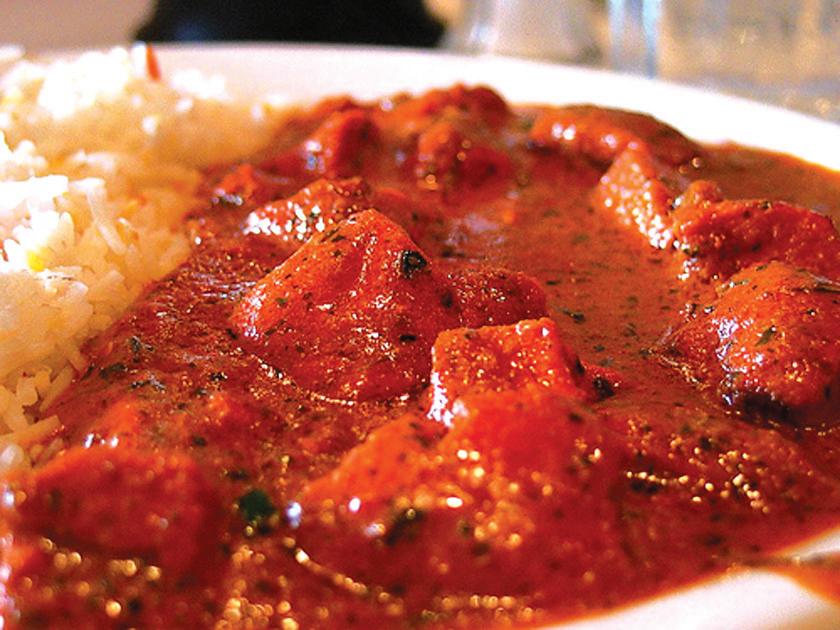




2 <> MAY (2) 2010 INDIAN LINK Spices Thousand simply indian Tuesday to Sunday - Lunch to dinner For catering, special occasions call Amit 0401 266 140 23 The Crescent, Homebush, NSW 2140 Ph 02 9746 1144 Also visit our new take-away my Indian Dining Court, Chatswood Chase Shopping Centre, 345 Victoria Avenue, Chatswood. Restaurant quality food at take-away prices Honest Indian food at honest prices Come and enjoy the real taste of India Now also open for Sunday Lunch

MAY (2) 2010 <> 3 NATIONAL EDITION

INDIANLINK
PUBLISHER
Pawan Luthra
EDITOR

Rajni Anand Luthra
ASSISTANT EDITOR
Sheryl Dixit
MELBOURNE
Preeti Jabbal
CONTRIBUTORS
Preeti Kannan, Noel De
Arvind,
Sydney Srinivas, Priyanka Rao, Sukrit Sabhlok, Saroja Srinivasan, Farzana Shakir, Priya Nair
ADVERTISING MANAGER
Vivek Trivedi 02 9262 1766
ADVERTISING ASSISTANT
Priti Sharma 02 9279 2004
GRAPHIC DESIGN AND LAYOUT
Darren Monaghan
Indian Link is a fortnightly newspaper published in English. No material, including advertisements designed by Indian Link, maybe reproduced in part or in whole without the written consent of the editor. Opinions carried in Indian Link are those of the writers and not necessarily endorsed by Indian Link. All correspondence should be addressed to Indian Link Level 24/44 Market St, Sydney 2000 or GPO Box 108, Sydney 2001
Ph: 02 9279-2004
Fax: 02 9279-2005
Email: info@indianlink.com.au
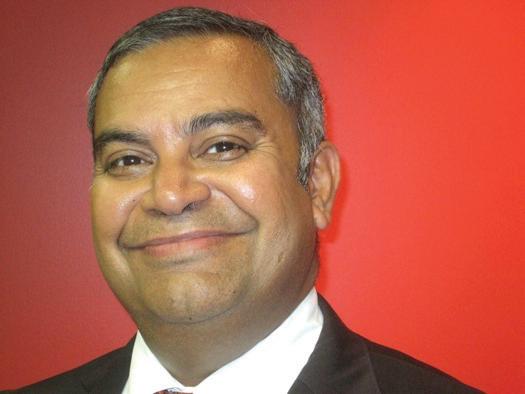
The students’ issue, a year later
It is almost a year since angry Indian students swarmed onto the streets of Harris Park, venting their anger against relentless physical assaults aimed at them.
The protests continued for two nights and turned peaceful streets into angry confrontational grounds between students and authorities.
Racism was seen as a cause for the attacks on the students and this later escalated into a war of words between Canberra and New Delhi. Media in both countries had a field day making accusations - and denials - of racism, even as an effigy of Kevin Rudd was burnt on the streets of New Delhi.
Now, almost a year on, the situation is calmer and the headlines seem to have died down. The effects on the Indian community are profound and while some are good, others have created insecurity and uncertainty.
Firstly, on the positives: the entire episode gave the Indian community a voice in mainstream Australia. The community benefited from giving well meaning, articulate Indian Australians a chance to voice their opinions on what was happening around them and to offer solutions to the problems. For the first time, the local community found itself in the spotlight and it allowed the Australian media and politicians to interact with a number of these newly emerging community leaders. These spokespeople were spread across the spectrum – from the younger generation of students to the older more established Indians in Australia; from the representatives of Indian organisations to the self appointed guardians of the community. While the established players were miffed at having their power base diluted, it also served as a wake-up call to take their responsibilities more seriously, knowing
BY PAWAN LUTHRA
there were others in the sidelines who could get on to the centre stage too. It also was a time to get rid of the deadwood who were entrapped in the databases of the government and media organisations as spokespeople for the Indian community for a long while. When there were intelligent comments needed at times of crises, these individuals or organisations were found wanting. The community has now cleared the decks and there are signs of articulate and aggressive representatives emerging from the community.
While the students’ crisis opened these doors for the community, the negative effects are only just emerging. The community was enjoying the benefits of growth, but the incidents of 2009 seem to have clipped their wings. With the Indian student population increasing by 2009, there were multitudes of Indian restaurants, travel businesses, spice shops etc. which had sprung up to service the needs of Indian Australians. The government’s decision to tighten the restrictions on these students - and this affected not only those studying in Australia and hoping to apply for permanent residency visa but also those students in India who were keen to pursue their studies in Australia - meant that all these small businesses are under threat. Without the robust activity and business from the student market, these small businesses are already experiencing severe pressure to keep themselves afloat. Those which can adapt by either cutting costs or
aligning to a new market, will be able to ride this out; others may find it difficult to survive.
Particularly hit will be those who have taken on debt to start their businesses: this debt, in the increasing interest rate environment, will create further cash flow pressures. Also affected will be the students who were planning to apply for permanent residency in Australia at the conclusion of their studies. These students and by default their support network like their families, may have been counting on the financial options opening for them after they secure their PR, helping pay back any debts they may have incurred while undertaking their studies. They will now not have any of these options available.
For Australia itself, it has deprived itself of not only the revenue these students were bringing to the economy, but also of a future work force which was highly ethical and industrious. As one looks around the economics of Europe where the aging population is soaking up national earnings with their pension, and a declining younger generation, Australia needs to continually renew itself to ensure it does not fall into a similar trap. Long term, a steady flow of new entrants will help ease this problem but for the short term, the Rudd government is counting that its newly released skilled migration list can meet its long term demand. The Indian community, the established as well as the student community, have both undergone a trial of fire in the last 12 months. Indications are that the heat from this fire will continue to burn for a while.

MAY (2) 2010 <> 5 NATIONAL EDITION
Souza, Usha
Shivangi Ambani-Gandhi,
EDITORIAL www.indianlink.com.au
SOUTH INDIAN FAMOUS ASTROLOGER
What’s On
Soorya Society’s fusion dance event
22 May, 7pm Soorya Society presents The Rhythm, a fusion of Carnatic, Hindustani and Western music. Five extraordinary dances – Odissi, Bharatanatyam, Kathak and Manipuri, and one contemporary style, will be presented by twenty-five of India’s most celebrated artists, and in the spirit of Gandhi’s charity, all proceeds go to The Sydney Children’s Hospital, Westmead. Seymour Centre, Corner of Cleveland Street and City Road, Chippendale For bookings call Box Office 02 9351 7940 or visit www.seymourcentre.com
Hindustani classical music concert
DURGAMBA ASTROLOGER & PALMIST:


Pandith : Hanuman
Expert in Palm Reading & Face Reading
We can predict your past, present and future. Everyone in this world have problems, if you want to find solutions for your problems, or clear any doubts, this is the right opportunity to Contact HANUMAN
*Health *Wealth *Business *Marriage *Love *Education
*Husband & Wife relationship *Job and *Children problems
100% Removal of Spirits and Magic
FOR APPOINTMENT
PLEASE CONTACT: HANUMAN Shop 103-105 Rawson Street, Auburn, N.S.W. 2144 (Inside Indian Supermarket)



Mob. 0435 880 647
23 May, 5pm An evening of classical music in the traditional baithak style, featuring Adrian McNeil on the Sarod accompanied by Bobby Singh on the Tabla. Acharya’s Yoga Centre, Level 1 373-375 Pitt St (near the corner of Liverpool St), Sydney. Details Bobby Singh 0411 708 518.
Mantra: A Bollywood Affair at Sydney Uni
28 May, 7pm Enjoy traditional Bollywood fare at Mantra, featuring DJ Sunil Spinz, DJ Rav, MKF Sufi Fusion Band, Platinum Dholis and a Tikka ceremony. Manning Bar at Sydney Uni. Details Astha Singh 0432 342 991
Fund raising for seniors
29 May Sri Om Care is porganising a charity dinner to raise funds for their home-visit program to care for community elders. Enjoy a unique three-course meal at Taj Sweets at 25, The Crescent, Homebush (from 6.30 pm), and participate in the light entertainment program including karaoke.
Details Jay Raman 0410 759 906. Painting exhibition
4 – 31 May Wahroonga-based artist Panchali Sheth exhibits her new works at Tom Dunne Gallery, 11 Little Burton Street, Darlinghurst.
Sydney Writers Festival
17-23 May Indian links in this year’s event include the spectacular Nine Lives at the Sydney Opera House. This performance of rarely seen South Asian devotional music and spiritual transformation will feature the Bauls of Bengal, the Shah Jo Rag Fakirs, Theyyam dancers and the hypnotic sounds of Susheela Raman, all presented by the writer William Dalrymple.
Also, Raj Patel makes his radical and original voice heard in his acclaimed book The Value of Nothing. In a clear and concise manifesto, Patel lays out his guide to changing our market society and redefining democracy
Details www.swf.org.au
Sakhi Sangam
25 July Sydney Sakhi Sangam will be held at the Croatian Club, 921 Punchbowl Rd (Cnr Canterbury Rd), Punchbowl. Details Nandini Thadani 02 9181 2204, Sushma Ahluwalia 02 9894 0070.
Sankara Jayanti
30 May, 4pm The birthday of Adi Sankaracharya will be held at Ermington Hall, Ermington. There will also be a special dharshan of Utsav Murthy of Balaji from SVT Temple on this occasion. Details Nalini Shankar, 02 9802 5805
6 <> MAY (2) 2010 INDIAN LINK
GREAT REPUTATION BEST PRICE
Indian ecofeminist wins Sydney Peace Prize
Indian physicist and environmentalist Dr. Vandana Shiva has been announced as the winner of the 2010 Sydney Peace Prize. She was picked for the prestigious prize in recognition of her efforts towards women’s empowerment in developing nations as well as her scientific contribution to climate conservation.

The 57-year-old activist has been recognised for her her advocacy of the human rights of small farming communities, and her scientific analysis of environmental sustainability.
Shiva will give the City of Sydney Peace Prize lecture at Sydney Opera House November 3, and will be presented with the prize November 4, Australian news agency AAP reported.
Speaking from her hometown Delhi, Shiva said she was honoured to receive the award. “The protection of biodiversity, support for women in agriculture and for all subsistence farmers are human rights issues which I’ll address in Sydney,” she said.
As an eco-feminist, Shiva suggests that a more sustainable and productive approach to agriculture can be achieved through reinstating a system of farming in India that is more centered around engaging women. She advocates against the prevalent “patriarchal logic of exclusion,” claiming that a woman-focused system would change the current system in an extremely positive manner.
Sydney Peace Foundation director, Professor Stuart Rees, said Shiva was an inspiring recipient of the award.
“Many communities are threatened by the consequences of global warming, yet in Australia the movement to address this issue has gone to sleep,” he said. “Vandana’s presence in Sydney in November should wake them up.”
Praising Dr Shiva’s last book, Soil Not Oil, which identifies ecologically sound and socially just ways to protect the planet, Professor Rees remarked, “We should not need the pollution from a massive oil slick in the Gulf of Mexico to remind us of Vandana’s leadership and wisdom.”
Nobel laureates Muhammad Yunus and
Archbishop Desmond Tutu, former UN High Commissioner for Human Rights Mary Robinson, Aboriginal leader Patrick Dodson and journalist John Pilger have also been the winners of Australia’s only international prize for peace.
Writer and activist Arundhati Roy is the other Indian who has won the prestigious award, in the year 2004.
“Vandana Shiva’s work highlights the fundamental connection between human rights and the protection of the environment,” said Mary Kostakidis, chair of the Sydney Peace Foundation.
“She (Shiva) offers solutions to some of the most critical problems posed by the effects of globalisation and climate change on the poorest and most populous nations,” Kostakidis said. “Governments worldwide seek her counsel on sustainable development. She offers solutions to some of the most critical problems posed by the effects of globalisation and climate change on the poorest and most populous nations. Her voice is an essential one as we consider pressing decisions facing the global community.”
While in Sydney, Shiva will also be the guest of 1,500 high school children in a traditional peace festival welcome held at Cabramatta High School on November 5th.

Born in Dehradun and schooled in Nainital, Vandana received tertiary education in Canada where she did a PhD in physics.
She rose to fame during the Chipko Movement of the 1970s, in which women activists adopted the approach of forming human circles around trees to prevent their felling.
She is also one of the leaders of the International Forum on Globalization, (along with Jerry Mander, Edward Goldsmith, Ralph Nader and Jeremy Rifkin), and a figure of the global solidarity movement known as the alter-globalization movement. She has argued for the wisdom of many traditional practices, as is evident from her interview in the book Vedic Ecology (by Ranchor Prime) that draws upon India’s Vedic heritage.
IANS and other sources
MAY (2) 2010 <> 7 NATIONAL EDITION
SPECIALREPORT www.indianlink.com.au
Classical Mother’s Day
It was a homely atmosphere indeed at the Vinayaka Temple in Homebush on the occasion of Mother’s Day.
25-year-old Krishna Panyam presented a Carnatic music recital for nearly two hours. The concert started with a Varna in Kanada to be followed by Bhaja Manasa in Bhudari. As if it were a tribute to all the mothers, Krishna took up Janani Ninuvina in Reethi Gaula. With his gifted voice, the Chittai swaram and the sahitya came out very movingly.
During the concert, Krishna elaborated ragas Hindola (Samaja Vara Gamana) and Kharaharapriya (the celebrated Prakkala Nilavadi) as the main items. The alapanas were very effective. Krishna exhibited his skill as a singer through his intricate swara prastaras. For the latter item it also included swaraprastara in ragamalika and brought out the solid talent of the singer.
The rare Thillana (a composition of Balamurali Krishna) clearly showed that Krishna holds considerable promise. What speed! The Devranamas – Jagadoddarana and Smarane Onde Salade and the all time hit of Theerada Villaiyattu Pillai, were very enjoyable.
For the concert, Sriram Panyam accompanied Krishna on the violin while Narayan provided the Mridangam accompaniment. The concert was organized by Poornima and Nagaraj of Sydney.

Krishna Panyam has been singing since the age of 10, starting his tutelage under the
guidance of Dr. Rama Rao, and later under Ramnath Iyer in Melbourne. He has had the privilege of obtaining advanced training from musical greats such as Flute Maestro Ramani Tyagarajan. He rendered his first
full length concert in 2004 and has since delivered concerts India, Australia and the United States.

He graduated in Electrical Engineering from the University of Melbourne in
2006. Currently working as a reliability engineer with Rio Tinto, Krishna lives with his wife Shilpa (whom he married in December 2009) in Darwin.
8 <> MAY
2010 INDIAN LINK
(2)
CLASSICALSCENE www.indianlink.com.au
Sydney Srinivas
Vocalist Krishna Panyam




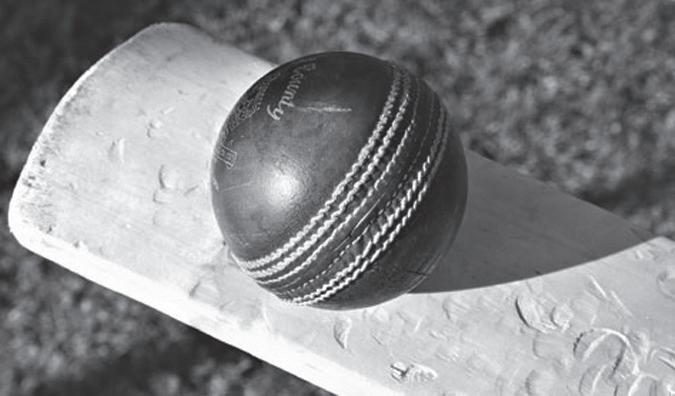












MAY (2) 2010 <> 9 NATIONAL EDITION Subscribe to Indian Link Radio for $9.95 each month. 24 hours, 7 days Indian Link Radio * Conditions apply: Minimum 12 months subcription, $50.00 refundable deposit THIS MONTH ON INDIAN LINK RADIO HITS & MISSES BBC NEWS UPDATE SPORTS ROUND UP JOKES CAMPUS UPDATES TRAVEL TIME TALK BACK COMMUNITY NEWS ANTAKSHARI JUST CHILL BOLLYWOOD TOP 10 ALOO CHAT BHAJANS HEALTHY & WEALTHY BOLLYWOOD BAKWAAS
Bala Samskar Kendra comes to Toongabbie
Bala Samskar Kendra (BSK), the children’s division of Vishva Hindu Parishad of Australia recently opened its second branch at the Metella Road Public School in Toongabbie. Run by Saraswathi Sashi and a dedicated group of volunteer teachers, the Liverpool branch has been operating successfully for over a decade now, teaching Hindu Dharma to over 100 students.
“BSK is a holistic personality development and cultural training program for our children which promotes multiculturalism. The classes are conducted by well qualified and experienced teachers”, VHP Jt Gen Secretary Akila Ramarathinam told Indian Link
The school curriculum is based on Hindu heritage values passed on for many generations, BSK Director Saraswathi explained. The program includes shlokas, moral tales from Panchatantra, Puranas, Bhaagawatam, epics Mahabharata, Ramayana, and other scripture books and how they are related to our day to day life, Shastras or science behind our heritage as well as Yoga and fun/memory games for the mind, arts and crafts.
It is focussed towards the development of strong leadership skills and aimed towards uniting the youth /children across the continental and linguistic boundaries, Saraswathi added.
Ravi Gurukkal formally inaugurated the Toongabbie branch, with a traditional initiation pooja.
Popular classical vocalist and BSK
teacher Jayanthi Narayan started the class by lighting the lamp and taught the children Adi Sankara’s evergreen Sanskrit shloka Mudakaratha
The Sanskrit language class was then introduced by Dr Rugmini, who explained the advantages of learning the ancient language at a very young age. “Incorporating a sound structure, the exceptional features of Sanskrit have been recognised for many centuries,” Dr Rugmini stated.
The wisdom carried by this language appeals to the West as we can see from the huge popularity of Yoga and Ayurvedic medicine, she added.
Inviting more children to benefit from this new facility, Akila Ramarathinam noted that learning Sanskrit aids the child’s diction, pronunciation, articulation and memory retention. It provides oral motor exercise and improves attention span.

“We would like many more Hindu Australians to be part of this great initiative to mould our children to be good, contributing citizens”, added Saraswathi.

The children who attended the inaugural lesson were very enthusiastic and have already learned 3 vowels.
Kirthana, member of Hindu Youth Australia entertained the children with her excellent narrative skills and vibrant stories from Panchatantra and other Puranas. The volunteer team then engaged the children with brain games, yoga and other specially designed sport activities/physicial activities to enhance children’s physical and mental capabilities.
 Usha Arvind
Usha Arvind
10 <> MAY (2) 2010 INDIAN LINK
COMMUNITYSCENE www.indianlink.com.au




MAY (2) 2010 <> 11 NATIONAL EDITION

12 <> MAY (2) 2010 INDIAN LINK

Bringing India’s spiritual treasures to Sydney
BY SHIVANGI AMBANI-GANDHI

City of Djinns changed the way I, an Indian, looked at Delhi, transforming it from a city of smog and dusty old bureaucrats, to a city of a living, vibrant history, waiting to be discovered. Later, his White Mughals and The Last Mughal, showed us another aspect of India under the British Rajsomething all those history lectures in school could never do.
Dalrymple comes to the Sydney Writers Festival once again this year - and he brings not only his new book Nine Lives, but also an associated show of south Asian devotional music and spiritual transformation.
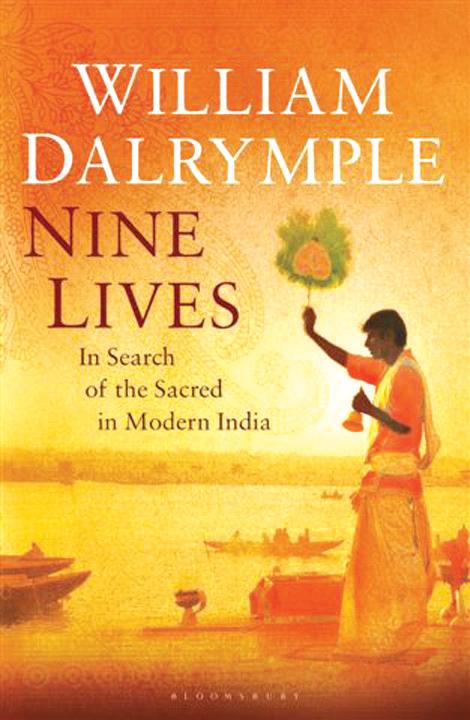
Here, in his characteristic witty style, Dalrymple talks to Indian Link about the book and the show, as well as his own experiences in immigrating to India, travelling for 25 years to peek into its complex social, historical and religious textures, and also running the critically acclaimed, as well as hugely popular Jaipur Literature Festival.

You are often referred to as a travel writer and Nine Lives as a travel book... do you still see yourself as a traveller in India after having lived there for all these years?
I’ve lived in India 25 years. It’s my favourite country and Delhi is home; and yet I can never be fully Indian - even in the way my Delhi-educated kids could be. Some part will always be Scottish. It’s the classic immigrant’s dilemma.
I refer to myself simply as a writer, rather than a travel writer: after all, I’ve written a variety of different types of non-fiction, and most of my recent work has been historical; but given that I’m still itinerant in all sorts of ways, so maybe a travelling writer is the best description.
Religion often divides people in India - quite violently too. Keeping that aspect of India in mind, why did you decide to write this book? And how in your research, did you find diverse religions co-exist in India? How much of the “unity in diversity”, and “religious tolerance” is a reality?
The politicisation of religious intolerance is something, sadly, that unites South Asia: as true of Taliban Peshawar as it is of Bal Thackeray’s Bombay. But while politicians divide, popular religion unites: a Sufi shrine in Sindh, a Baul Mela in Bengal, a theyyam dance in Kerala. All these attract devotees across religious divides, and act as balm on the festering wounds and divisions created by malignant political power.
As for why I chose to write this book, it was curiosity more than anything else: a fascination for the way that modernity has altered religious practice: the way that my theyyam dancer, Hari Das, spends nine months a year as a prison warder; how the idol maker in Tanjore now manufactures for the
Tamil diaspora in California, Neasden and New Jersey, and the fact that his son wants to become a computer engineer; how a naked Naga Sadhu I met above Kedarnath can have an MBA, and a tantric skull feeder I met in Birbhum has children who are opthamologists in New Jersey.
In The Red Fairy you write about Sufism as a popular movement that seems to bridge the gulf between Hinduism and South East Asian forms of Islam... can you talk a little more about this aspect? Did you find any other such ‘bridges’?
Sufism has always acted as a bridge between Islam and the religions that surround it: Coptic Christianity in Egypt, Orthodox Christianity in Turkey, Zoroastrians in the Persian world and Gujerat, Hindus in South Asia and Buddhists across the Far East.
But Hinduism is an even more syncretic religion, and the way it cross-fertilises with say, Christianity or Judaism in Kerala, or Buddhism in Cambodia, is extraordinary. The porousness and malleability of Hinduism has always been one of its great strengths, and it’s sad to see the way that modern urban Hinduism -- especially the mainstream Vaishnavite sects of the North and the Shaivite ones in the urban south -- have lost some of this richness, with
a hardening of belief and practice that has made the religion in its modern urban middle class form behave more like the Semitic religions: something text-based and self-consciously defined, with clear and firm boundaries.
In the Introduction to the book you talk about the fast paced change in India and its impact on religious diversity. What do you see as the impact on India’s religious diversity? Homogeneity and the death of many such religions? Is this book then a call for preservation?
It’s a very personal and subjective belief, but for me much of the richness of modern Hinduism exists on the fringes. Real religious diversity survives mainly in the villages and in the provinces, and it is very much on this traditional fringe that this book focuses: on the ancient regional sects and cults, many of them deeply heterodox, that are often forgotten -- the Bauls and Tantrics of Bengals, the incarnating theyyam dancers of Kerala and the epic singing bhopas of Rajasthan. These are fragile survivals of a more ancient and syncretic world, and things that deserve to be celebrated and written.
For example the Epic of Pabuji is a Rajasthani variant on the mainstream Ramayana: in it, it is Pabuji who goes to Lanka, and he does so not to rescue his kidnapped wife but to rustle cattle.
14 <> MAY (2) 2010 INDIAN LINK SPECIALFEATURE
Hinduism is a syncretic religion, and the way it cross-fertilises with say, Christianity or Judaism in Kerala, or Buddhism in Cambodia, is extraordinary
But today, the camel herders who used to be the audience are migrating to the cities, and the few audiences these days are prepared for the all-night eight hours declamation of the epic: thanks to television and Bollywood they have only two or three hour attention spans. So the oral epic is slowly dying as the last of the old bhopas are dying, and with the death of the epic, one of the great regional Gods is being forgotten.
In White Mughals you wrote about the many bridges and connections built between the British and the Indians. Growing up in India, we were taught in school that the Hindus and Muslims in India too lived merrily together until the British divide and rule policy. What have you found during your research about the historical relations between these two religions?
It was the onset of modernity, and modern thought, not British policy, that brought about the divide. The evidence is the way the same process of religious polarisation happened across the Ottoman world, much of which was never colonised, yet here too Muslim, Christian, Jew, and Yezidi all fell out as each became self-aware, and fell under the influence of Western ideas of nationalism. The Deobandi movement in Islam, and the Arya Samaj (and later, in a more extreme way, the RSS,) began to un-knit the patchwork of common plural culture more
effectively than the Brits could ever have dreamt of doing.
Can you tell us about the Nine Lives show you are bringing to Sydney - what kind of music will the audience hear, and what can they expect to see?
It’s a wonderful show- I can say that as I’m only the ringmaster, knitting the show together with readings about each performer before they come on. First up, are Paban Das Baul and the Bauls of Bengal, performing the beautiful Tantric teaching songs of the Bauls. Paban is a fabulously charismatic performer. Then we have the Fakirs of Bhit Shah, performing the hypnotic Sindhi songs of Shah Abdul Latif. Then there is a theyyam performance by Hari Das, who will incarnate the god Guliagan the Destroyer and generally let rip. And finally we have the gorgeous Susheela Raman ramping things up with her performance of the thevaram hymns of Tamil Nadu. She’s an extraordinary singer, with real power in her voice, and never fails to get the whole audience to their feet.
Finally, can you also please tell us a little about the Jaipur Literature Festival that you organise? What has been your most rewarding experience running the festival?
I had the idea for the Jaipur Literature Festival in 2004, as wherever you went in the world there were
the directors are unpaid; as a result it feels more like an Indian wedding than a formal lit fest. But everyone seems to love it: Tina Brown dubbed it as the “the greatest literary show on earth”, Simon Schama said it was “the most fabulous literary love-fest on the planet” and Salman Rushdie said it was his favourite literary festival in the world.
In the New York Times, Pico Iyer had this to say about us: “I’ve been to so many literary festivals, from Shanghai to Bogota, and this one is definitely the least dry, the most carnival-like. Where else would you go from Shakespeare to contemporary politics to V.S. Naipaul and then Sufi music - each in such a full-bodied way? The music definitely had a cleansing, clarifying quality after that clash of ideas, like a sorbet in the middle of a rich meal.”
I’ve never had more fun running anything, but it is turning into a major commitment and now gobbles up about three months a year.
Dalrymple at Sydney Writers Festival 2010
Nine Lives: An Evening of South Asian Devotional Music and Spiritual Transformation, Sydney Opera House, Concert Hall, Wednesday, May 19 2010, 8pm. $60/$50.

William Dalrymple Speaks to Sally Warhaft, Sydney Theatre at Walsh Bay, Friday, May 21 2010, 10am. $15/$10.
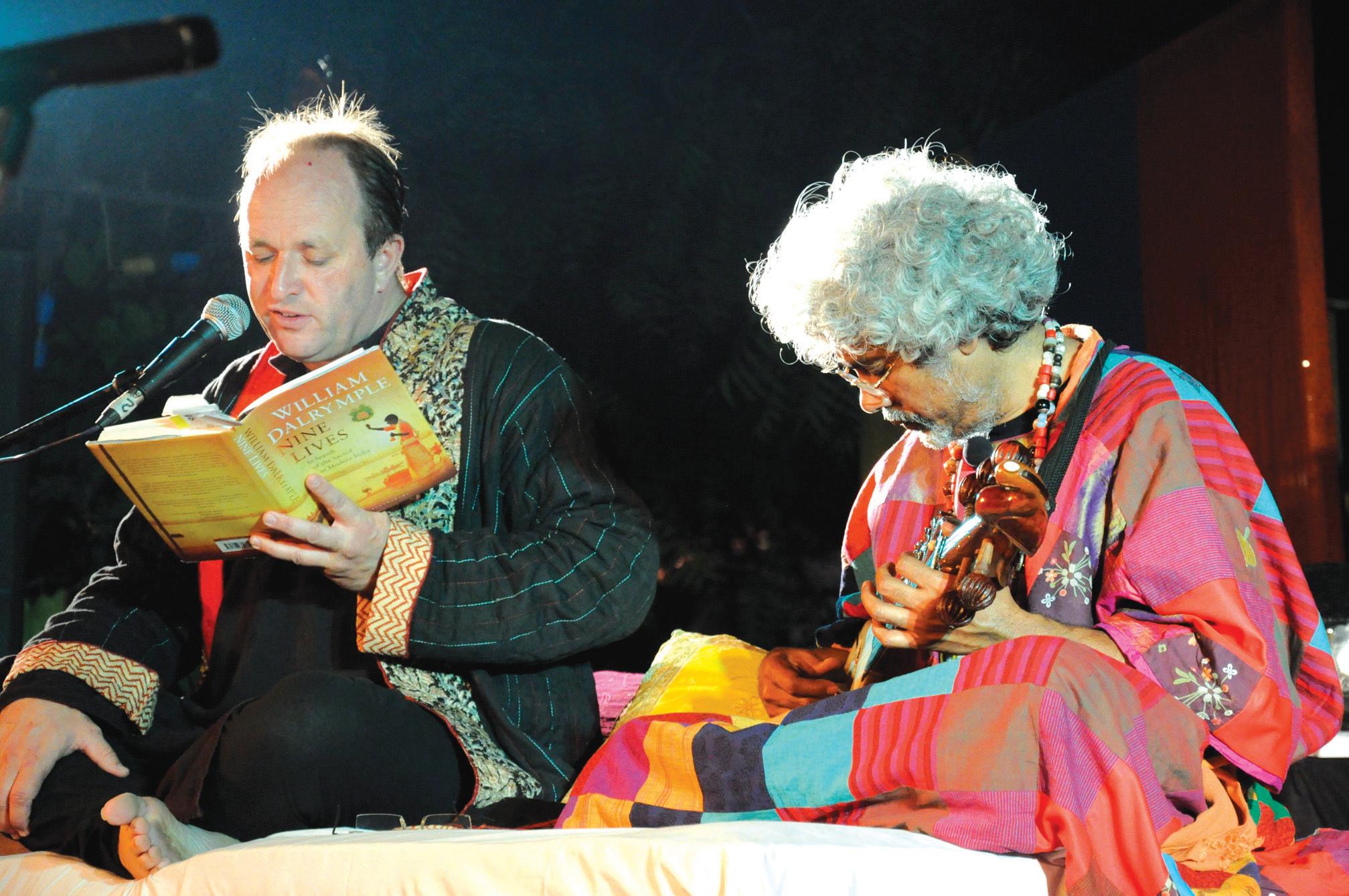

Festival Delights and Dramas: From Jaipur to Sydney via Auckland, Sydney Dance Company, Studio 2/3, Friday, May 21 2010, 14:30pm. Free.
South Indian Inspirations, Riverside Theatres, Lennox Theatre, Saturday, May 22 2010, 12:30pm. Free
The Honey Gatherers: Mimlu Sen and Paban Das Baul, Riverside Theatres, Raffertys Theatre, Saturday, May 22 2010, 11am. Free. Also at Heritage Pier, Upstairs, Pier 2/3, Saturday, May 22 2010, 4.30pm. Free
The Incarnation of the Theyyam, Sydney Opera House, Concert Hall Northern Foyer, Wednesday, May 19 2010. Free.
MAY (2) 2010 <> 15 NATIONAL EDITION www.indianlink.com.au
(Above) William Dalrymple with Paban Das Baul
(Left) Susheela Raman
Photo: Karoki Lewis
Photo: Andrew Catlin
Cheering for Clary
BY PREETI KANNAN

1300 kilometres. 40 days. 35 marathons. This is the target Clary Castrission has set himself when he runs a marathon from Mumbai to Bangalore this August. The young CEO of the 40K Foundation Australia plans to run along highways through the Western Ghats to his destination – all for a cause he and his organisation believe in.
Clary intends to undertake this gruelling task to raise awareness about children of quarry workers around Bangalore and improve the image of Australians among Indians, following the attacks against Indian students.
“We are opening our first remedial school in Bangalore this October and would like to raise awareness on the work we are doing. Also, with a deterioration in relations between India and Australia last year, we thought of what we could do as young Australians, to show Indians that we aren’t a bad group of people,” Clary told Indian Link
He said that while business-to-business exchange hadn’t been affected, enrolments in Australian educational figures had taken a battering. He reckons that since Australia was not investing in ‘people-to-people’ activities that change perception at the grassroots level, it is important to undertake such a mission to improve perceptions between the two countries.
“Australians and Indians have so much in common, and we can tell that from cricket. Australia is the biggest destination for Indian students after the United States, and we felt that something like this marathon will capture the imagination of Indians,” said Clary, who recently carried the Queen’s Baton in Sydney for the Commonwealth Games, alongside other athletes.

Clary plans to start his long journey on August 20 and traverse the Western Ghats from Ratnagiri to Goa, then turning inland to Chikmagalur in Karnataka, after which he will proceed to Bangalore. The entire run would comprise of 35 marathons with five rest days in total.
“We will showcase the diversity of India from its big cities to villages, temples, beaches and market
places. It will be a tourist snapshot, where we will promote the country to Australians back home,” he said.
The marathon runner has been training for this task since last June, beginning by running 30 kilometres per week and increased the pace to 150 kilometres per week. Clary did a recce run in June to familiarise himself with the terrain and the route. He is confident that he would be able to run the marathon despite the condition of Indian roads and the possibility of the onset of monsoons. “We could face a bit of the monsoon and in that case we can’t be as happy, as the chances of getting blisters are higher,” he quipped.

He will be accompanied by a small crew that would include his logistics manager, physiotherapist,
security, escort and two Public Relations personnel, who will constantly update the media on his travel. The NGO is hoping to attract more sponsors as it needs more funding to make the marathon a reality. 40K has already managed to raise AUD$ 50,000 and is looking for sponsors to raise another AUD$ 50,000 for the marathon to take place.
Speaking about the reason behind starting the remedial or bridging school, Clary said that children of quarry workers were often neglected and sometimes begin working when they are just 11 or 12 years old. “In most cases, the parents are illiterate and we cannot just pluck them and put them in schools. The idea behind the remedial school is we can get them to speed to go into mainstream schools,” he revealed.
The bridging school hopes to help about 150 kids, aged between four and ten, cope with regular school, free of charge. Recounting success stories of other children from a partner NGO working with 40K, the Rights Activist said that one of the boys who had joined them four years ago is now aspiring to become a software engineer. While this is their first school, 40K hopes to do a lot more in India.
The NGO, which has been researching extensively on bonded labour, concede that convincing poverty stricken families to send their children to the remedial school will be a challenge.
“Not every family is going to send their children to the school. Hopefully, they will see other children doing well for themselves and be convinced of the long-term benefits. Overcoming problems of child labour and sending children to school requires a generational shift. Even if it is one at a time, it will have a ripple effect,” said an optimistic Clary.
He hopes that the present scenario of poverty and child labour would soon change in India. “With India growing economically, the country is under international scrutiny and has got to learn to deal with being in the limelight. India needs to look at ways to solve these issues,” he maintained.
To volunteer or help 40K raise funds, please email info@40k.com.au or ring 40K at (02) 9221 4030.
16 <> MAY (2) 2010 INDIAN LINK INDOPHILE
It’s a long road for a good cause, but one that’s certainly worth the run
“Australia is the biggest destination for Indian students after the United States, and we felt that something like this marathon will capture the imagination of Indians”
Clary Castrission




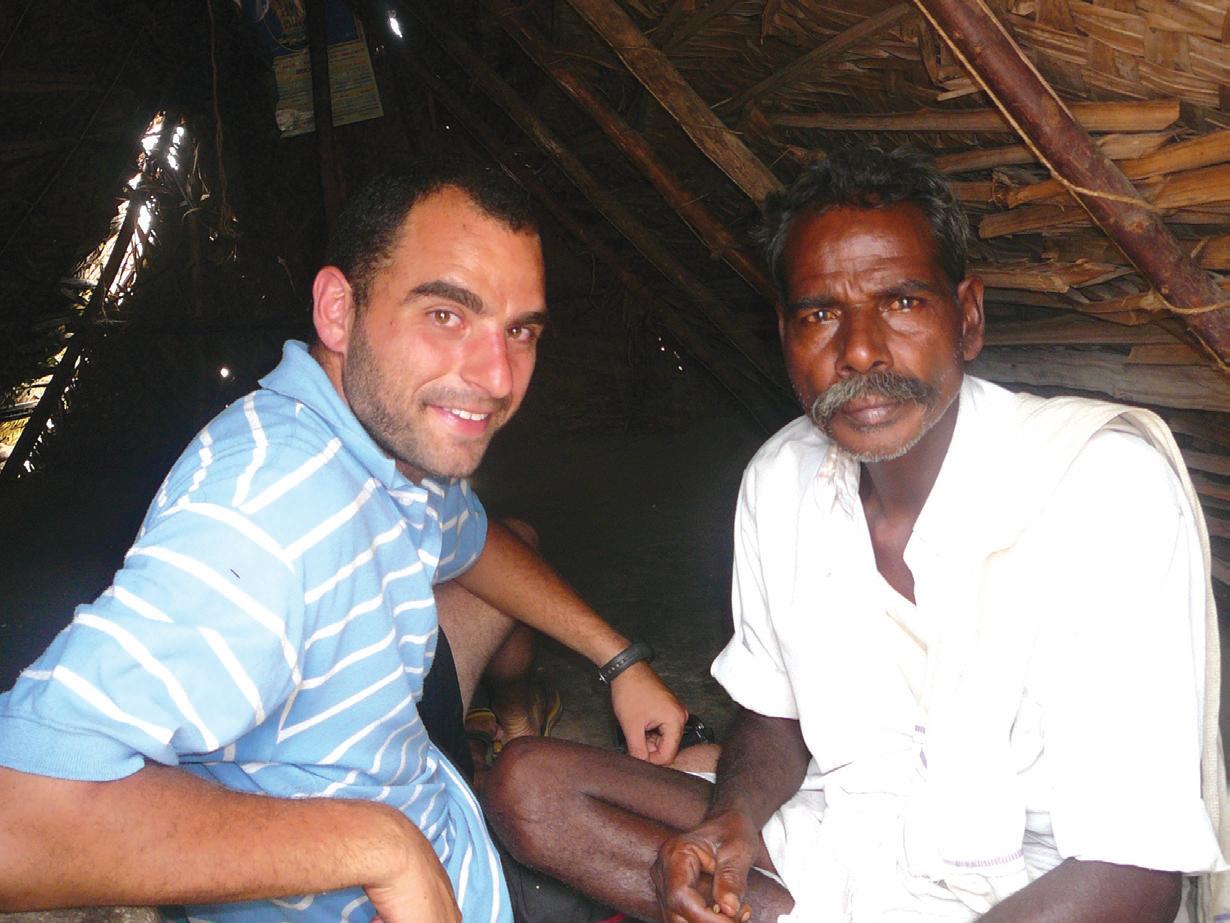
“With India growing economically, the country is under international scrutiny and has got to learn to deal with being in the limelight”
Clary with friends at the quarry
The 40 K Foundation’s school building in Bangalore is on schedule to open in October
Austral Migration Services has a global presence in providing integrated services for your resettlement in Australia & Canada.
Our services include:
• General Skilled Migration (onshore & offshore)
• State Sponsored Visas

• Employer Nominated Visas


• Partner & Family Migration
• Business Migration
• Student Visas
• Advice on various pathways for permanent residency to onshore graduates.



• Advice & Assistance with Professional Year Program.
• MM2H (Malaysia) Program
• MRT Application for Review
• Workplace Assessment & Training in Hospitality (Commercial Cookery, Pattisserie, Bakery & Hair Dressing) in association with accredited Hospitality Assessor

Guidance and assistance in selecting appropriate professional courses based on education and background.
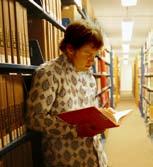
Specialist in International Student Placement.



• Change of Course, University and Education Provider

• Assistance with credit transfers
• Immigration & Visa Advice

• Student Visa and Appeal Matters
• Admission and Visa
Assistance for other countries including Canada and New Zealand.
18 <> MAY (2) 2010 INDIAN LINK Evisalaw Australia Pty. Ltd., Suite 1, Level 3, 533 Kent Street, Sydney, NSW 2000 • Tel.: (02) 92643011 Fax: (02) 92643922 • manish@evisalawaustralia.com CRICOS Code: 02635D CRICOS Code: 01241G CRICOS Code: 02831M Courses available throughout Australia in associations with leading Universities and Institutes. CRICOS Code: 02838D CRICOS Code: 02876J Visitors parking available pursueHelping you a betterlife CRICOS Code: 02938M CRICOS Code: 02928B
CRICOS Code: 02767C Manish Agrawal MARN 0323595 MMIA 2134
‘Desi girl’ hits the town
The ‘mast’ girl, Sunidhi Chauhan, had every fan’s heart pulsating to a ‘rapchik’ rhythm as she took over the stage at her Sydney show recently.
Sunidhi Chauhan rose to popularity from a TV talent show called Meri Aawaz Suno at a tender age of eight. She now has numerous awards to her credit including 3 Filmfare awards, 2 Star Screen awards, 2 IIFA awards and 1 Zee Cine award. Her unique and mellifluous voice has been ringing the Bollywood playback bells for some time now and May 8 saw one of her best performances in Sydney.


The audience were also in for a bonus as Abhijeet Sawant, the most popular and successful Indian Idol winner ever (from its inaugural season), smoothened out some cool, romantic songs in between the main act.
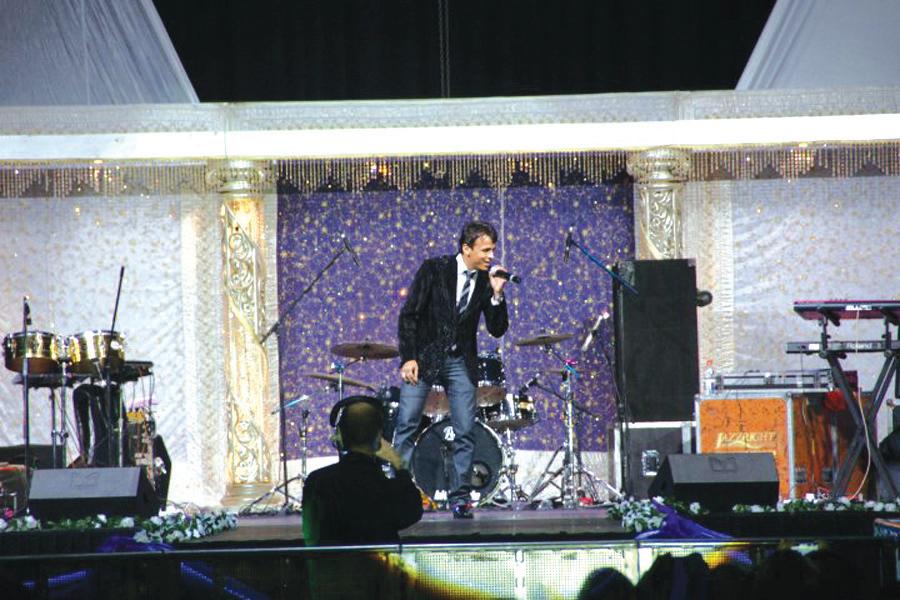
The event was expected to sell approximately 2,500 tickets but it went on to sell far more than the anticipated number, said Anchal Saxena, the Event Manager from AXR Entertainment.
The opening act set the mood straightaway - some easy Bollywood style dancing to some of Sunidhi’s hits put the audience in a ‘mast’ mood. Miss India 2005, Amrita Thapar, playing the host in a lovely green sari, introduced Abhijeet Sawant who opened up the glory with his popular album number Mohabbatein Lutaoonga He continued with a few other Bollywood hits like Twist and Bachna Ae Haseeno. With his confidence and groovy
moves, it was clear he had won the girls’ hearts, who cheered and egged him on.
Sunidhi showed herself up in a cool outfit ringing the blue wavelength in all those eyes out there. She set the stage on fire with Aag hai, raakh hai from the notsuch-a-hit film Ram Gopal Verma ki Aag. She won over the audience effortlessly, with her powerful voice and just-enough oomph, strutting out some hot moves in those cool winter boots. The audience could not help but dance to the new hit remix number from the film Housefull, Aap ka kya hoga. Every singer has a unique way of keeping the audience on their toes and Sunidhi is an expert at turning a new leaf on every original song, giving her own rapturous touch to the already popular melodies.
After a while of staring at the stage with awe, one look towards the side rows showed that there were many unoccupied seats and it seemed that it would be nice to see it jampacked with people. Despite that, however, the crowd seemed to thoroughly enjoy themselves: they danced and cheered and clapped as Sunidhi belted out more of her hits including Deedar de, Raat ke dhai baje, Crazy kiya re, Challiya challiya and many more.
Quite creatively, the event organisers AXR Entertainment brought in adding a dash of colour to the event by incorporating a fashion parade, showcasing

the Desi Girl brand of clothing. Deepti Gujral, a well known Indian model, scorched the ramp adorning the stage in her butterfly delicate look.
However, second half after the break, there was a sense of frustration in the crowd as the clock struck 11 pm. Community audiences are used to short crisp concerts, not a desi marathon. Despite the few hiccups during the event including a late start and a lot of side acts, the spirits were high again as Sunidhi rocked the stage with more hit numbers, making the audience go ‘la-la-la’ along with her. The closing number was the sensuous Beedi Jalaile from Omkara and the show ended at around midnight, even as the audience kept asking for more.
All in all, it was a fantastic event well organised by AXR Entertainment considering this was their first international event. Citibank were one of the major sponsors and their support in an event like this is well appreciated. The Indian crowd in Sydney has seen many such concerts recently including Sonu Nigam, Shreya Ghoshal, Rahat Fateh Ali Khan and so on, and Sunidhi’s concert is yet another landmark on the trail of Bollywood’s glory in Australia.
Jai Ho to the Bollywood spirit!
MAY (2) 2010 <> 19 NATIONAL EDITION
STAGE www.indianlink.com.au
Priyanka Rao
Photos courtesy Astha Singh
Photo: Name here
AIMGA represented Indian doctors in Australia in the annual Mother’s Day Classic fun run and walk. The event raises money for breast cancer research and celebrates the lives of those people whose lives have been touched by breast cancer
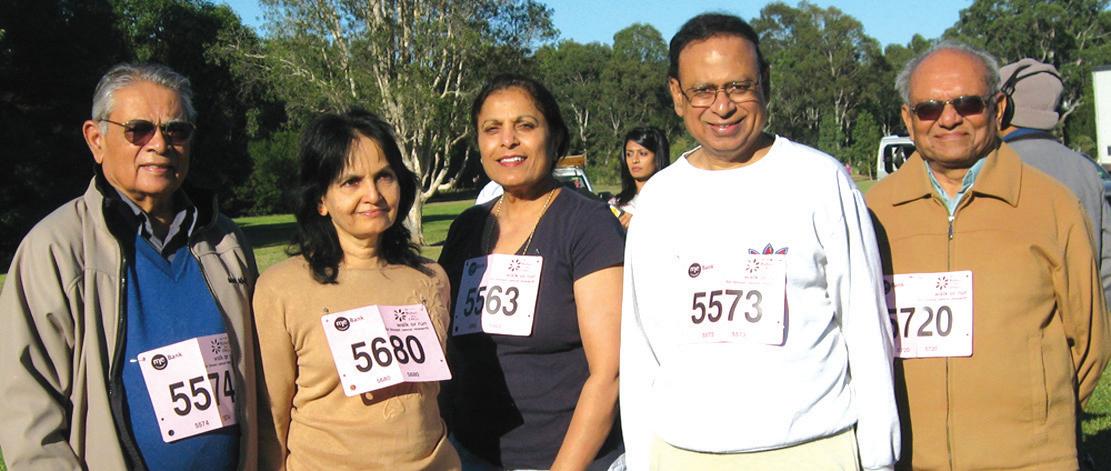
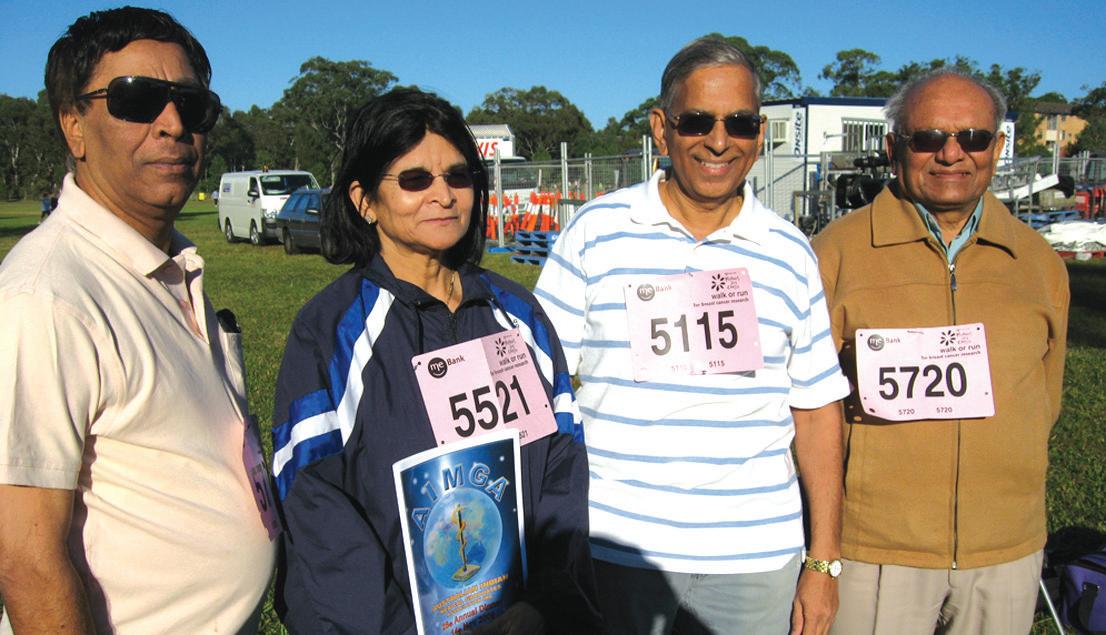
People Places Parties



and friends get cosy with Indian Idol



20 <> MAY (2) 2010 INDIAN LINK
THISMONTH www.indianlink.com.au
Hari and Greg with Amber and Bac on the launch party of their new Eating House and Bar “The Stanley Street Station”
Birthday girl Ria Danwer in her mermaid costume with cousins Ronic and Angad
Astha Singh (extreme right)
star Abhijeet Sawant
Aayush Verma on his second birthday with mum Richa and dad Ankush
Do you have a photo for this page? Email it to info@indianlink.com.au





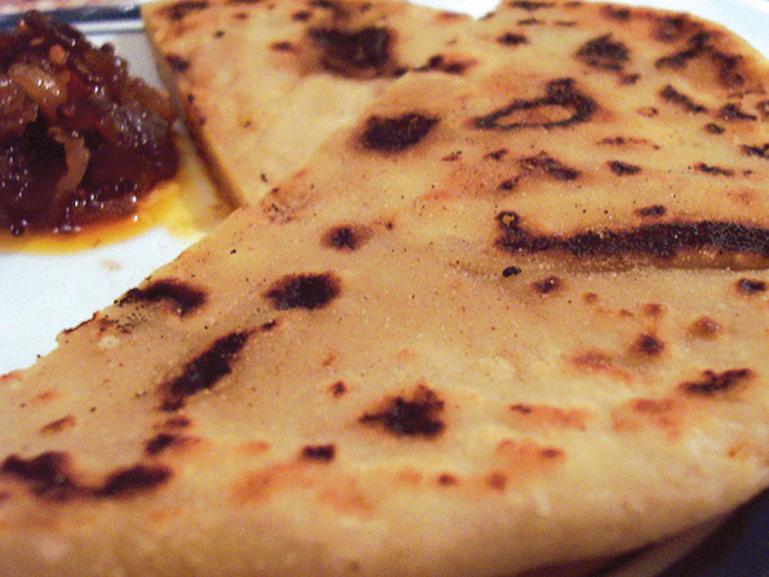

MAY (2) 2010 <> 21 NATIONAL EDITION Singh Food and Spices Blacktown 143 Stephen Street (cnr Sackville Street), Blacktown Phone 02 9676 4677 Fax: 9676 4688 enquiry@singhfoodspices.com.au : www.indianspices.com.au Aspice shop withadifference Quantity Quality Service May Promotion Singh da dhaba and Singh Food and Spices Spend over $40 and over, get FREE 2 garlic naans Spend $50 and over and get FREE papadums AND 2 FREE samosas andFREE rice 139 STEPHEN STREET BLACKTOWN PHONE: 9671 7820 PARANTHA WEEKENDS IN MAY …Beat the chill, come in for hot paranthas Quality Quantity Service VEGETARIAN PARATHAS Poodina Paratha Lachha Paratha Palak Paratha Aloo Paratha Methi aloo Paratha Oriental style stir fry paratha Mushroom and pea paratha Stuffed vegetable and cheese Paratha Paneer Paratha Methi Paratha Mooli Paratha Gobi Paratha Garlic stuffed mali Paratha Masala rajhama Paratha Mattar Paratha EXCLUSIVE FOR SOME Nashe Ka Paratha NON-VEGETARIAN PARATHAS Keema Paratha Chicken Paratha Egg Paratha DESSERT PARATHAS Shakkar Paratha Chinni Paratha All these and our normal menu, all weekend at
An extraordinary talent is taking this Indian origin performer places
BY SHERYL DIXIT
Music is Meera’s world, literally and figuratively. It’s in her heart, her soul and every fibre of her being, as she admits with admirable candidness.
Meera is enjoying the limelight at present, as a member of the girl vocal trio The Belles, who have reached the semi-finals on the hugely popular TV show, Australia’s Got Talent. For Meera and her mates, this is the culmination of months and months of hard work, grit and determination. For Meera personally, it’s been a struggle to get here, but she’s finally made it.

Her uncle is Indian film director Chander Barot (best known for his movie Don), her aunt is playback recording artist Kamal Barot and her cousin Ranjit Barot is an internationally acclaimed tabla player and jazz drummer

“My mum says I sang before I talked,” laughs Meera, admitting that the family joke was that she could mime the theme of Yogi Bear to perfection even as a toddler. Her childhood was happy in Dar Es Salaam in Tanzania, where she was born, the eldest of four siblings. Her family originally hailed from Gujarat in India, and had settled in Tanzania for decades. Meera’s dad, published author and journalist John Bell Thomson met her mother Bala in the unromantic setting of the newspaper office at which they both worked. But that didn’t deter the young couple, and marriage followed with the blessings of the family for this Indian girl throwing in her lot with a feisty New Zealander.
The family moved to Dunedin in New Zealand when Meera was still young, as problems for settlers in Tanzania grew rampant. They began the tough transition into setting within a society in which any race other than white was ‘exotic’.
“I did have identity issues when growing up,” admits Meera. “However, the discrimination I faced at being a minority wasn’t extreme. It didn’t scar me; rather it made me examine my culture intimately and helped me discover and reconcile with all the positive things on my Indian side.”
Her mother however, experienced a higher degree of
discrimination, which was shocking to her young children. But Bala Bell Thomson is a unique woman. She challenged the forces that sought to denigrate her, and instead became an inspiration, not just to her family, but to the wider Indian and Asian community. Bala Bell Thomson is recipient of the Star Of India Award for her work and the longest serving Indian broadcaster for Access Community Radio since 28 years, promoting Indian-based programs.
It is this determination to adhere to the tenets of being Indian that marked Meera’s life from childhood to youth, and remain strong to this day. Diwali and other Indian festivals were celebrated with expected grandeur, and her brother faithfully received his rakhis on raksha bandhan Indian, they lived as Hindus and Meera can still understand Gujarati and Hindi, even Swahili, the language of her childhood.
“I don’t venture to speak them, though, simply because I’d make a terrible job of it,” she quips. The best thing about her family was that John Bell Thomson accepted his wife’s culture and tradition, and supported her all the way. There was never any conflict – about religion, upbringing, even food – an admirable attitude for a husband and father, as the children were never made to feel that there was anything different about their parents’ diverse backgrounds.
And like most parents, Meera’s too wanted her to excel academically at uni level too, as she had done in school. But their little girl seemed to show an unseeming fascination for drama and music, even through her school years.
Perhaps her mother had insider information on the pros and cons of belonging to a family with a notable film and music legacy. Her uncle is Indian film director Chander Barot (best known for his movie Don), her aunt is playback recording artist Kamal Barot and her cousin Ranjit Barot is an internationally acclaimed tabla player and jazz drummer.

“It did make my parents nervous,” laughs Meera. “They were focussed on education, and the entertainment industry didn’t appeal to them as a career option for me. It was fine for me to sing in bands, but the uncertainty that surrounds a career in theatre or music didn’t appeal to them.”
In all fairness, Meera too felt the same as she completed her Degree in Journalism, and joined the offices of the Press Association of New Zealand. Music was never far away though, as she discovered a colleague who played in a band and was, incidentally, looking for a lead singer. They did several gigs together, adding to her repertoire of musical experience.
STAGE
At a wedding in Jaipur
life and future prospects. And it was then that she decided to go back to music.
As a first step in this direction, Meera enrolled at a local music college, to learn contemporary music. It was her first foray into the world of professional music, as her singing up until then had been purely instinctive, coupled with an ear for tone and rhythm. This stage of her life was very hard, and very challenging, she admits. In a desire to learn from the best, Meera discovered that her forte was Opera, and she pursued this with admirable determination, even travelling to audition at the prestigious Royal Northern College of Music at Manchester in England. She celebrated her acceptance with bhajias and beer in London, joined by her father and an assortment of enthusiastic family.
The course took three years to complete, and they were fulfilling for Meera, as she explored not just opera, but other forms of contemporary music like jazz and pop. But trying to get a foothold in the close-knit and very British opera scene was incredibly stressful. It was here that she was exposed to the underbelly of the musical world and its cut-throat competition, its viciousness and pettiness which she found exhausting. But succour was on the way.
Her second husband Pip Brandon, a well-known and accomplished pianist had accepted a commission on board the Queen Mary, travelling overseas for a year. He next joined the Queen Elizabeth II, but this time with Meera, also on commission as a singer.
“Life at sea is very different, very unique and unusual,” says Meera. “The money was good, the work was fulfilling, but you can’t make a career out of it.”
So when they finally decided to settle on dry land, Sydney was their choice of port.
It was a move that proved to be fulfilling in more ways that they could have ever expected. Meera met and collaborated with Stephanie and Sasha to form The Belles, a vocal girl trio specialising in ‘30’s/40’s/’50’s repertoire and The Andrews Sisters hits. Their performance won instant accolades from judges Brian McFadden and Dannii Minogue, and unsurprisingly, a rather reluctant one from Kyle Sandilands, who always seems pained to accept outstanding


performances. The judges and audience reactions were overwhelmingly positive, and a fantastic boost for the trio.
Meera is very excited about their performance and their journey on Australia’s Got Talent
“We worked very, very hard and were very, very dedicated,” she says. “We practiced unceasingly and because we are all so good together, our performance spoke for itself.”

At their first meeting, the girls decided to sing together in an impromptu performance and the outcome was just magical. Despite having different voices, they instinctively blended together to create an effect which was stunningly harmonious. And now, the trio have their fingers crossed (as do we all) that they make it to the finals.
“My life has been one of adventure and opportunity,” says Meera. “Everything’s happened at the right time, and even when I’ve felt despair or frustration, another avenue has opened up and it’s been the right one.” Meera’s strength and support has been her husband and family, who have shared her struggles and success.
And Meera has a long way to go.

“I enjoy Indian music, especially the Indo-jazz/pop versions, and I would love to collaborate with other musicians to explore this avenue,” she reveals. “I find it amazing that Indians living abroad have managed to assimilate into other cultures and still retain their heritage, while creating and presenting their music in such innovative and artistic ways.”
On a recent trip to Jaipur for a cousin’s wedding she sang Close to You to the married couple and was stunned as the audience sang along through every verse. Her cousin Ranjit Barot suggested that they collaborate, which is something she would like to do. “I have sung in Welsh, Italian and even Russian,” says Meera. “And given the opportunity, I would love to study Indian classical music too.”
For Meera, the ideal scenario would be to teach opera in India, while studying Indian classical music.

“It would be the perfect exchange,” she smiles. “I’ll just wait and see what happens in time.”
Bollywood is a distant dream right now, but who knows what the future will hold.
For Meera, life’s currently a rollercoaster ride as The Belles ready themselves for future performances. She is also a vocal teacher overseeing the Jazz Vocal School at The Music Practice in Rockdale, a role that she enjoys immensely as she trains voices. And when she takes a breather, Meera finds herself in the kitchen, cooking up a mean curry for her Indian food loving husband. It’s a busy time for this belle, and we hope that in future, she finds time to bhangra as well.
MAY (2) 2010 <> 23
JaK’s got talent
Kunal Dhawan is jack of many traits, and master of sound and mime

the producer of the revue introduced us together. Since then, we have formed JaK in the Box”, Kunal Dhawan recalled.
BY USHA ARVIND

It was a ripper all right, that put the brakes on Master Chef’s dream run in prime time TV ratings so far.
When Jeffrey Liu and Kunal Dhawan aka JaK (clad in Aussie bush cosies) showcased their quirky talent during the first semi final of Australia’s Got Talent, over 1.5 million viewers across the nation tuned in for the high voltage show.


In its reincarnated fourth series, Channel 7’s reality program shortlist had an eclectic mix that included a child pianist, teen belly dancer and roller skate artists, besides Jeffrey and Kunal’s beatboxing act, with all finalists competing for the prize money of $250,000.
A highlight of their piece was the perfect miming of the complex sound schemes of the didgeridoo, an instant winner with McFadden and Sandilands as well as Minogue who voted with her feet
The dynamic duo not only wowed the live audience, but also got three perfect ticks from judges Kyle Sandilands, Dannii Minogue and Brian McFadden.
Aptly dubbed JaK in the Box, the tongue-in-cheek twenty some-things, who met and hooked up in 2008 at a Sydney University Commerce Revue, demonstrated plenty of innovation, vigour, intensity and fresh humour as they recreated the sights and sounds of the great Aussie Outback. “We both auditioned individually and
Kunal thoroughly enjoys collaborating with Jeffrey and fusing their uniquely different styles. Working with a stage partner, however does require a lot of coordination and planning and thus communication has been essential in our evolvement, he commented.
A highlight of their piece was the perfect miming of the complex sound schemes of the didgeridoo, an instant winner with McFadden and Sandilands as well as Minogue who voted with her feet. “Australia has a vast array of beautiful landscapes and natural sounds. We aimed to depict this through our AGT semi final performance”, Kunal recealed.
A genre of vocal percussion, beatboxing (often associated with hip hop) originated in the late ‘70s and involves the art of producing beats, rhythm and musical notes with the lips, tongue and mouth. “Quite simply”, explained Kunal, “it is a form of mouth vocalisation to reproduce instrumental sounds”.
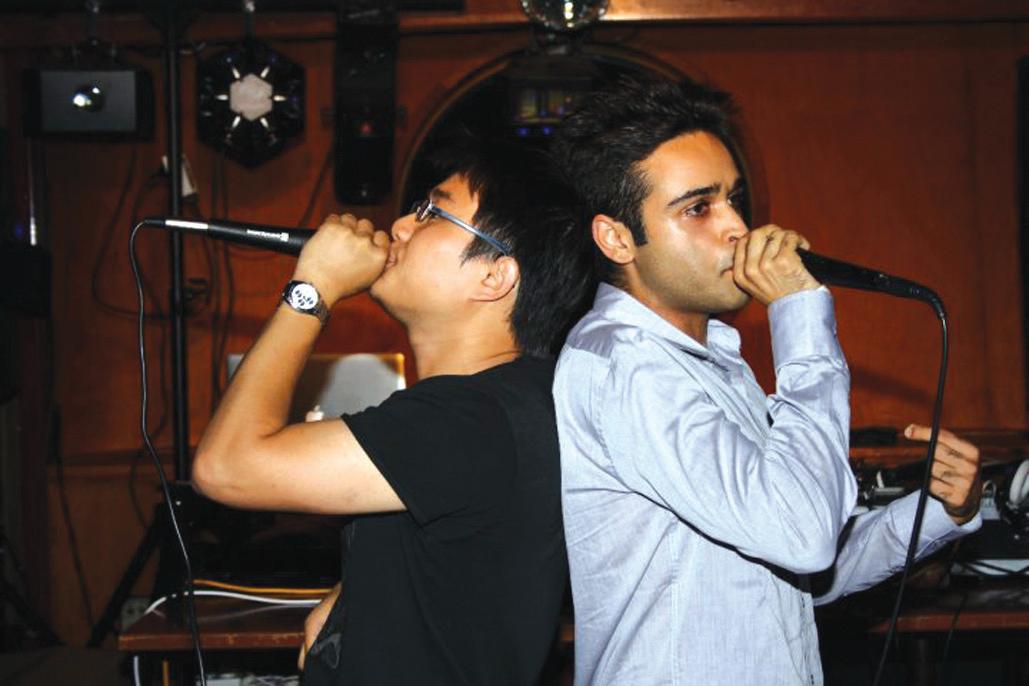
But, why beatboxing? Pat came the response, “It all started a little before my HSC year at Sydney Grammar. My mum would tell me to turn the music off while I was studying and so I would often imitate musical sounds to keep the constant beat flowing through me”. Soon enough Kunal discovered US virtuoso Rahzel, who is often known as “Godfather of Noyze” and “was so amazed by the sounds he could make with his mouth”, that he pursued the art.
Highlights of his beatboxing journey so far include performing in front of school assembly, a solo during a lecture at Sydney Uni, where he completed a degree in Commerce majoring in Marketing, besides several contemporary posts on YouTube. His posts have clocked 80,000 hits and quite a fan following. The icing on the cake of course was making the shortlist of
Australia’s Got Talent
So, does this genre involve rigorous training and voice workouts for perfect sound modulation and miming?
“Not really”, Kunal quips, “I don’t have a strict regime, although I do practise daily in the shower, waiting for the bus or going for a walk. The great thing about beatboxing is that you can practise it anywhere, anytime”.
Likewise, the content evolves over a period of time, with creative inputs from everyone including friends and family as well as numerous musical influences.
“As we progress, we incorporate new elements and finetune our act”, explains the second generation Aussie, whose parents migrated in the eighties.
Kunal’s family has been ever supportive of his endeavours, standing by him at every difficult turn.
The actual AGT journey has been somewhat challenging, he admits, although an excellent learning curve.
“During the heats, we had to arrive at the venue at 8 am and we didn’t go on stage till approximately 10.30 pm. There was a lot of waiting around… On the bright side, just before we went on stage, we met Delta Goodrem, which was awesome”.
The gifted beatboxer, sports enthusiast and gym devotee believes that everyone has a wealth of hidden talents within. The difficulty lies not in performing it but in discovering those hidden talents.
“If you believe you have something to show, then go for it. You never know what could happen. Don’t let your race or gender get in the way of your dreams”. That’s his piece of sane advice for those working through the daily grind.
In terms of future plans, “I am still trying to figure that out”, he chuckles.
Tune in to Australia’s Got Talent to find out if Jeffrey and Kunal are in for a fairy tale ending….
24 <> MAY (2) 2010 INDIAN LINK
STAGE www.indianlink.com.au
Kunal Dhawan with Jeffrey Liu



26 <> MAY (2) 2010 INDIAN LINK

MAY (2) 2010 <> 27 NATIONAL EDITION
Tujhe sab hai pata, meri maa…
It was an entire weekend devoted to mothers, not just the Sunday. The mood was awash with Ma ki baatein and Ma ki kahaniyan on Mother’s Day Weekend at Indian Link Radio. Each and every one of our listeners that tuned in, became part of a lovely tribute that was endearing and emotional to mums everywhere.
Starting Friday 7th evening onwards, Radio host Anamika introduced listeners to the concept, history and beginnings of modern Mother’s Day. General questions such as, what does this day really stand for, and how it is celebrated all over the world, provided a great way to start it all. Anamika then steered the show towards mums in particular, asking all “Apni Ma ko aap kitna jaante hain”? (How well do you know your mum?) People called on air and off air to talk about their mum’s favourite songs, recipes, colours, dress etc. Songs, dedications, memories of days gone by filled the show. A very touching comment came in from listener Harminder of Campsie, Sydney. He remembered his mother in a loving and affectionate way. He said no matter how far or how near your mother is, somehow she instinctively knows what her children want or need.
Tu kitni achchi hai…
Saturday the 8th saw Radio host Sagar bring to air some of the nicest things you can do to treat your Mum on this special day. He talked about 10 good reasons to treat your mum, and the best gifts you can give to a modern mum. This included the latest tech gadgets, of course!! The motherson relationship became the focus of this show and recently married Shreeram and Savitha of Wentworthville, Sydney became lucky winners for their thoughts. Not be left behind for his comments Rejin Nelho of Guildford, Sydney was another lucky guy.
Itna pyar karega kaun jitna ma karti hai…
Afternoon host Anup on the Fiji Indian Show traced the role of a woman in modern times. He discussed the challenges facing a woman in her life today... that of a homemaker and a bread winner. Listener Subhadra Maudgal of Wentworthville took

charge of taking the listeners on a journey of the changing nature of a mother in the past year till now. Sharing a beautiful relationship with her own two daughters, their relationship of love was evident in her voice. Listener Yogesh Chand was supportive of the cause for women in their roles in society.
Aapko mujhse gila hota na shikwa hota…
The evening revved up with anchor Shraddha talking about celebrity mums. (How many can you list? Of course you’d have Angelina Jolie on your list … who else?) Mother’s Day party themes, movies and books - this one show covered it all. Digvijay Jawalkar and Julis Kirn of Sydney gave us some wonderful insights into these topics on air and off air.
Sunday 9th May, Mother’s Day, brought in Radio host Rachita who took us all back to Yaadein: Woh kya kehti theen? (What was your mum’s favourite expression?). It was momisms galore! Now every mom has a unique way of scolding or talking to their kids. We might have dreaded this momism as a kid but when we grow up, it’s what we remember them for. All of it went a long way to make us what we are today...better people. Isn’t it ironic that we do the same with our kids today? Mother-daughter duo Pushpa Kumari and Jubilee Bedi became the darlings on the show for their comments.
“If you don’t learn this, what will you do when you get married?!” Another all-time favourite, “Wait till Dad gets home” turned out to be the winning momism. And of course, Rachita’s mum herself joined us on air from India, having woken up at some unearthly hour. But it was worth it for us listeners – she was just as mast as her chatterbox daughter!
O mummy, mummy, ho jao ready!
To wrap up a truly beautiful celebration, Radio host Priyanka on the evening show, looked at mums under every ruling star sign. A Virgo mum, for example, is generally very particular about cleanliness - she perhaps even cleans up as a mode of relaxation!
words, she coaxed listeners: what you would like to say to her miles away from home?
On-air thoughts from the lovely Gargi, who is known fondly by all Indian Link Radio listeners by now, touched us immensely.
Us ko nahi dekha hamane kabhi par iski zaroorat kya hogi
Ai ma teri soorat se alag bhagavaan ki soorat kya hogee…
Besides this there were jokes, songs and poems to remember those very special women in our lives. A big thank you to all who joined in the shows both on air and off air. Listeners who also sent their thoughts via email, your contributions were greatly appreciated.
Ma, tujhe salaam.
And of course, we heard enough ‘Ma’ songs to keep us going till next year’s Mother’s Day!
So you think you missed it all? You can still look forward to much more on the radio that plays 24/7. Ring 1 8000 15 8 47 to learn more about a subscription.
The shows were produced by Indian Link Radio, conceptualised and directed by Neelam Vasudevan
Winners on Indian Link Radio’s Mother’s Day Special Shows
Anchor ANAMIKA SINGH
Dinner for two at Kaashi Indian Restaurant
Winner: Harminder
Anchor SAGAR MEHROTRA
Two movie tickets to Badmaash Company
Winner: Shreeram and Savitha
Go Talk SIM Card with $20 recharge
Winner: Rejin Nello

Anchor ANUP KUMAR
One movie ticket to Badmaash Company
Winner: Subhadra Maudgal
Audio CD of the film New York
Winner: Yogesh Chand
Anchor SHRADDHA ARJUN
Go-Talk SIM Card with $20 recharge
Winner: Digvijay Jawalkar
Audio CD of the film Race
Julis Kirn
Anchor RACHITA SAINI
Audio CD of the film Badmaash Company, and Go Talk SIM Card with $20 recharge Winners Pushpa Kumari and Jubilee Bedi
Anchor PRIYANKA RAO
Audio CD of the film Badmaash Company
Winner: Gargi Shah
Radio anchors wanted
Closing date: 30 May
28 <> MAY (2) 2010 INDIAN LINK
RADIO www.indianlink.com.au
Indian Link Radio’s Neelam Vasudevan with son Karan
Are you creative? Can you think on your feet? Do you have a talking to people? Good command of Hindi? Upto date with current affairs? Like your Bollywood music? Want to work part time? Early mornings? Late evenings? Weekends? Be part of the Indian Link radio team!!! Email expressions of interest with details of relevant experience to info@indianlink.com.au

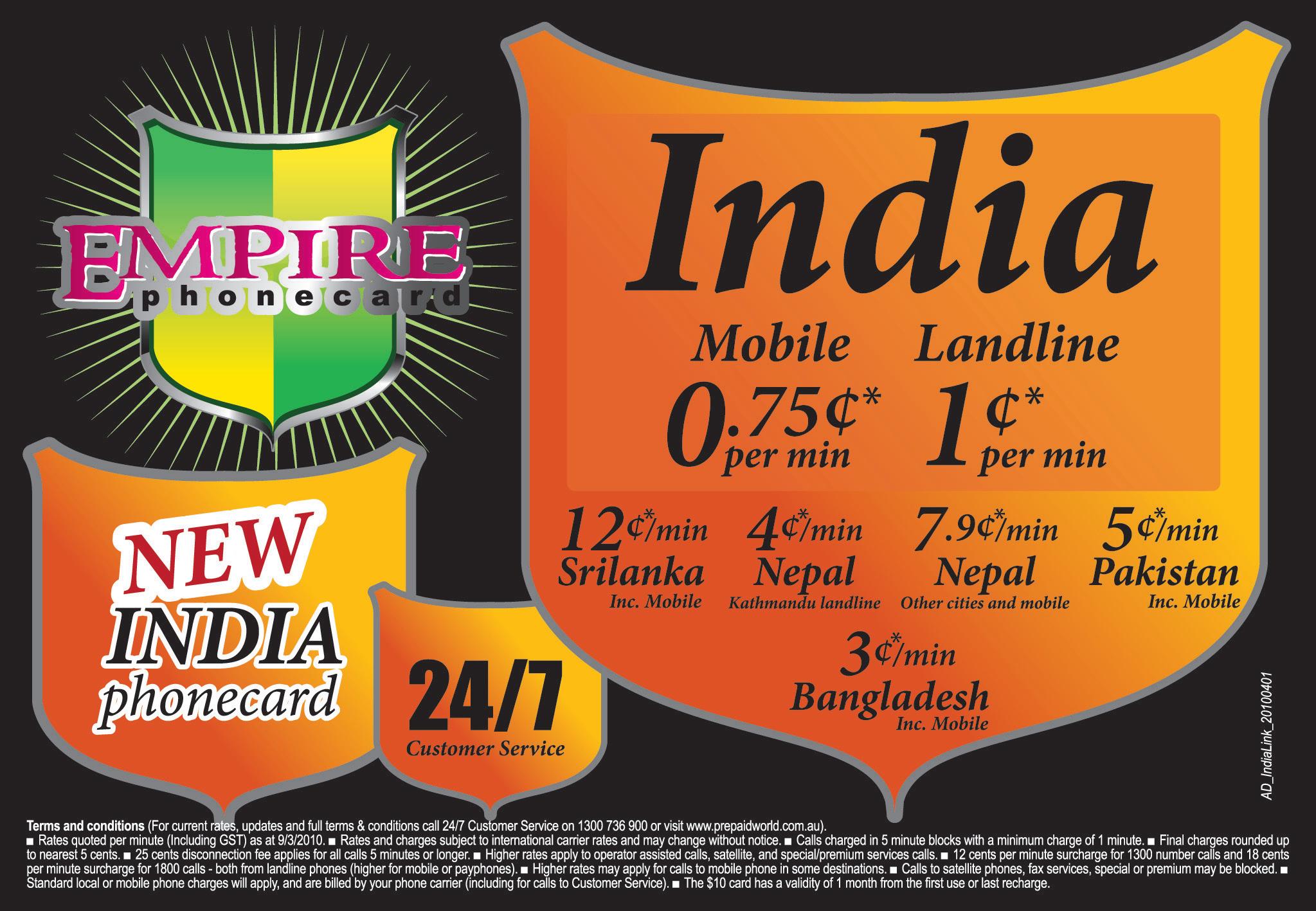
MAY (2) 2010 <> 29 NATIONAL EDITION




30 <> MAY (2) 2010 INDIAN LINK Direct factory outlet @ 21 Berry Street Clyde ALL VEG CURRIES $16.99/kg (Aloo Gobi, Mix Veg, Korma, Haryali Veg,Aloo Mattar ......much more) ALL PANEER CURRIES $17.99/kg (Palak Paneer, Shahi Paneer, Achari Paneer, ...........much more) ALL DALS $14.99/kg (Dal Makhni , Chana Masala, Dal Tadka ........much more ) ALL CHICKEN ITEMS $20.99/kg (Butter Chicken, Kadai Chicken, Chicken Tikka Masala............much more) ALL LAMB ITEMS $21.99/kg (Lamb Korma, Kadai Lamb.................................................much more) Preorder required Catering for all occasion from just $7.99 Special food for Pujas (Veg food without onion and garlic) Jain food also available Call us now on 1300 780 765 or Visit us @ www.garmagaram.com.au
Leader dares to inspire social change
Freelance writer JANE MILBURN meets supercop Kiran Bedi during a study tour to India

There is no room in Dr Kiran Bedi’s head for negative thoughts. As an agent of change working with the rural poor in India, Dr Bedi focuses single-mindedly on a positive future and how she can do things better today than yesterday.
“Literally here and now, you need to be a traffic manager in your mind and drive your own self,” Dr Bedi told Course 16 of the Australian Rural Leadership Program during a study tour to India earlier this year.
“This is not theory. You need to practise every day – being conscious every moment, here and now, you are literally listening to yourself, observing yourself and monitoring yourself. If a negative thought comes there is no room for it because it gets surmounted by the rest of the positive energy that says – there is no place for you, get out. You need to be continually steering yourself. It is a very conscious habit and you nurture it by good reading, good deeds, good environment and doing the right thing,” she said.
Breaking new ground and searching for innovative ways around challenges and obstacles has been the story of Dr Bedi’s life – from student to tennis champion, senior police officer, prison leader, social justice campaigner, motivator and social change agent.
In her book I Dare!, Dr Bedi outlines how she resolutely faced obstacles placed by powerful opposing forces and emerged stronger after each ordeal, including her stymied quest to become the first woman commissioner of Delhi Police and her appointment instead as inspector general of prisons at Tihar Jail in New Delhi.

From her descriptions of breakfast with Prime Minister Indira Gandhi to hugs from Mother Theresa, Dr Bedi tells her story of innovative and reformative policing and is a compelling lesson in positivity and commitment to the greater good.
over, under and around it. As a reformist police and prison leader, she applied herself to thinking about crime solutions. This eventually led to the setting up of Navjyoti India Foundation, to help the impoverished move towards selfreliance through skills and opportunities.
ARLP course 16 visited Navjyoti (meaning, new light) based at Gurgaon, on Sohna Block south of Delhi, to observe its work with women and children in disadvantaged rural communities.
Through the integrated community, women and rural development programs, Navjyoti is providing education, skills, mentoring and support to enable and empower.
“This program is the product of an attitude to crime prevention because I started this when I was a serving cop in 1987. It was a solution to a problem, the problem of drug abuse – the problem of children involved in drug peddling, problem of women and drug traffickers, and the problem of police officers and women,” Dr Bedi said.
“I had a whole constituency of drug addicts who were committing crimes and here I was, a cop who was charged with preventing crimes. The drug addict is a problem to me because he is an addict. If I catch him and send him to jail for five days, his drug abuse is not gone, he comes back with more friends in prison where he linked up with robbers and thieves. I am only increasing my problem by sending him in there. Something in me thought there must be a better approach.”
“Navjyoti was born from that – it was a problem-solving approach. You have got to break the cycle of crime – crime, drugs, jail, bail and back to crime. You have to get to the root of the problem.”
Dr Bedi’s solution was to set up drug abuse centres for men, vocational training centres for women and schools for children to help people deal with crime-related problems.
“I didn’t read it in a text book, I had a problem and I looked for a solution,” she said.
“The police station became a healing centre and people started to flock there for treatment. I had a huge number of volunteers I could ask for help because it was a selfless asking. All I did was put up a big barrack and the centre was ready. I was surprised, but all the good deeds and good intentions started to give rewards”.
“After two years, I was to be transferred and people thought I had to institutionalise this work. Navjyoti was born in 1988 out of people’s demand, not my intention. For five years we operated with no government grant and I would cash in my goodwill cheques. I would tell people, I am doing this for them, what can you do?”
Dr Bedi says the ongoing success of Navjyoti requires it to be absolutely transparent, participatory, truly democratic and totally directed to always looking for solutions and not stopping at the problem.
“It is reaching out to the problem, not waiting for the problem to come. Our rule is to start from the field, don’t start from the office. Reach out where your instinct takes you,” she said.
In a nation where men own the land and still control most of the opportunities, Navjyoti supports disadvantaged women and children to be the best that they can be.
Reflecting on her creative and positive approach to life, Dr Bedi says some are born with a positive mental attitude and some acquire it.
“I was born with it and never unlearned it. My approach is to think about how I can do better than yesterday, not how I can defeat people. I have to be a winner for myself and work out how to do it”.
Dr Bedi’s story has been captured in an award-winning documentary Yes Madam Sir by Australian film-maker Megan http://www.yesmadamsir.com/
Kiran Bedi’s philosophy of life
Kiran Bedi outlined her convictions on life in one of her books I Dare!, which is in its second reprint in 2010 after being first-published in 1995. Below is a short extract.
On childhood Values learnt as a child stay on, unless consciously and persistently unlearnt. On life Birth, being by destiny or accidental, should be considered a basis for take-off and not for relaxation or repentance.
On time management Time management and value for time learnt as a child are two of the most valuable assets earned early in life. On women As long as women continue to be in a position of receiving rather than giving, they shall continue to bear injustice.
On controversy Decision making, in certain situations, is always controversial. The only way one can avoid this is to take NO decisions and leave the problem as it is. Seniors who do not solve a problem become a part of the problem themselves.
On leadership Leadership is a trait that entails responsibility, not merely a position. It is a workshop for doing things and getting things done.
Tough times go, but the tough stay on. On service Service in government is a service of trust. Anyone not doing all that should be done is liable for prosecution for breach of trust.
On the police One of the strongest safeguards of democracy is a professional and humane police service.
Jane Milburn is being sponsored on ARLP by Rural Press Ltd.
MAY (2) 2010 <> 31 NATIONAL EDITION
(Above) Jane Milburn with village women at self-help group meeting
PEOPLE www.indianlink.com.au
(Left) Dr Kiran Bedi and Keelen Mailman




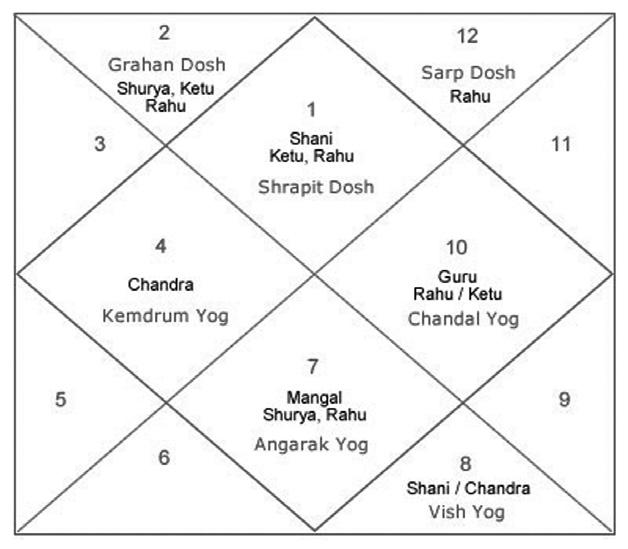
32 <> MAY (2) 2010 INDIAN LINK SHIVA SHAKTHI ASTROLOGY CENTRE Famous Indian Pandit: Venkatesh Swamyji From India to solve all your problems Believing is first Step of life SwamiJi is Expert in Readings of Palm, Face, Horoscope and Thumb Impression (specialist) and know your Past, Present & Future. Are you suffering from any kind of Problems like Love, Marriage, Relationship, Health, Business, Job, Career, Divorce, Education and any other problem? SPECIALIST IN REMOVING MAGIC AND GIVING PROTECTIONS Swamiji will perform Poojas for many Problems Privacy & Confidentiality Povided CALL FOR AN APPOINTMENT M: 0435 930 985 INSIDE THE SHOP -WINMANI CONVENIENCE STORE, 136 MERRYLANDS ROAD, MERRYLANDS NSW 2160
Thousands farewell Bhairon Singh Shekhawat THOUSANDS OF PEOPLE senior politicians, bid a tearful adieu to former vice president Bhairon Singh Shekhawat as his funeral procession began from his home and passed through key areas of the Rajasthan capital.
Shekhawat’s residence saw mourners coming to pay their last respects right from the morning. Former president APJ Abdul Kalam, Bharatiya Janata Party (BJP) chief Nitin Gadkari, senior party leader Arun Jaitley, Gujarat Chief Minister Narendra Modi and Rajasthan Chief Minister Ashok Gehlot were among those present at his residence from where the funeral procession began.
Shekhawat died at the Sawai Man Singh Hospital, two days after he was admitted following complaints of uneasiness and breathing problems caused by a lung infection. He was 86 and is survived by his wife Suraj Kanwar and a daughter.
The three-time Rajasthan chief minister will be cremated near the Vidhyadhar Nagar stadium, some 15 km from his residence, where a memorial would also be constructed.
The veteran BJP leader’s body was first brought to the state headquarters of the party where several people paid their last respects.
The city saw some emotional scenes as his body, being transported in a flowerbedecked carriage, passed through the main markets of the city.
Despite it being a Sunday, the roads were chock-a-block and traffic jams were reported on all major roads. Shekhawat was one of the most popular politicians of the state. He joined politics in 1952 and was a member of the first Rajasthan legislative
assembly.
“He used to love to meet people, talk to them and listen to their problems on a regular basis... It was his routine”, said Arun Chaturvedi, president of BJP’s Rajasthan unit.
Following the death of then vice president Krishan Kant, Shekhawat was elected to a five-year term. He was the country’s 11th vice president from August 2002 to July 2007.
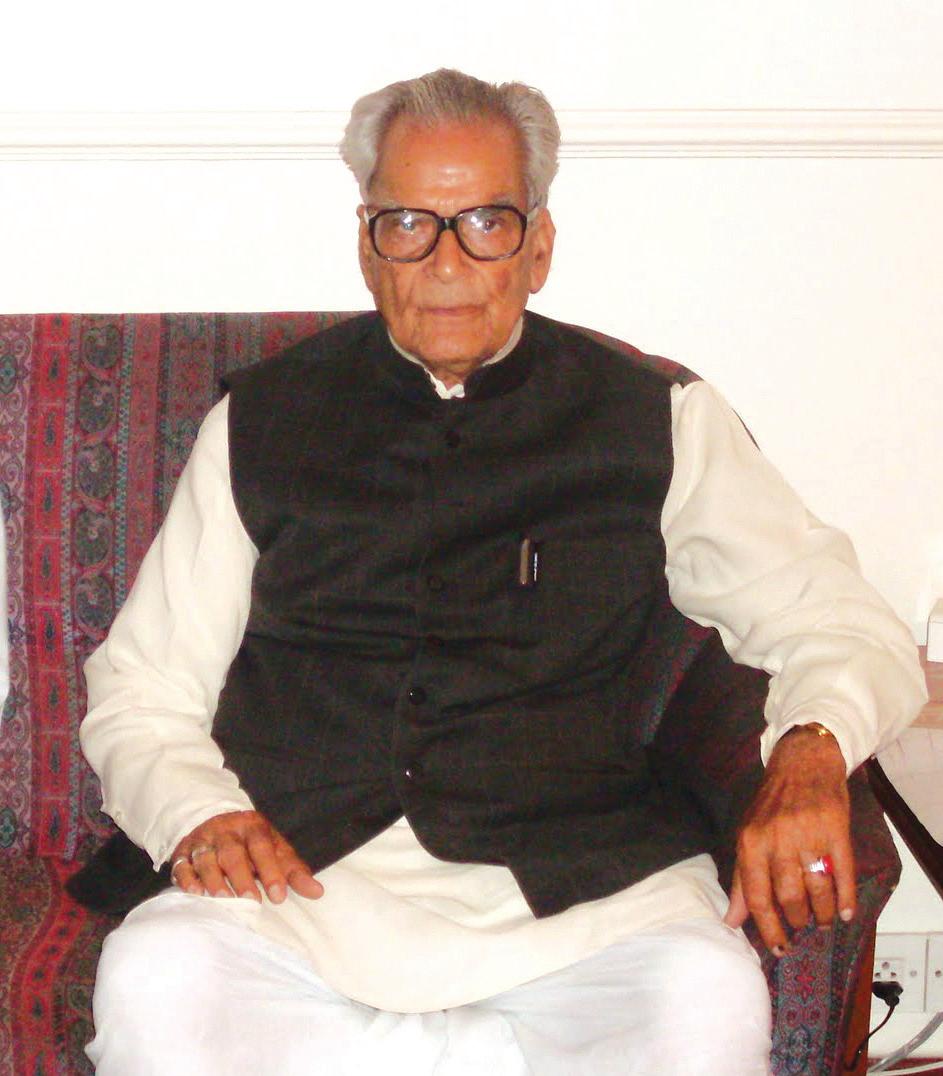
In 2007 he lost the presidential election to Pratibha Patil.
Indian candidates shine, and fade, in British polls
AT LEAST THREE Indian origin candidates, including veteran Keith Vaz, wrested victory in the closely contested British general election polls while some of their Labour colleagues bit the dust.
The three notable winners were Keith Vaz, Virendra Sharma and Marsha Singh. Amongst those who lost were Parmjit Dhanda and Manish Sood.
Vaz retained the Leicester East constituency for the Labour party by defeating Conservative candidate Jane Hunt and Liberal Democrat’s Ali Asghar.
Helped by celebs like filmstar Sanjay Dutt, he secured 53.8 percent of the vote in the constituency, which has a large population of South Asians.
Vaz, whose parents were from Goa and migrated to Britain in 1965, has been a member of parliament for Leicester East since 1987. On July 26, 2007, he was elected chairman of the influential Home Affairs Select Committee.
Virendra Sharma retained the Ealing Southall constituency by defeating another Indian origin candidate, Tory’s Gurcharan
While Sharma polled 22,024 votes, rival Conservative Gurcharan Singh got 12,733 votes and Liberal Democrat candidate Nigel Bakhai trailed at third position.
The others in the fray who lost badly were Green Party’s Suneil Basu, Christian Party’s Mehboob Anil and English Democrats’ Sati Chaggar, BBC reported.
Sharma was first elected as MP from Ealing Southall in July 2007 during a byelection, held after the death of the sitting Labour MP Piara Khabra.
Born in India, Sharma speaks fluent Punjabi, Hindi and Urdu apart from
English. The grandfather of three came from India in 1968 and started out as a conductor on the 207 route.
He enrolled in the London School of Economics on a Trade Union Scholarship.
According to the 2001 census, the constituency has a high British Asian population - around 39 percent, the majority being of Indian origin.
People of Indian origin recorded yet another win when Marsha Singh emerged victorious in Bradford West seat by getting 18,401 votes.
He soundly beat Conservative’s Zahid Iqbal who polled 12,638 votes. Liberal Democrat candidate David Hall-Matthews was third.
Marsha Singh was first elected as MP for Bradford West in 1997. He is a member of the International Development Select Committee.
Born in India, he was educated at Belle Vue Grammar and Loughborough University.
It was, however, not all good news for Indians in Britain.
Indian origin Labour candidate Manish Sood, who called his Labour party leader Gordon Brown “the worst prime minister”, lost badly in the Norfolk North West constituency.
Sood had hit out at Brown a couple of days before balloting. But the offensive did not help him. Sood got only 6,353 votes and finished third.
The seat was won by Conservative Henry Billingham who polled 25,916 votes. Another Indian to lose was Parmjit Dhanda who failed to retain his Gloucester seat.
Dhanda lost to Conservative’s Richard Graham. It had been a close fight with
Continued on page 34
MAY (2) 2010 <> 33 NATIONAL EDITION
??? Data warehousing is now in MODL (Migrations Occupations Demand List) Do consultancy based Professional Projects to get work experience Obtain the best of your time professionally without wasting the valuable time Suite 117, 420 Pitt Street, Sydney. Tel: 9212 4463 INTELLITEX SOLUTIONS Send ASAP your CV to: info@intellitexsolutions.com.au NEED PROFESSIONAL WORK EXPERIENCE Gain in-depth market demanding skills in Data Warehousing, Business Intelligence & Business Analysis thru obtaining practical work experience and improve your employability during this recession time.
Bhairon Singh Shekhawat (1924-2010)
Dhanda polling 17,847 votes while Graham beat him by getting 20,267 votes. Liberal Democrat’s Jeremy Hilton was third with 9,767 votes.
Dhanda had twice won from Gloucester - in 2001 and 2005. Gloucester is an area of diverse industry, including a huge ice-cream factory and a mixture of council and private housing.
Urban amenities for rural India - with private help
Here’s an idea that, if it works, could change the face of rural India. The government has begun partnering private players for rural development with the aim of providing urban amenities in villages and checking migration to cities.
The scheme for Provision of Urban Amenities to Rural Areas (PURA), an idea propounded by former president A.P.J. Abdul Kalam, could well be an answer to the burgeoning problem of mass migration to cities, officials say.
“The cities are falling apart due to huge migration. The difference between urban and rural areas is in terms of organisation of civic amenities. PURA aims to provide to villages the same level of amenities as in urban areas and this will slow the pace of migration,” said a ministry official.
The scheme envisages selection of private players to develop livelihood opportunities, urban amenities and infrastructure of prescribed levels and take responsibility for their maintenance for 10 years in the selected panchayat clusters.
To be initially implemented on a pilot basis at 10 places in the public-private partnership framework, the scheme has generated keen interest among private players with 93 business entities responding positively to the expression of interest notice of the rural development ministry.
The ministry intends to complete the selection process by December and sign the concessions agreement by January next year.
“A tripartite agreement will be signed between the ministry, the state governments and the private partner after finalisation of proposals,” Arvind Mayaram, additional secretary in the rural development ministry, told IANS.
The selected private partners will

be required to provide amenities like water supply, sewerage, drainage, solid waste management, street lighting and telecommunications besides creating avenues for skill enhancement and economic activity.

Ministry officials said the scheme will have a direct impact by reducing migration from rural areas.

According to the 2001 census, the total migrant population between 1991 and 2001 was 98.30 million of which about 22 percent comprised people who migrated from rural to urban areas.
The ministry official said efforts to improve rural amenities through allocation of more funds by the government were not yielding the desired results.
“The government infrastructure never reaches a village in one go. Amenities like road, water and power reach a village in gaps of years, reducing the impact of development,” he said, adding that maintenance of created assets was also an issue as funds provided by state governments for the purpose were insufficient.
PURA envisages convergence of funding from various schemes of the central government, private financing and capital grant.
The private partners selected for the scheme will work for a gram panchayat or a cluster of such panchayats having a population between 25,000 and 40,000. They will be entitled to create revenue earning facilities like village-linked tourism, integrated rural hub, warehousing, agricultural service centre and other rural economy-based projects.
The private players said the scheme was both an opportunity and a challenge.
“It is an innovative but challenging scheme which will create infrastructure in a group of villages in partnership with panchayats. This is what the country needs,” said R.C.M. Reddy, CEO, Infrastructure Leasing and Financial Services Limited, which has submitted expression of interest for PURA.
He said the private players will have an option of building amenities such as lowcost schools, bio-gas plants or affordable housing in consultation with panchayats.
A senior official from Drishti Development and Communications Limited, which has also shown interest in PURA, said community ownership of the scheme was
vital for its success. “It can’t be imposed on panchayats. They should feel good about it,” the official said.
The ministry will scale up PURA based on the outcome of the pilot project. “We will be able to take a decision about scaling up the scheme sometime by 2012,” Mayaram said.
Kalam had laid thrust on PURA in his speeches and the scheme was initially launched by the Rural Development Ministry from 2004-05 to 2006-07 on a pilot basis.
Look up and know the air Delhi breathes
DELHIITES CAN NOW literally, know the air they breathe. Come July and LCD (Liquid Crystal Display) boards across the capital will flash hourly data about air quality. These will also give a forecast 24 hours in advance.
Scientists from the Pune-based Indian Institute of Tropical Meteorology (IITM) have prepared an emissions inventory for the Commonwealth Games. It will prove crucial in managing air quality during the Oct 3-14 event.
The inventory has been prepared using data - number of vehicles, industries, shanties, hotels and restaurants and other sources - collected from near Games venues and the Games Village after a two-month long exercise.
About 250 students from various colleges in Delhi participated in the exercise between February and March. Students, equipped with Click Counters, were positioned at 106 traffic junctions around the venues during the period.
“For air quality management, we need to know the number of vehicles that use the roads around the Games venues on an average basis daily. We found that at each junction 10,506 vehicles crossed per hour during peak hour while 3,037 vehicles crossed during non-peak hours,” Gufran Beig, a scientist with IITM’s System of AirPollution Forecasting and Research (SAFAR), told IANS.
Scientists have also collected emissions data from 70 slum clusters, 881 hotels and restaurants, 5,000 industries and other sources around the Games venue.
The data will act as a baseline emissions inventory for air quality management model SMOKE (Sparse Matrix Operator Kernel Emission).
It is a computer model where data like vehicle numbers, wind speed and humidity will be keyed in and the information will forecast the pollution level 24 hours in advance. The real-time data will help predict air quality 95 percent accurately.
Explaining how the generated data will come handy for air quality forecasting, Beig said: “If on a particular day it is found that pollution level is high, we will recommend to the Delhi government to shut some industries or divert traffic near the venues.”
The IITM will put up 16 outdoor LCD boards and six indoor display boards across the capital. There will be different colour codes for the level of pollutants - oxides of nitrogen, carbon monoxide, particulate matter, black carbon and benzene - in the air.
“At a specific time if the the level of particulate matter or black carbon in the air is high, the display board will show red and if it’s normal it will show green. By seeing the colour codes people will easily come to know about the air quality,” Beig said.
SAFAR will provide information on air quality within a four-kilometre radius at 11 places around Games venues on an hourly basis.
Some athletes have hinted at skipping the Games as they fear that Delhi’s air is unsafe to breathe. But the Games organising committee says it is committed to ensuring clean air as the event has been dubbed the first-ever Green Games.
The organisers are confident that the existing traffic density can be reduced drastically by providing quality public transport by way of more Metro lines and green buses.
The Indian capital is among the most polluted cities in the world and the evergrowing number of cars, and three- and two-wheelers occupy a staggering 75 percent of road space, although only 20 percent of the commuting public use them.
Delhi has over five million vehicles and another four million come to the metropolis from towns in adjoining states in the National Capital Region (NCR).
The Games organisers are keeping their fingers crossed hoping the scientific methods to improve the quality of air in the capital will succeed.
Continued on page 36
34 <> MAY (2) 2010 INDIAN LINK
Continued from page 33


NATIONAL EDITION Sydney, Canberra Melbourne For details call 18000 15 8 47 One paper FIVE EDITIONS
Continued from page 34

I lobby with politicians on youth-based issues: Chetan Bhagat
Best-selling author Chetan Bhagat, who has found a place in Time magazine’s list of 100 most influential people, says it was amazing to interact with “the world’s best under one roof”. He believes his success will keep the hopes of Indian youth alive and would continue to “lobby with politicians” on youth issues.
Bhagat is unlikely to forget the close encounters with international celebrities at the event at the Lincoln Centre in New York May 4. He met actor Ben Stiller, singer Elton John and Oscar-winning director Kathryn Bigelow.
“I had a conversation with Ben Stiller about filmmaking and how he juggles roles between being an actor, writer, director and producer and how he decides what to do when,” Bhagat told IANS on his return.
As for singer Taylor Swift, the author couldn’t help marvel at how young and successful she was.
“About his conversation with Hurt Locker director Kathryn Bigelow, he said: “I chatted with her on how she agreed to do such an offbeat film like Hurt Locker. She told me she’s attracted to odd stuff. Bill Clinton’s speech was outstanding too. He spoke of how the room was unique as people in the room have tried to influence others by their positive work which is different from terrorists who influence by hurting others. It was amazing to see so many of the world’s best under one roof. From known faces like Ben Stiller, Elton John and Bill Clinton to people who are developing cancer vaccines and saving forests, you realize how little you are compared to these people and there is
such a long way to go,” said the writer of books like Five Point Someone and One Night At The Call Centre Bhagat is still pretty much over-powered by the experience of being in the Time magazine list.
“It is one of the truly important moments of my life. Not only because it is a global recognition but also that the recognition came because of influence, something that is the intention behind all my work. It is baffling that I’m the only Indian in the artists category and that there were only two writers globally in the list that includes world leaders as well.”
Bhagat now intends to use his ‘influence’ to impact young people in the country.
“The entertainment is fine; it’s what else I can do with my writing that matters. My columns in the Times of India and Dainik Bhaskar are increasingly about youth issues or suggestions to politicians about improving conditions for youth. My talks continue around the country, over 50 in the last year alone.
“I lobby with politicians on youth-based issues whenever I can. Also, I must continue to be successful in my writing work as a lot of young people see me as like them and get inspired by me. They see me as the rare case where a middle-class boy came from nowhere and left his mark. I need to succeed not only for myself but also for them to keep their hopes alive. That yes, it can be done.”
Bhagat can’t help notice the irony of being accused of cheap publicity at home and being recognised globally.
The bitter experience Chetan had with the makers of 3 Idiots has not disenchanted him towards Bollywood.
“There is no one-big-bad-Bollywood.
To quote a Bollywood movie My Name Is Khan, there are good people and bad people,
everywhere. People know I’m a team player and I bring a lot to the table when I’m in a project, and that’s what the good people care about.”
Modi’s voluminous reply virtual chargesheet against GC members
Lalit Modi, the suspended chairman and commissioner of the Indian Premier League (IPL), is believed to have put its entire Governing Council (GC) in the dock in his reply to the showcause notice slapped on him by the Board of Control for Cricket in India (BCCI).
Modi, in his reply, supported by tomes of documents running into over 9,000 pages, is a virtual chargesheet against all his GC colleagues, as reported by IANS, and it turns the tables on his principal opponents in the Board as well.
Ever since the controversy broke out after he tweeted the names of IPL’s newest franchise Kochi, Modi has maintained that all decisions were taken with the concurrence of the entire GC and he might have carried the argument forward in his reply to say that if he was guilty of any wrongdoing, then all his comrades are as much guilty in okaying hem.
Modi’s reply was collated by three highly reputed companies of solicitors and a battery of lawyers headed by legal luminaries like Ram Jethmalani and Harish Salve. It was submitted to the Board by Modi’s lawyer Mehmood Abdi.
The Modi camp wants an independent panel to go through his reply, not any GC or Board member who is party to the decisions as that amounts to sitting in judgment over their own decisions.
Modi’s reply, packed sleekly in six cartons and delivered at the BCCI Cricket Centre headquarters in Mumbai, contains close
to two lakh SMSs exchanged between GC members and him, thousands of e-mails, agenda papers and the minutes of the meetings, revealing the names of all those who attended and appended their signatures to the decisions.
Modi may have also demanded in the reply that an independent committee to sit in judgment over his reply, not anyone from the GC as they are all party to every decision he has taken.
Based on the reply, Abdi is confident all charges against Modi will be dropped.
“The charges were based on allegations and gossip. BCCI can never prove its allegations. We are confident that all the charges against Modi will be dropped. In fact, BCCI president Shashank Manohar is an well-known lawyer and it will take him few hours to go through the reply. It can be done even today,” said Abdi.
When asked to reveal the contents, Abdi said: “It is for BCCI to share the reply with you. But there are some interesting perspectives of the issues and controversies.”
A Board member, who earlier argued that the suspended IPL commissioner did everything single-handedly, said on condition of anonymity: “If what Modi seeks to prove is correct, then the entire GC is guilty of abetment and they, too, should be suspended along with him.”
“Going by what Modi has been hinting at from time to time, it is now clear that the decisions were involuntary for the GC members, including the three former India captains, to back off. In any case, how can any GC member sit in judgment as part of disciplinary/standing committee over his own decision?” the member asked while speaking to IANS Saturday night.
“The law doesn’t make exceptions for the ignorant”, he added.
Modi questioned the Board basing its chargesheet on unsubstantiated allegations, complaints and innuendos like the Kochi agreement being signed only after a directive from the Board chief, some of the deals being finalised without the knowledge of the IPL Governing Council and his holding proxy stakes in three IPL franchises.

India eyes organic food exports of $1 bn
INDIA HAS SET a target of exporting organic food worth $1 billion in the next five years with its produce receiving wide acceptence in many mature markets of the US and Europe, a top official said recently.
“Through more capacity building and bilateral agreements, India’s organic exports can be enhanced to $1 billion in the next five years,” said Asit Tripathy, chairman of the Agricultural and Processed Food Export Development Authority (Apeda).
“Our vision is to make India the number one organic hub in the world over in the next 10 years,” Tripathy, whose agency has been promoted by the ministry of industry, told a conference on organic foods.
Last year, India exported 135 organic products under 18 categories. The total volume was 44,476 tonnes, realising over $125 million. The overall growth of organic food exports, thus, was 50.31 percent over the previous year.
Around 60 percent of the country’s organic products were exported to the European Union, 20 percent to the US, 5 percent to Japan and the rest to Canada, Australia and East Asian countries.
Currently, India ranks 33rd in terms of total land under organic cultivation and 88th in terms of the ratio of agricultural land under organic crops to total farming area, as per statistics available with Apeda.
Officials explained that under the 11th Five Year Plan (2007-2012), the country targeted the development of five million hectares of cultivable land into into certified organic farmland by promoting a scheme to compensate farmers for the lower yield of such crops.
The reason for emphasis on organic farming was its positive effects on biodiversity and effective soil management that could go a long way in mitigating and even reversing the effects of climate change, as also minimising carbon emissions.
Revenue from 3G auction now over Rs.62,000 cr
THE GOVERNMENT’S PROVISIONAL revenue from the sale of third-generation (3G) airwaves reached Rs.62,253.83 crore ($13.7 billion) and nationwide licence price was Rs.15,416.56 crore ($3.4 billion) after conclusion of 167 rounds of auction to award the spectrum for telecom services in
the 3G services, which will facilitate faster connectivity and enable applications such as Internet TV, video-on-demand, audio-video calls and high-speed data exchange.
Nine telecom companies - Bharti Airtel, Reliance Communications, Vodafone Essar, Idea Cellular, Tata Teleservices, Aircel, Etisalat, S Tel and Videocon Telecommunications - are participating in the online auction process which will end only when the demand is equal to the number of slots available in each circle.
The government has already given Bharat Sanchar Nigam Ltd (BSNL) and Mahanagar Telephone Nigam Ltd (MTNL) spectrum for 3G services on the condition that they pay the same licence fee as would be levied on private players after the auction.
Data on the Department of Telecommunications’ website showed that Mumbai continued to attract the highest bid at Rs.2,910.49 crore.
The provisional winning price for Delhi
bid data, including the winning companies’ names, will be made public only after the auction’s completion and approval by the government.
Azlan Shah Cup: Impressive India share title with South Korea
Defending champions India retained the Azlan Shah Cup hockey title, winning it for the fifth time, after they were declared joint winners with South Korea as heavy rains washed out the final on May 16.
Only seven minutes of play was possible before rains came down heavily at the Azlan Shah Stadium at Ipoh,Malaysia. The teams were declared joint winners after over an hour following incessant rains.
“After discussions and consultations between Tournament Director Paul Richards, the organising committee, with the consent of His Royal Highness Sultan Azlan Shah decided that India and Korea will be joint
champions for the 19th edition of the Sultan Azlan Shah Cup,” the organisers said in a statement.
India won the tournament for the fifth time and second in a row. They had earlier won the championship in 1985, 1991, 1995 and 2009.
This is the first time in the history of the tournament that the title was shared by two teams.
Rain played havoc on the last day of the tournament. Australia won the bronze, beating Malaysia 5-3 while Pakistan ended up in fifth place when they defeated China 6-5 on penalty strokes in the rain-marred contest. Notwithstanding the final day dampner, India had an impressive outing and finished at the top of the seven-team pool with 13 points.
The defending champions started on a slow note, drawing with China in the first match before picking up pace with victories against arch-rivals Pakistan, Australia and South Korea. They slumped to their only defeat of the tournament, losing to hosts Malaysia, but routed Egypt 7-1 in the last game to qualify for the final.
This was the Indian team’s first international outing since the World Cup at home, where they finished eighth and the senior players in the side drew flak for their disappointing show.
The selectors decided to include new faces in the team and left out senior players like Prabhjot Singh, Sandeep Singh and Deepak Thakur among others.
The team responded well under skipper Rajpal Singh in the tournament. Their defence and penalty corner conversions were the weak points, but the free-flowing midfielders played a vital role.
Experienced Arjun Halappa was the fulcrum in the midfield with Bharat Chikkara and Vikas Pillay playing their part. Gurbaj Singh and Prabodh Tirkey controlled the flanks superbly.
Also, the forward line of Tushar Khandekar, Shivendra Singh and skipper Rajpal put up an admirable performance. India scored 21 goals in six matches, six of them coming through penalty corners. Tushar scored five goals for India.
Shop for lease
in Rooty hill, size 145 squares,2 street access,145 square meters and separate back part is 130square meters, close to M7 and M4, newly renovated ,has a cool room, would be suitable for all kind of business example news agency,warehouse,manufacturing bread,supermarket,take away food etc, priced at $440 per week.
First to see it will lease it out.
Please call
Rob on 0424860691 or Joe on 97211611
A great opportunity to start a bussness.

MAY (2) 2010 <> 37 NATIONAL EDITION For expert coaching in Lowest Fee Guaranteed IELTS IELTS GURU Suite -1, 71 A Macquarie St, Parramatta, Phone 0411 520 546, 9687 9741 www.ieltsguru.com.au • Power Packed Sessions.
One and Two Weeks Crash Courses Available. • Money completely refundable, if not satisfied with the first tuition session.
•
IANS
Indian goddesses hit the Aussie runway

SHIVANGI AMBANI-GANDHI reports
Amongst the other high couture creating all the buzz in Sydney as part of the Rosemount Australian Fashion Week 2010 (RAFW) recently, was one designer collection featuring distinctly embroidered kaftans in luscious silks and georgettes, with names such as Maya (Hindu Goddess of illusion), Ratu Gidul (Javanese Goddess, Queen of the Southern Ocean) and Yemaya (African Goddess of the Sea) The designer of the ‘Beach Goddesses’ resort-wear collection is Roopa Pemmaraju, the only Indian designer to have participated in the prestigious RAFW that concluded on 7 May. Having previously worked with Tommy Hilfiger and India’s Madura Garments, Pemmaraju’s eponymous label is now available at 20 stores in major cities in India and Australia.
Pemmaraju’s very first Australian links go back to the Lakme India Fashion Week 2007 - India’s premier fashion event - when her presentation was executed by none other than the acclaimed Australian celebrity stylist, Kelvin Harries. The talented designer talks to Indian Link about the Indian and Australian inspirations behind her sumptuous collections:
What was your vision for the Beach Goddesses resortwear collection?
Beach Goddesses is based on divinities. I am inspired by their radiance and strength. Adorned in gold, pearls and lavish jewels, goddesses are the epitome of beauty and I want my wearers to feel like goddesses themselves.
Can you tell us more about the RAFW event - did you showcase your works along any themes?

My collection was part of the Swimwear Fashion Runway group show at the Overseas Passenger Terminal at beautiful Circular Quay. Dressed in jasmine flower wreaths, the models glided down the runways to The Beatles song Love you to. I choose this particular song as it features a great sitar riff, which suits the theme of my collection perfectly.
We had a world class sitar player to play at the beginning of my show to set the atmosphere nicely.
What was the response to your collection at the RAFW event?
RAFW was the debut for Beach Goddesses and the first time I have showcased my designs on an Australian runway. I was pleased with how it went. We had a vast amount of media coverage, both locally and internationally and it’s all been positive!
What were some of the inspirations behind this collection?
There are several Hindu Goddesses after whom the pieces are named. However, I also sourced out other inspirational immortal figures such as Japanese
What do you think is the appeal of mythic Indian goddesses to the Australian woman?
In the west, the term ‘goddess’ refers to a beautiful, alluring woman, an attractive prospect for any female. My collection provides that opportunity. In luxurious fabrics and ornate, hand-beaded embellishments, it is hard to not feel divine.
I also believe that these days, there is too much
No, I haven’t had any backlash so I’m thankful! I think it is a step to a more open-minded attitude towards fashion.
What kind of fabrics and dyes have you used in this collection?

My main unique selling points are my fabric, prints and colours. I mostly use silk, georgette, chiffon and cotton. Now because I’m venturing into swimwear
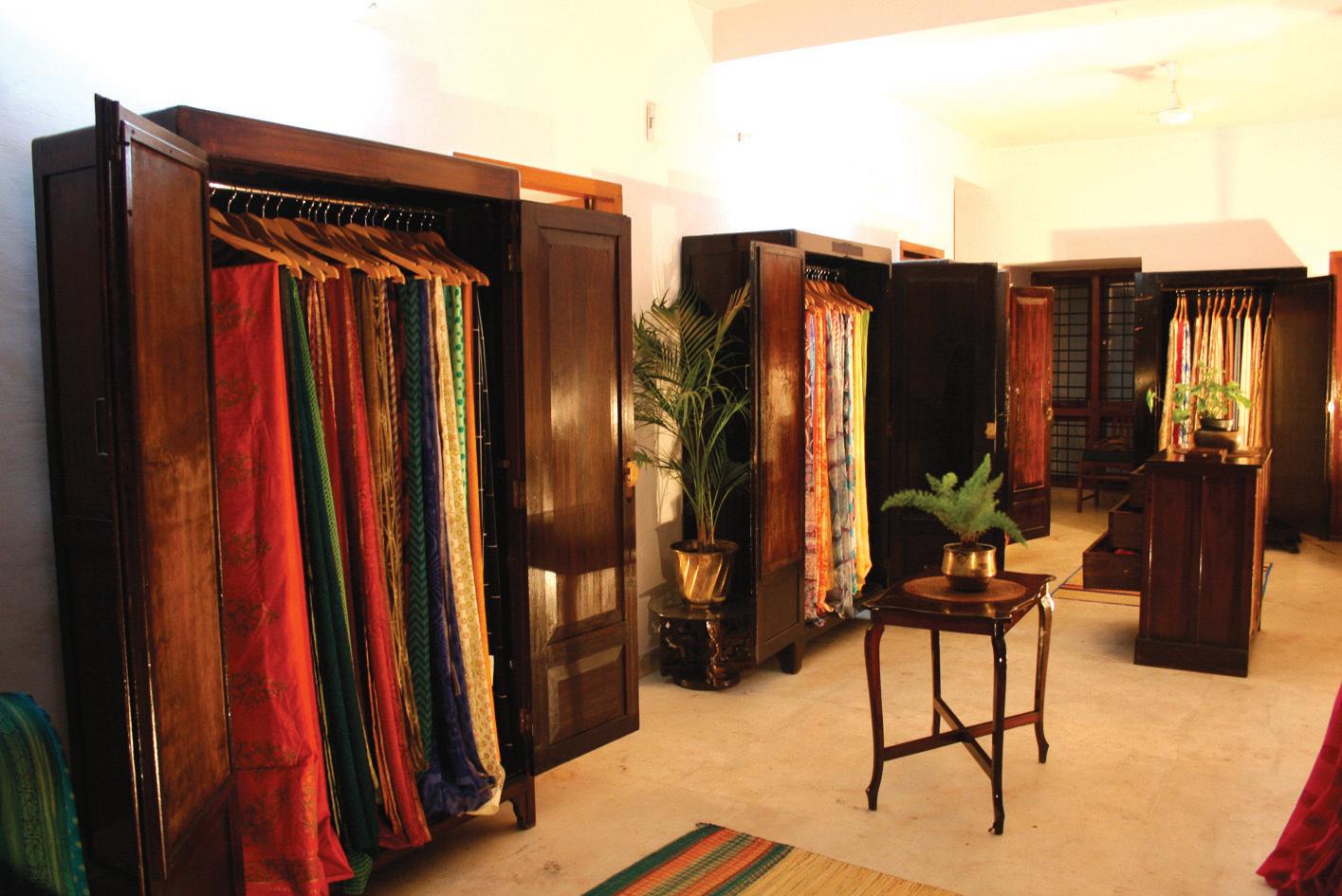
38 <> MAY (2) 2010 INDIAN LINK
Roopa Pemmaraju is set to turn the chic, black and white Aussie fashionistas into vibrant and sumptuous Indian goddesses.
Adorned in gold, pearls and lavish jewels, goddesses are the epitome of beauty and I want my wearers to feel like goddesses themselves
those tones into my collection along with splashes of blue and touches of yellow.
What is the appeal of such vibrant Indian colours in a relatively black and white Australian fashion industry?


Although Australian women adore wearing black and white, especially in cities like Melbourne, while on holiday these women choose to wear bright colours to match the holiday atmosphere. My designs fill the niche where there is the need for bright colours,
My resort-wear collection, featuring only lively hues, were designed to be worn lounging in the sun or under the stars on a balmy night.
You have also mentioned that India’s urban cultures and rural villages as your inspiration. Which particular urban and rural areas inspire you and why? Are these the places where you grew up?
I grew up in Bangalore so I am a city girl! But I do travel often to rural areas to source out fabrics and the antiquated but quality craftsmanship that I put forward in my collection.

In my travels, that’s when I get inspired - whether the city of Jaipur or villages in South India.
And what are some key Australian influences in your designs?
Coming from a background that has such a vibrant culture, it is hard not to be influence by it. Therefore I combined the exotic stonework, hand-embroidered pearl and beading and high quality Indian fabric with western silhouettes to produce garments that the Australian woman would wear. Based on my own research and observations, Australian women wear comfortable garments with fluid lines and appreciate simple detailing, which my designs offer.
What brought you to Australia and why did you chose to study at the Royal Melbourne Institute of Technology?
I came with my husband because he got a great job offer here but I took it as an opportunity to enroll for a Masters in RMIT. It’s great studying in RMIT as I learn a different perspective of the Australian fashion industry before I gain enough confidence to

How different was the RAFW experience from the Lakme Fashion Week?
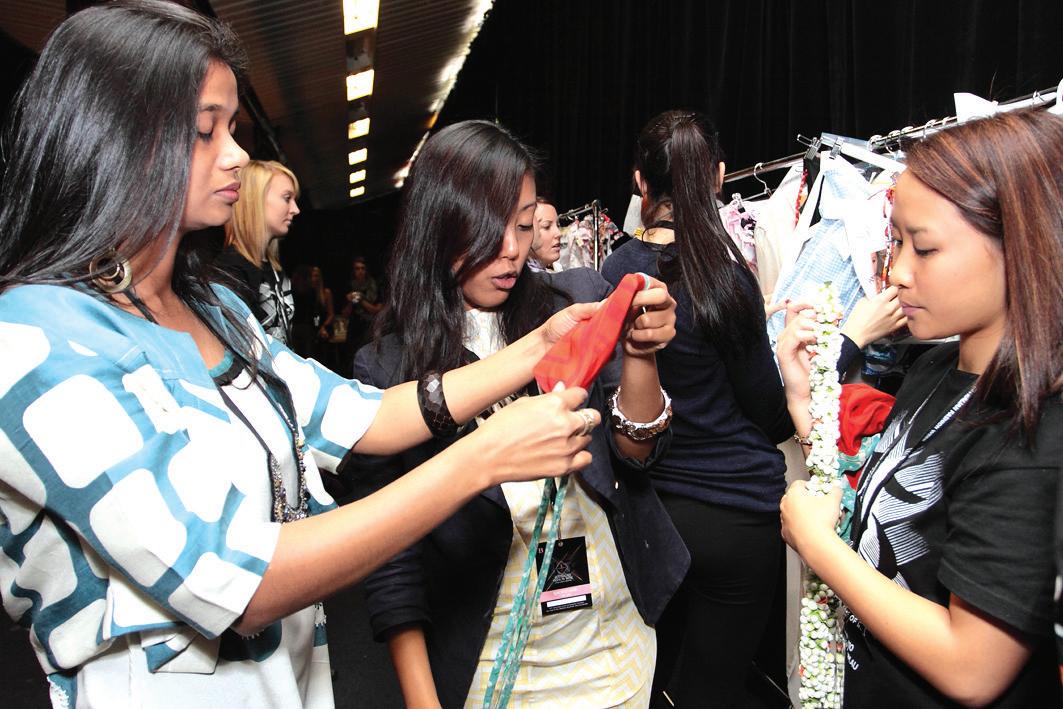
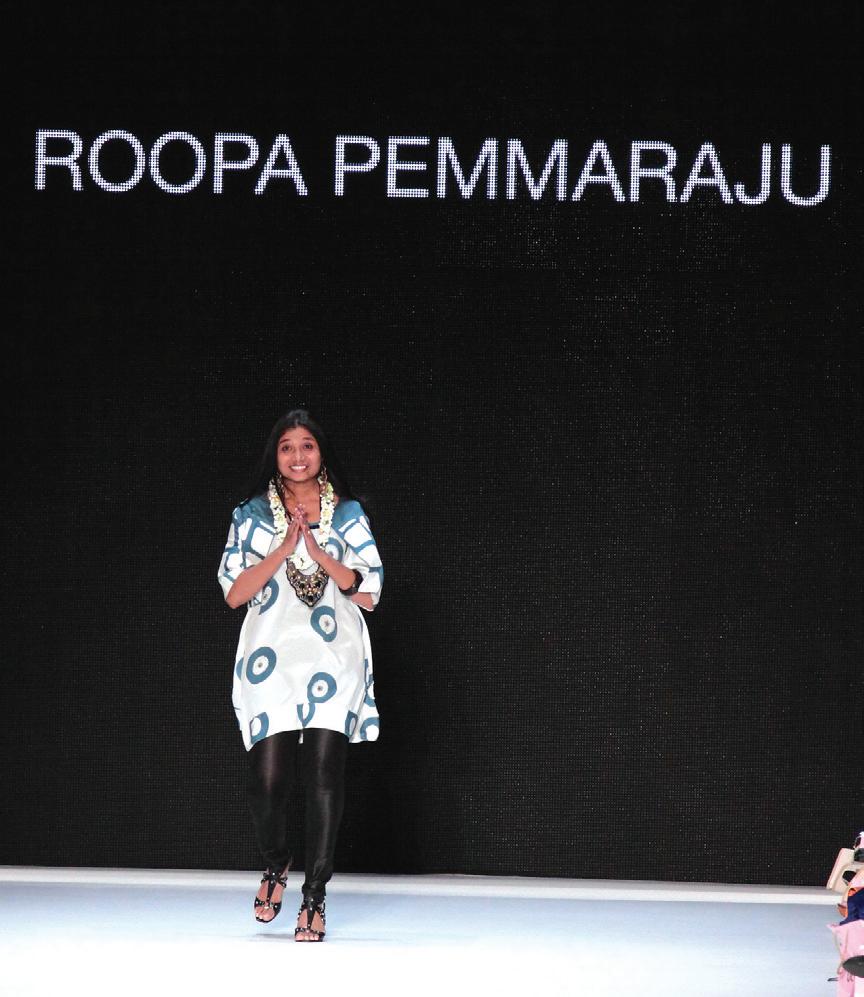
Lakme Fashion Week was entirely different to RAFW. At Lakme you are showing to a home audience - you know their taste and what they like and it was a fantastic response for my first ever runway. RAFW is entirely foreign to me. It was unpredictable and yet I had a good response.
Do you plan to continue to live and work in Australia or India?
I plan to stay here in Australia but I do float between Oz and India often for my studio and my other Indian ethnic apparel line, Calantha Wardrobe. Which stores in Australia stock your collections?
Most of them are in Melbourne and Sydney. We are being approached by several buyers after RAFW so we’ll see how it goes.
Do you have representation internationally elsewhere?
I have stockists in Dubai, US and of course in India.
MAY (2) 2010 <> 39 NATIONAL EDITION
Photos courtesy Eryanie Nor
Ahead of his time, Tagore left a legacy for world
UDAYA NARAYANA SINGH on poet-philosopher Rabindranath Tagore whose150th birthday was observed recently
The year-long celebrations of Nobel laureate Rabindranath Tagore’s 150th birth anniversary kicked off in India on May 9. Rabindranath Tagore (1861-1941), the first Asian author to have won the Nobel Prize in literature, still remains an inspiration around the world. A poet, playwright, performer, musician, essayist, philosopher, and one of the finest storytellers from India (eight novels, four novellas and numerous short stories), he also had over 2,000 paintings and doodles to his credit.
He said in his first talk at Shanghai in 1924: “I say that a poet’s mission is to attract the voice which is yet inaudible in the air; to inspire faith in the dream which is unfulfilled; to bring the earliest tidings of the unborn flower to a sceptic world.”
That Tagore was able to give voice to the voiceless from among the colonised and subjugated nations is history now. But his legacy still lives on because, as MahatmaGandhi had once said about him: “In common with thousands of his countrymen I owe much to one who by his poetic genius and singular purity of life
has raised India in the estimation of the world.”
It was not that he advocated a narrow definition of ‘nationalism’ to equate it with ‘nationism’, but he wanted to keep the idea of Asia and a spirit of universalism that emerged from this continent alive and foregrounded this idea.
For Tagore, the immense beauty that a localised vernacular language had to offer in the form of the best of poetry and writings that he churned out throughout his life, and the local knowledge bases that were created over centuries and millennia, had very special positions.
The youngest of many children, Tagore was born into a Kolkata aristocrat family to Debendranath and Sarada Devi. He had schooled himself as a young child. Yet before him, nobody seemed to have thought about Complete Education as he did in the early 20th century.
In his model of teaching, the school would provide a learning opportunity where there is a communion between man and nature, between liberal and the performing
that encourages repetition is not the education of the mind, because that can be taken care of even mechanically!”.
When Tagore started his school in Santinketan in 1901, he had wanted to include girls as well, but it did not prove practical until 1909, when a further blow to the traditional image of his Brahmacharyashram occurred with the admission of six girl students who were not put in separate classes but rather along with the boys in classes, sports and elsewhere -a radical idea then.
He faced the death of his closest relatives one after the other but these could not deter him from creating the finest writings, music, theatre, and paintings for his legacy.
Tagore’s literary contributions created a large following among Bengali and foreign readers by the beginning of the 20th century, and he published by then such works as Naivedya (1901) and Kheya (1906) - culminating with Gitanjali: Song Offerings in 1912 that helped him win the Nobel Prize a year later.

after his stirring address titled Crisis in Civilization where Tagore observed the darkening clouds of war and destruction gather over the world.
Bengali theatre of the 19th century, which emerged as a product of Bengal Renaissance, was a colonial phenomenon and largely urban in nature, but it was completely revolutionised by Tagore through his numerous plays as well as dance-dramas. English theatre in those days mainly catered to the local British residents.
Tagore had created a new universe of theatre by bringing in a rare combination of traditional musical theatre (‘Jatra’), didactic story-telling tradition (‘kathakata’), singing of bards (‘Kabigan’) and folk-epic narratives (‘panchali’).
In that sense, with him, modern theatre was born in India, without aping the Western stage.
In addition, he created a truly large and varied body of music (over 2,230 songs) in 64 years between 1877 and 1941, where he brought in a rare fusion between the folk and the Indian classical, the traditional devotional songs with the western choir and church music, thus bringing in a rare convergence between the north Indian Hindustani tradition and the southern Karnataki tradition.
Talking about the charm of Gitanjali, W.B. Yeats wrote:

“These prose translations have stirred my blood as nothing has for years.”
Tagore’s legacy is not a simple case of a poet being remembered for some memorable lines. He was a model of a person who had all the wisdoms of the past, and yet was a modernist to the core - making a beginning in several endeavours that he had undertaken in each field he traversed. Even when he experimented with religious thinking and practices, his mission was “divinisation of man and the humanising of god”.
Talking about the charm of Gitanjali, W.B. Yeats wrote: “These prose translations have stirred my blood as nothing has for years.”
Tagore was a widely travelled man and had himself said about his fascination for travel. “I am a wayfarer of the endless road” - starting with his first trip to the Himalayas in 1873 with his father, and then on to numerous countries all around the world. The journey to Kolkata from Santiniketan in 1941 came immediately
This was the reason he adopted a lot of wisdom from ancient Hindu thoughts as well as from Buddhism and Christianity. His reading and commentaries on all religious texts and thoughts have given rise to many important philosophical and ethical questions.
Said Martin Kämpchen, a German specialist of Tagore: “Creative writers like Tagore do not merely produce works of art, but they also create a new art of living which translates, as closely as possible, the essence of their creative impulses into a social context.”
40 <> MAY (2) 2010 INDIAN LINK
BOOKS www.indianlink.com.au
India’s first round-the-globe navigator nears home
SARWAR KASHANI on Dilip Donde’s daring solo journey
Peaceful on a flat sea and having just finished a “nice lunch washed down with a bottle of beer”, Commander Dilip Donde of the Indian Navy had a siesta on a sunny afternoon, sailing in the Eastern Hemisphere.
“Can life get any better?” wondered the first Indian on a solo sailing expedition around the globe. Perhaps yes! Life might just get better when he becomes the first Indian to complete a round-the-world sailing expedition this month. On May 22, he is set to return to Mumbai from where he started the journey Aug 19 last year.
After steering the specially designed 56-ft yacht, Mhadei, for about 10 months, passing the south of the continents of Australia, South America and Africa, Donde during his trip has literally seen the highs and lows of the sea.
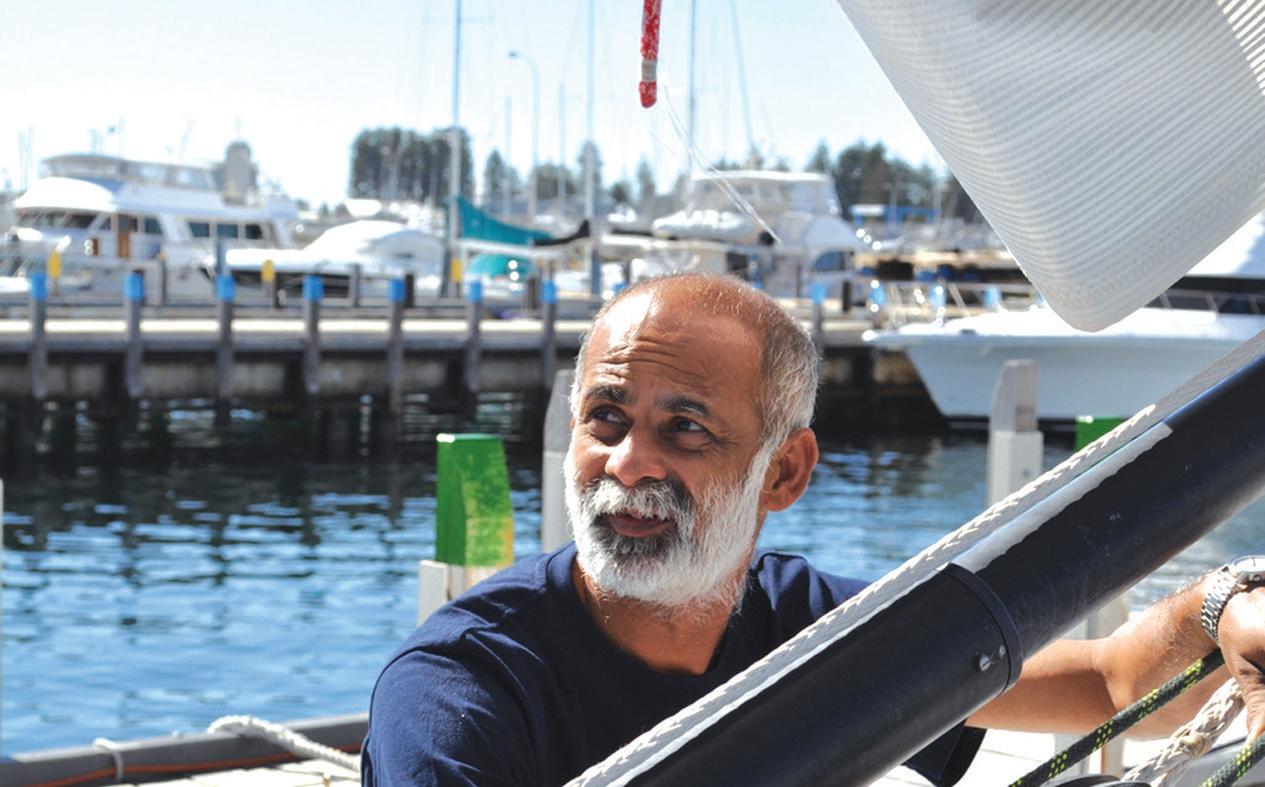


But the 42-year-old officer, a voracious reader and an avid film watcher, never let the stormy winds or high tides cow him down during his voyage. As a cliché has it: “Beyond 40 degrees South, there are no rules, beyond 50 no law and beyond 60 there is no god!”
On one fine morning after getting out of the thundering easterly winds, he was getting nervous as things were going “too smoothly”.
“Just as I was congratulating myself in the morning on finally getting out of the easterlies, both the electronic autopilots (of the yacht) went off...making the motor rotate around itself instead of steering,” he wrote on his blog which he updated throughout the journey.
The regulations are that the vessel should round the three Great Capes - Cape Leeuwin, Australia; Cape Horn, South America; and Cape of Good Hope, Africa
Finally, he fixed the damage but not before hand-steering the ship for a full day and that too when the wind was playing “truant”.
So far, less than 300 people -- no Indian among them -- have completed the feat of covering a distance of more than the length of a meridian, 21,600 nautical miles crossing the equator twice.
The generally accepted definition of circumnavigation under sails also includes that it should start and end in the same port crossing all meridians at least once.
The boat used for the navigation should not pass through any canals or straits, where the use of engines or towing would be unavoidable, and the vessel should round the three Great Capes - Cape Leeuwin, Australia; Cape Horn, South America; and Cape of Good Hope, Africa.
On his enviously adventurous journey - by the end he will have covered 23,400 nautical miles in 277 daysDonde finished reading a number of books, including Peter Nichols’ for Madmen, an account of the first solo roundthe-world by Sir Robin Knox Johnston from Britain in 1968-69.
“I think sailing today is a cakewalk compared to what the participants of that race went through,” he wrote in the blog.
And guess what he did after reading that? Soak in some light entertainment, watching Gentlemen Prefer Blondes, a Marilyn Monroe musical comedy.
One of the memorable periods on the voyage was a day - “a full 48 hours” - the “longest day” in his life. Donde crossed the international dateline Dec 14. And the next morning when he woke up it was still Dec 14 because he was on the other side of
Confused? Yes, that happens! When you cross the imaginary mark on the globe opposite the prime meridian, you will have to reset your clock and calendar.
Crossing it would either mean subtracting or adding a day in the calendar depending in which direction you are moving. “And suddenly from being 13 hours ahead of GMT, we are 11 hours behind.”
It must have been tough to keep track of the time - one of the difficult tasks for the voyager who will return home to a grand welcome.
“It has been a proud achievement for our navy and the country,” Assistant Chief of Naval Staff (Foreign Cooperation and Intelligence) Rear Admiral S.Y. Shrikhande said of Donde’s feat. IANS
NATIONAL EDITION
INDIADIARY www.indianlink.com.au
Commander Dilip Donde in Freemantle
The Mhadei leaves Cape Town
Donde in Cape Town
India’s surging urbanisation
BY NOEL G DE SOUZA
This is the era of urbanisation in the developing world. The developed countries of the West have reached the stage of development when most of their population live in cities and are reasonably serviced. Those countries which are fast industrialising in developing countries are catching up but often in a chaotic and uncontrolled manner. The greatest challenges are coming from the emergence of two billion-plus nations, India and China, into the urban realm. This is something that the world has never seen. It is this great unprecedented urban-manufacturing expansion which is keeping Australia’s economy afloat with China’s and India’s demand for minerals and for foodstuffs.
China, noted for its ability to control and regiment its vast population, has been able to build large million-plus cities with remarkable orderliness, Shanghai being its outstanding showpiece with the World Expo 2010.
Shanghai has a population of 20 million which is close to that of the whole of Australia. Shanghai has the biggest metro network in the world which carries about five-and-half million passengers daily.

India is attempting to put up a reasonable show with a revamped Delhi (population around 13 million) for the Commonwealth Games 2010 in the midst of an apparently nationwide chaotic urban picture. Delhi’s metro, about a fourth in size of the Shanghai system, carries over a million passengers daily.
Australia is preparing for an urban surge mostly caused by immigration. In contrast, Indian city growth is through rural drift. Australia has the option of reducing the pressure on its main cities by lessening immigration. India has no such choice with regard to rural drift. Australians have accepted migrants from diverse places. The point is, however, coming when the existing cities can no longer cope with much more influx. Not only will there be a need for massive infrastructure building to service existing places but also a need for whole new satellite cities.
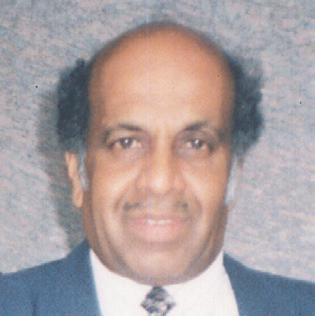

The just-released McKinsey report India’s urban awakening: Building inclusive cities, sustaining economic growth reveals that India, from its current 340 million urban people (30% of its population), is expected to escalate to 590 million people (40% of its population) by 2030. This is just twenty years away and, in that time-frame, it will be
a stupendous task when the estimated area to be built-up is at the rate of the size of one Chicago every year!
India has currently 42 over one-million cities and by 2030 this will have grown to 68 cities. The metros and subways needed to be constructed to service these urban centres, is a staggering 7,400 kms, along with 2.5 billon square metres of roads to be paved.
The report emphasises that with India’s present approach, urban decay will be inevitable. Currently, it says that the record is poor. Only 63% of urban dwellers have access to sewerage and septic tanks. Mumbai treats only 30-40% of its sewage. The report suggests a five-pronged approach which begins with raising funds through property taxes, debt and private participation. After all, developers and property owners have benefited well from urban investment.
Good governance is suggested as essential and this includes devolving power to local bodies. However, keeping such bodies in check by making them accountable is also considered necessary. Given the level of corruption that can ensue in the local setting, this is going to be a very important feature.
It would be absolutely essential that the fruits of urbanisation are not siphoned off by a wealthy minority but get spread to the population at large.
Noting that India’s urban planning has been poor, the report proposes detailed planning including mass transit systems. India’s major cities are linked to their hinterlands, regions and states. The linguistic states are increasingly beginning to consider large cities as their exclusive domains. Perhaps cities planned alongside the surrounding region will satisfy political needs. Workers, foodstuffs, water and electricity comes from within the region. Daily provisions for urban dwellers need to move over road and rail systems, thus ensuring that such networks are given priority in the planning process. Satellite cities within regions will have to be built for the large workforces needed to service metropolitan centres.
Five states are noted as being the most urbanised by 2030: Tamil Nadu (67%), Gujarat (66%), Maharashtra (58%), Karnataka (57%) and Punjab (52%). The report optimistically predicts that 170 million jobs will be created by 2030, 70% of these being in cities. Some of the cities will be larger than many of today’s middle sized nations such as Mumbai (33 million), Delhi (25.9 million) and Kolkata (22.9 million). That is three cities having more than Australia’s total population. Chennai, Bangalore and Pune will be in the 10-million plus category, all being bigger than any current city in Australia. The enormity of the task ahead is great.
42 <> MAY (2) 2010 INDIAN LINK
India has a need for massive infrastructure and development, to service the increasing rural influx into its major cities
OPINION www.indianlink.com.au
It is this great unprecedented urbanmanufacturing expansion which is keeping Australia’s economy afloat with China’s and India’s demand for minerals and foodstuffs
India needs less government, not more
India
called “Hindu” rate of 3.5% before 1991. However, there is also much that the growth figures conceal.
BY SUKRIT SABHLOK
The lifting of millions of Indians out of poverty after the country’s economic reforms in 1991 should have delivered a decisive blow to those who argue that capitalism exploits the poor. Thanks to deregulation, there has been a significant rise in India’s standard of living during the past 15 years. Unfortunately, the same arguments against the free-market persist. Yet the problem is the government, not the market.
If governments faced the same discipline that private corporations are subjected to, the next election would result in all of India’s politicians being voted out. In spite of grandiose promises, hardly anyone doubts that India continues to remain near the top of the world in corruption and inefficiency. The sad reality is that India has fallen behind East Asian nations. The subcontinent holds the dubious distinction of having the world’s largest number of poor people, despite crores of rupees spent to “stimulate” development.
The reforms of 1991 allowed many a chance at life in the middle-class.
For the average person, relaxation of investment laws has meant access to a wider variety of goods and services at cheaper prices. In the past Indians faced restrictions on importing of foreign cars, and were forced to buy inferior local models such as the Ambassador. Now they have the freedom to choose a Toyota, a Honda or even a BMW, if they so desire. The influx of new brands has meant more productive jobs, as foreign companies have set up factories locally.
Many people shrug their shoulders at the dismal living standards in India and resign themselves to thinking, that’s “just the way things are”. This attitude, although understandable, is something to be discouraged. Especially now when the government-caused financial crisis has made Indians a great deal poorer, the urgent need is to examine why it is that –60 years after independence – Bharat still remains a Third World nation.
The answer boils down to this: petty bureaucrats and gangster politicians have ruined India. They are the reason why this diverse nation of 1 billion isn’t yet an “Asian tiger”. Only if we honestly confront the problems India faces can we devise the proper solutions.
For sure, India’s economy is galloping along at about 8% per year. This is a significant improvement from the so-
Consider, for instance, the fact that no government in India has been able to guarantee a reliable supply of electricity, water or gas. Roads (including many national highways) are in a pitiful state. Ports constantly experience bottlenecks, and train stations and airports are run-down. Underneath the statistics lies a hot-bed of infrastructure and governance problems. Although economic growth is progressing, it is hardly based on sound foundations.
The train system is a good example. Indian Railways, a government company, owns and operates most of the rail network. Indian Railways holds a virtual monopoly, so there’s no incentive for it to improve the quality of its services. Competition is a wonderful thing: it can push businesses to serve the consumer better by lowering prices and improving quality. Yet when government restricts competition, as in the case of India’s railways, the result is inefficiency and a lack of concern for what the customer thinks.
The story is much the same across a whole range of industries in India. Whereas developed nations have privatised some of their utilities (for example, electricity) and opened up markets to competition, the governments of India remain wedded to power and refuse to give up control. But instead of everything being owned by the government, it would make a lot more sense to let the people of India run their own businesses.
The mistake socialists make is to equate ownership by the government with ownership by “the people”. That is a fallacy. The government does not equal “the people”; to the contrary, it is made up of an elite group that often selfishly pursues their own interests. How many times have we heard of politicians lining their Swiss bank accounts with money illegally stolen from taxpayers? This pervasive corruption is an indictment on the theory that politicians care about those they govern – the reality is they couldn’t care less.
Private businesses, not governments, are the most direct representation of the community. This is because anyone, including you and me, can set up a business. More importantly, private enterprise is voluntary. No business can force you to buy their products. But government, by stripping away alternatives, can take away your freedom of choice. Therefore, we should be encouraging more private enterprise and less government.
Sukrit Sabhlok is an Arts/Law student at the University of Melbourne. He is a director of Liberty Australia (la.org.au).

COMPENSATION LAWYERS

If you have suffered an injury at work, a public place, or in your car, you may be entitled to up to double your compensation entitlements through Top Up Insurance. The professional team at Sanford Legal has recovered millions of dollars from Insurance companies and is committed to achieving the best results for you.
Call Sanford Legal today for your first free consultation.



Ph: 1300 842 784
Level 2, 5 Belmore Street, Burwood NSW 2134 www.sanfordlegal.com.au
MAY (2) 2010 <> 43 NATIONAL EDITION
Its governance is the specific reason why
remains a Third World country
The government does not equal “the people”; to the contrary, it is made up of an elite group that often selfishly pursues their own interests
OPINION www.indianlink.com.au
BUSINESSES FOR SALE CALL SUNNY SINGH ON 0433 239 589 sunny.singh@sbx.com.au www.sbx.com.au NO CHARGE TO BUYERS WE SPEAK YOUR LANGUAGE SBX Sydney Business Exchange SERVICE STATION NANDO’S FRANCHISE PIZZA FRANCHISE MICHELS FRANCHISE CONVENIENCE STORE TRANSPORT TELECOM Code Profit/Week Price SB1091 $3,350 $259,000 + SAV Code Profit/Week Price SB1110 $2,500 $495,000 Code Profit/Week Price SB1092 $5,800 POA Code Profit/Week Price SB1111 $3,000 $395,000 Code Profit/Week Price SB1084 $1,000 $49,000 Code Profit/Week Price SB1104 $2,000 $249,000 SB1105 $12,000 $649,000 Code Profit/Week Price SB1080 $4,000 POA




44 <> MAY (2) 2010 INDIAN LINK
Handwritten holy book a labour of love
“Not everyone can pick up a pen and write the Holy Book. You have to be blessed by God to do it,” said Sardar Jaswant Singh Khosa who recently completed his fourth handwritten copy of 1,430 pages of the Guru Granth Sahib. The 73 year old Malaysian Sikh was visiting Melbourne as part of Vaisakhi celebrations by the Sikh temple in Blackburn. According to him, this handwritten Granth could be the largest and heaviest in the world. The mammoth tome weighs 84kg and is 91.44cm in length and 66.04cm wide.

The former security guard spent three years writing the manuscripts using traditional Gurumukhi calligraphy, labouring for up to 12 hours each day. Mr Khosa said his copy was special as every word was joined, with each page starting and ending with the same word. “It took about five hours for me to write two pages. The copy had to be 100 per cent correct as it represents our holy scriptures,” he said.
Mr Khosa ensured that he had baptism (amrit) in 1992 before he started writing. There are many things that inspired Mr Khosa to achieve this remarkable feat. It was his dream to complete four volumes just as Baba Deep Singh, a renowned Sikh scholar and warrior, did more than 300 years ago. Mr Khosa said that he was inspired to write a book because several of the handwritten ones were destroyed at the Golden Temple
His first book was a smaller version and was donated to a Sikh temple in Southall, London in 1998. His third handwritten book is currently on display in Edmonton in Canada. It was donated to the Sikh Temple

in this traditional calligraphy,” he said.
Mr Khosa intends to continue writing as long as he can. “It is a labor of love, I am blessed by God whose will drives my hand,” he said. “I have been warned by doctors to
my little contribution, devoted entirely to the Almighty,” he added.
MAY (2) 2010 <> 45 NATIONAL EDITION
Preeti Jabbal
COMMUNITYSCENE www.indianlink.com.au
Sardar Jaswant Singh Khosa reads from the Guru Granth Sahib he designed
iPad Innovation
spreadsheets and presentations.
BY SUNIL RANADIVE


Apple has now unveiled its monster iPhone, the new ‘iPad’ computer. Weighing 0.68 kgs and 13.4 mm thin, it delivers a 9.7 inch touch screen without the bulk of a traditional laptop. Opinions about the device range greatly from ‘revolutionary’ to ‘an oversized iPod Touch’. Here are ten tips on why you could consider buying the iPad.
1. Battery Life: The iPad will run for up to 10 hours on battery power. This is better than most laptops, but significantly less than electronic book readers like Amazon’s Kindle. This may mean you need to charge your iPad every night if you’re away from a power source all day. Don’t leave home overnight without your power cable.
2. Touch Screen: The familiar touch screen of the iPhone has been improved to suit this larger device and allows more precise control of the select, scroll, drag, pinch and expand movements of your fingers. The iPad also supports portrait and landscape auto-rotation viewing of compatible software.
3. Accessories: From productivity enhancements to just plain fun, extra gadgets can be found for your iPad. Serious considerations include a keyboard dock or a wireless keyboard, as an alternative to the on-screen touch keyboard. More light-hearted options include a plastic steering wheel frame for driving games.
4. Connectivity: The iPad supports today’s fastest wireless network connections. You’ll pay extra for a 3G version, which adds data capability across the mobile or cellular phone network. Note: this won’t let you make phone calls from your iPad.
5. Apple software: Out of the box, you get 12 Apple software titles including iPhoto, iTunes and iBooks. iBooks is your virtual bookshelf and reader for electronic books. You can also purchase the iWorks applications for word processing,
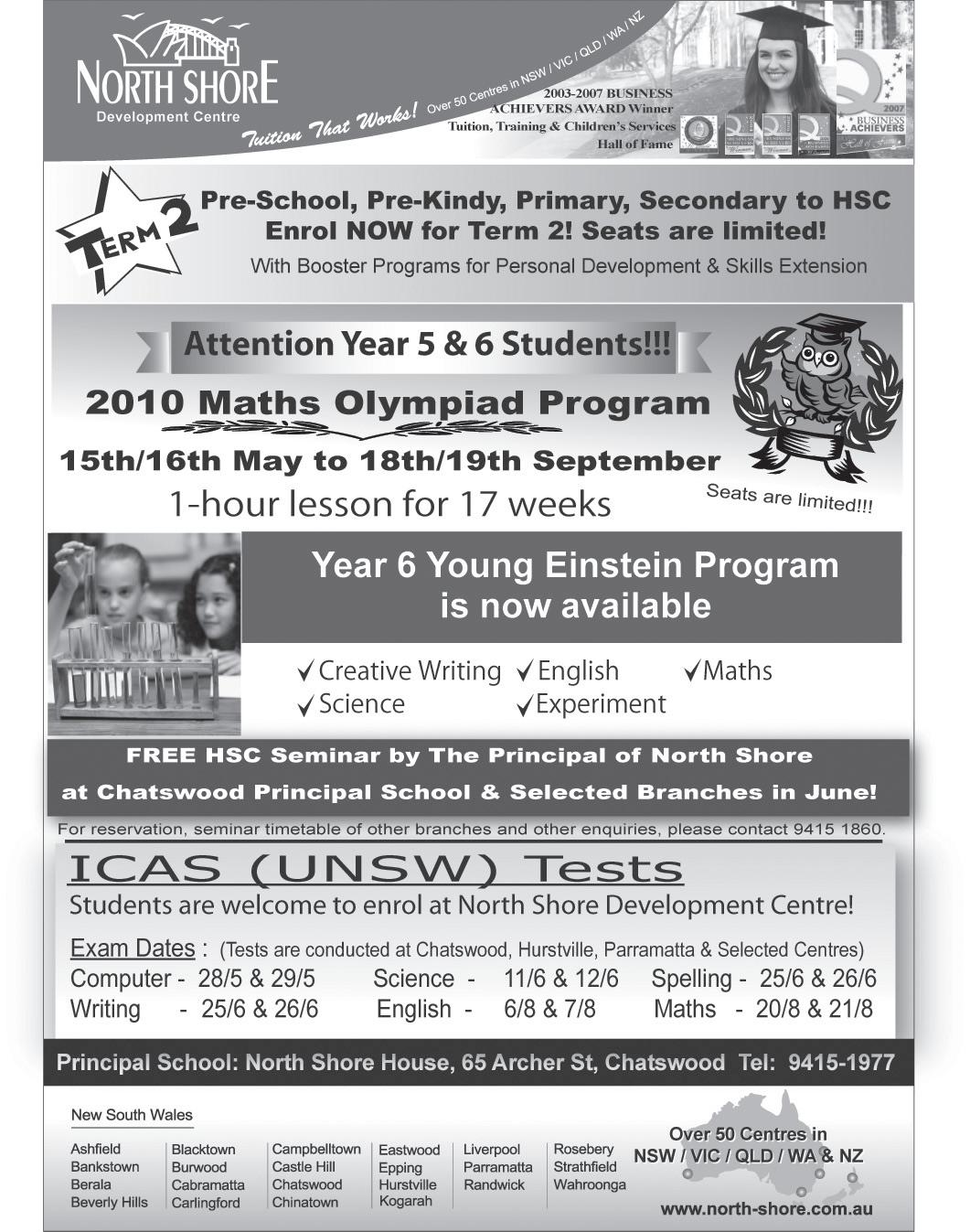
6. Other software: Like the iPod and iPhone, you’ll have easy access to over 140,000 software titles currently available from the App Store. Whilst these are not yet fined-tuned for the iPad, Apple has released a kit to software makers so watch out for iPad-optimized programs soon.
7. Internet browsing: Apple’s Safari web browsing software is pre-installed, but it doesn’t support Adobe’s Flash software. Flash is used for animations on some websites (though it’s less popular now), so if you rely on web-based functions check if you need Flash or not.
8. Multi-tasking: Like the iPhone, the iPad limits you to using one application at a time. As an example, you can’t play music whilst visiting websites.
9. Media: Apple will tell you the iPad is the best way to experience photos, video and more. It certainly could replace the laptops carried by sales professionals for their presentations and provide easy, lightweight storage of service manuals for tradespeople.
10. Camera: One important omission is a camera, especially for this generation that is used to uploading photos and videos to social networking sites. Rumours say there is a cut-out in the plastic bezel for one, so perhaps it will be introduced in a later version of the device. The iPad’s design and features may sound great, however any technology has to match your needs and how you work. Without touch feedback and with some slight delays, the iPad’s keyboard is not well suited to creating documents; however it is a fantastic tool for screening photos and videos. So if you’re looking for a serious piece of computing equipment to meet business needs such as a Netbook alternative, the iPad is not the way to go. But if you’re looking for a fun accessory, the iPad is the clear leader in mobile content and tablet revolution. It’s not magical, but it is highly entertaining.
iPad will be available in Australia on Friday 28 May

46 <> MAY (2) 2010 INDIAN LINK
TECHGURU www.indianlink.com.au
The newly introduced iPad could suit your technology needs and lifestyle
“One important omission is a camera, especially for this generation that is used to uploading photos and videos to social networking sites“


MAY (2) 2010 <> 47 NATIONAL EDITION
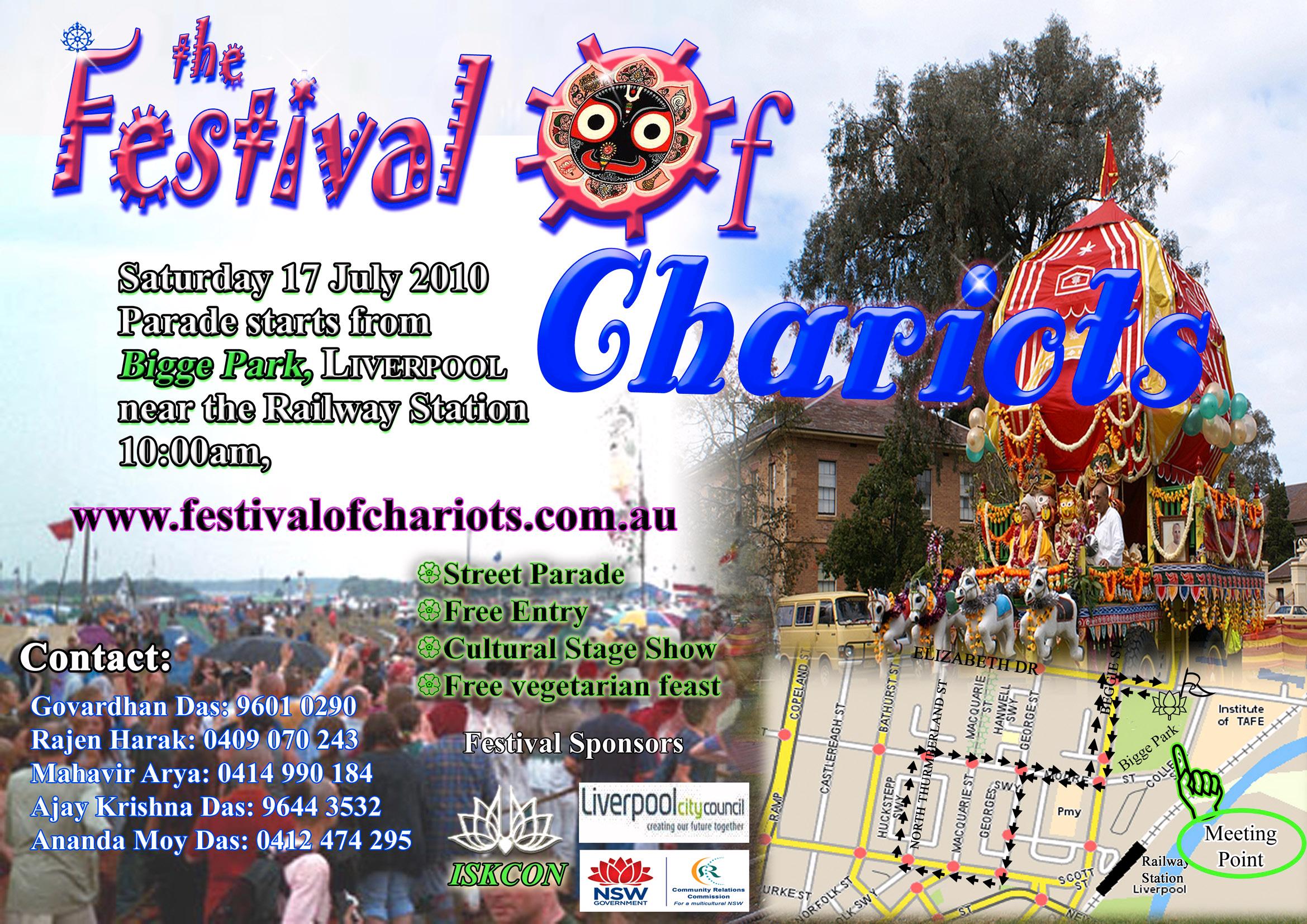

48 <> MAY (2) 2010 INDIAN LINK

MAY (2) 2010 <> 49 NATIONAL EDITION


50 <> MAY (2) 2010 INDIAN LINK
MIGRATION MATTERS
By Amit Baijal
MARN: 0746261 MMIA: 3143 QEAC: D019
I have completed a two years course in Australia. I meet all but one of the requirements for lodging the subclass 485 visa and that is after 9 attempts I keep on getting 5.5 in one of the IELTS bands due to which I am not able to Lodge any Skilled visa like 485 or 885. Recently my agent has been sending me sms message to me and a number of my friends advising us that we may lodge the application for 485 visa without 6,6,6,6 in all 4 bands of IELTS. My agent says that the IELTS has now become a time of Decision Criteria and hence we are able to get time to submit an IELTS test result at any time up until the case officer is assigned to our cases. I was going to apply for another student visa but now if this is true then I can apply for my 485 visa and save money Please let me know what you think.

Rakesh, Sydney
Dear Rakesh,
There are new arrangements for the provision of evidence for English language ability. Applicants for several GSM subclasses have until the time of decision to provide evidence of their English language ability. However it is very strongly advised that the applicants should not delay in providing their evidence of English language ability. The department will not delay finalising applications where English language test results have not been provided at time of application. Applicants will have 28 days from the date of application to provide their English language results if they did not provide them at time of application. At this point in time, if evidence has not been provided the application will be refused.
If you are genuinely interested to study then please apply for a course of study that is relevant to your previous study and also one which is at a comparable level. To make the point clearer if you have completed a Masters in Accounting course then please do not enrol for let us say a diploma level course in Business as the Department of Immigration may take that action to demonstrate that you are not a genuine student but applying for a student visa to remain onshore while you prepare to lodge for another permanent application under GSM category. ***
I am a student on a subclass 572 visa. I came to Brisbane 2 years back and at that time my Uncle provided me financial support. I had applied for a student visa through my agent who has now informed me that Immigration refused to grant me a visa on the basis that I do not have enough financial capacity and even though my father has shown the required amount the immigration department has questioned whether I will have genuine access to this money that my father has shown. I am very confused please guide me on my options and can the immigration refuse my application for a student visa even if my father is showing the required money.

Sandeep, Brisbane
Dear Sandeep,
As one of the measures to strengthen integrity, DIAC upgraded integrity checks of applicants from India, Mauritius, Nepal, Brazil, Zimbabwe and Pakistan to confirm the genuineness of student visa applicants and to check financial capacity.
The Migration Regulations require international students to show evidence of funds to contribute
to the cost of living and studying in Australia. While international students are able to supplement their income with money earned through part-time work in Australia, the ‘living costs’ requirement helps to support the success of students in their studies by ensuring they do not need to rely on such work to meet all their expenses.
Under new migration regulations, Student visa applicants may also be asked to demonstrate the funds they are relying upon to meet the costs of studying in Australia will be genuinely available to them during their stay in Australia. This includes checking:
• a prospective student’s previous financial and immigration history
• the employment history of the student or the person providing the student with financial support
• the source of the income used (for example, cash assets or a bank loan).
Where there is doubt about the student’s ability to access these funds in Australia, the student may be asked to provide further information in support of their application. For example:
• bank loans may need to have been deposited into a bank account to which they have unrestricted access, and that they have the financial capacity to service the loan
• Provide evidence that the person sponsoring the student is giving you complete access to the funds for your study in Australia. (This can be done using the approved statement of support available from DIAC)
DIAC asks the applicant to show evidence HOW the fund is genuinely accessible to the applicant This can be done for example showing evidence of regular (monthly or Quarterly) deposits from the sponsor (Can be Parents or any approved person able to sponsor) into the applicant’s account via bank statements or international money transfer, etc. OR transfer of the full amount that is required to meet the financial requirement being transferred to the applicant in Australia.
The money a student must have access to as part of their visa application can come from a number of acceptable sources of income. Students do not
need to solely rely on funds held in bank accounts or money deposits with financial institutions, such as an education loan from an acceptable financial institution. Non-cash assets such as property and shares are not acceptable sources of income, but may be liquidated or used as collateral on a loan, if provided by an acceptable source.
You cannot use Business Accounts as evidence of funds even if your parents are the only shareholders. The accounts must be held by individual people.
***
I am about to complete my 2 years Masters in Professional Accounting in August. I was hoping to apply for skills assessment as an accountant. I have IELTS of 6,6,6,6 in all 4 bands of IELTS and also have completed my Bachelors of Commerce from Delhi University in 2005. I have heard that an academic IELTS of 7,7,7,7 will be required for organising the Skills assessment as an accountant from 1st July 2010. I have spent a lot of money on my education please guide me if there is anything I can do to get an assessment without getting 7,7,7,7 in all even though my course is finishing in August.
Mohsin, Melbourne
Dear Mohsin,
There are three bodies in Australia that assess Accounting qualifications for migration assessment. They are CPA, ICAA and NIA.
Visainfo has confirmed with CPA today that if you lodge your application before July then you will be assessed under the current rules without needing IELTS.
This application can remain open for six months as a “pending application” and further documents can be supplied later.
Basically you should get your Bachelor of commerce from Delhi University assessed by CPA. Along with the Bachelors please send the transcripts of your Masters that you are currently studying in Australia. If you have completed the core units then you will receive a complete assessment without any IELTS requirement straight away as long as you apply before 1st July 2010. However if the assessment body comes back to you and asks you to complete more subjects then you will have six months to complete them and advise the results to CPA. (PLEASE CALL CPA PRIOR TO LODGING SKILLS ASSESSMENT TO CONFIRM THAT THIS APPROACH IS STILL VALID)
VISAINFO called and asked ICAA and NIA to confirm if they will allow this approach but at this stage ICAA has refused that they would allow the above. NIA has not clarified their position on this.
Please note that individual circumstances may differ and the above information is generic in nature and it is strongly recommended that you speak to a registered migration agent prior to taking any decision based on the above information. Please visit MARA website for a list of Registered Migration Agents. www.mara.com.
au
You may contact any of VISAINFO’s Registered Migration Agents for further information on the following details.
E-mail info@visainfo.com.au Ph: 02 9233 2651
Add: Level 9, Suite 3A, 428 George Street, Sydney NSW 2000
MAY (2) 2010 <> 51 NATIONAL EDITION
ADVERTISEMENT www.indianlink.com.au
The choice is ours
In today’s world, it is becoming increasingly difficult to segregate our professional life from our personal one
 BY SAROJA SRINIVASAN
BY SAROJA SRINIVASAN
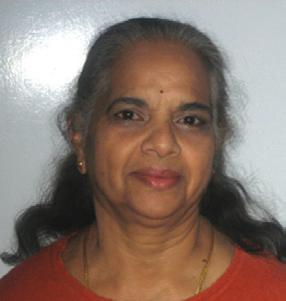
Recently I met a young couple, who by all counts, had every reason to be happy, but were not.
She was a beautiful, highly educated professional, successful in her career. He was also a high achieving professional. They owned a beautiful home. But they were unhappy. They constantly moaned about being unhappy. Even though it did
not show up in their professional life, to a certain extent it had begun to permeate their personal life. Both presented a very similar picture.
This young couple had a very demanding workday schedule – long hours, constant decisions to make and the responsibility of meeting repeated deadlines. Added to this was the onerous task of commuting in heavy traffic to and from work. Such was their lifestyle that there was no time to really relax and enjoy life’s pleasant activities such as sports or hobbies, apart from their yearly two-week holiday. So intense was the everyday routine that even their home became a place to which they dreaded returning. For home meant endless
housework. With a partner who was equally stressed, even each other’s company began to fade into indifference.
Yet outwardly the world saw them differently - a couple of warm, caring professionals, highly achieving and extremely successful.
So what was wrong?
Perhaps without realising it, they had inadvertently fallen victims to the expectations of others without allowing time for their true aims and ambitions, apart from within their professional lives, to be attended to. What started as a glorious success story was slowly disintegrating into a sad personal tale.

Despite being highly intellectual, they had not seen what was coming. Was it perhaps, this intellectualising that had insidiously veiled the slow moving-away from what they had always wanted to achieve in their lives?
With this couple, the inner mechanism –the homeostatic device – that warns us when our system is not in synchrony, appeared to be on the blink. They seemed to be swept away by the current of social opinion of what one is supposed to achieve. Too often we appear to have given away control of our lives to that which others dictate.

Achieving, be it professionally or materially, has become a goal in itself. Many rationalisations are offered for this myopic outlook on life. Careers seem to devour people at the risk of ignoring personal obligations. This is further fuelled by the admiration and kudos bestowed on those who achieve professional success. There appears to be no time to know who we really are anymore. When interests outside of the profession are not cultivated, career and profession seem to take up permanent residence firmly in our psyche as the one worthwhile occupation of our body, mind, intellect and soul. No wonder it soon becomes ‘soul destroying’.
This scenario is not all that uncommon these days. More and more young couples find themselves caught in the mire of upward spiralling professional achievements while simultaneously, their personal lives are plunging headlong downwards into disintegration and unhappiness. This style of living, as if one has no choice, seems no better than that of an illiterate who accepts a fatalistic view of his life and continues to live out his life in poverty for lack of choice. Has education not provided the confidence to choose between a fulfilling life that includes other achievements apart from professional ones; and one that only focuses on professional goals?
The choice is ours to make.
52 <> MAY (2) 2010 INDIAN LINK
PSYCHE www.indianlink.com.au


MAY (2) 2010 <> 53 NATIONAL EDITION $$ $$ Thought About Security as a career? Do you want to earn big $$ Bezcorp Training Academy is a registered training organisation offering training services below: • Certificate I in Security Operations (Pre – Licence) in all licence classes • Workplace Assessments for Provisional Licencees •Recognition of Prior Learning (RPL) •First Aid Don’t delay, call now 1300 329 570 We’re located at 33 Brookhollow Ave Baulkham Hills Mon – Fri 9.00am to 5.00pm ML: 409864980 100 % GUARANTEED DURGA DEVI JYOTISH MANDIR World Famous Astrologer Panditji Srinivasaraju in Sydney Panditji is an expert in Palm, Face, Photo Reading, Numerology, Horoscope & predicts your past, present & future. Performs Home / Shanti Pujas, Astabandana, Sudershana Chakras, Laxmi Chakras, Vastu Consultation - Home & Commercial Are you suffering from any of the following problems: health, family, marriage, love, business, employment, husband & wife relationship, property, court, children promotion etc. REMOVE MAGIC AND GIVE PROTECTION Shakthi Pooja & any evils don’t worry any more... Lucky & Vasikaran CALL FOR APPOINTMENT M: 0413 897 421 / 0435 782 182 INSIDE THE SHOP - INDIA IN AUSTRLIA , 5 BELAR STREET, ST., MARY’S NSW 2760 100 % GUARANTEED 100 % GUARANTEED



54 <> MAY (2) 2010 INDIAN LINK
Let’s go bananas!
Packed with goodness, bananas not only help us to stay fit, but also help overcome a host of illnesses and maladies, FARZANA
The humble banana originated in Malaysia some 4000 years ago, and continued to spread through India and the Phillippines, next to Africa, the Middle East and the rest of the world, to the extent that today, it is regarded as the most popular fruit on the planet. Not only is it attractively packaged in a hot yellow jacket, is delicious in taste, neat to eat and handy to carry around, but it is also jam-packed with nutritious goodness. No wonder bananas are an all-time favourite with young and old alike. In fact, it is being hailed as the new apple, taking that fruit’s place in the adage, ‘A banana a day keeps the doctor away.’ New age athletes are lapping up this fruit, making the humble banana a number one fruit with the world’s leading sportspeople.
Bananas grow in clusters of 50 to 150, with individual fruits grouped in bunches of 10 to 25 bananas, known as ‘hands’. Each banana on a ‘hand’ is regarded as a ‘finger’.
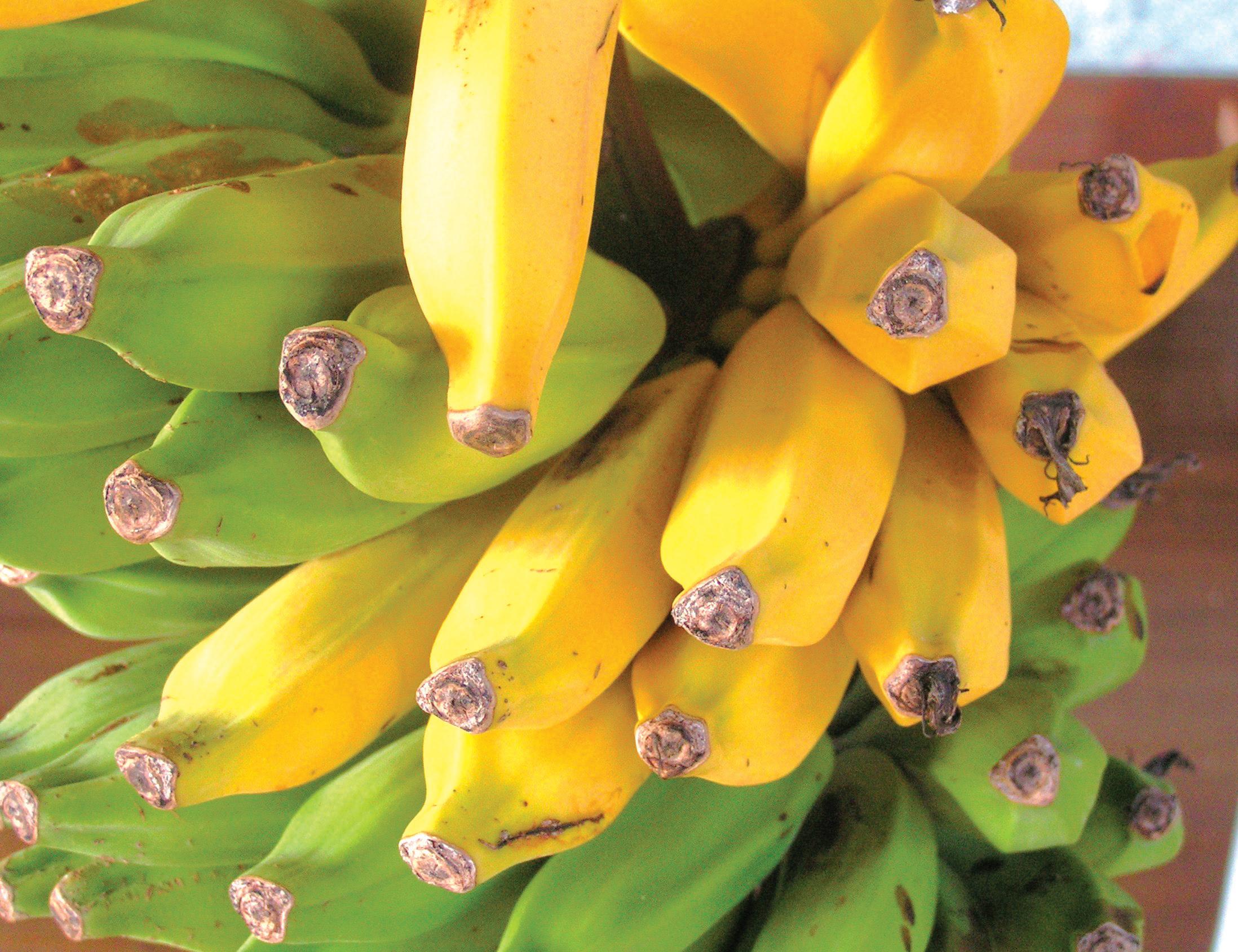
There has been extensive research into the effect of bananas on the human body, especially the mind. It has been proven that just a couple of bananas provide enough energy for a laborious hour and a half workout.
Sucrose, fructose and glucose are the three natural sugars present in bananas, along with fibre which makes it an instant source of energy. Bananas not only help us to stay fit, but they can also help prevent and overcome a host of illnesses and maladies.
Cardiovascular Health and Blood Pressure
Bananas are rich in potassium which is essential for maintaining normal blood pressure and heart function. One banana contains about 467 mg potassium and only 1mg of sodium, so consuming just one banana a day can help prevent high blood pressure. The banana industry has been allowed by the US Food and Drug Administration to officially claim the fruit’s ability to reduce the risk of blood pressure and stroke.
Not only is it attractively packaged in a hot yellow jacket, is delicious in taste, neat to eat and handy to carry around, but it is also jam-packed with nutritious goodness
Depression
Recent studies have concluded that eating bananas helped people suffering from depression feel better. This could be due to the fact that bananas contain tryptophan which is a kind of protein that the body converts into serotonin, a chemical known to relax and promote feelings of happiness. It is also a mild sedative. It is worth a mention here that the only way our body gets its dose of tryptophan is through diet. Our bodies do not produce tryptophan naturally and munching a banana is probably the easiest way of getting it.

Strong Bones
By including bananas frequently in your diet, you can improve your body’s ability to absorb calcium and hence build stronger bones. Bananas are an amazing source of prebiotic compound which nourishes the probiotic bacteria in the colon. These produce vitamins and digestive juices that improve the body’s ability to absorb calcium and other nutrients. The risk of colon cancer is also reduced. As calcium secretion is suppressed, the loss of calcium from the body reduces the probability of developing osteoporosis.
SHAKIR notes
Banana shake
Blend together 1 large ripe banana, 2 200 gm cups fruit yogurt, 1 tbsp raw sugar, and ½ cup milk.
Banana paddlepop
Cut banana in half and stick a paddlepop stick in. Dip first into chocolate sauce and then roll in a plate of crushed nuts. Refrigerate briefly to set.
Barbecued bananas
Cook bananas in their skins on a hot grill or barbecue
Anaemia and PMS
for about 7 minutes, until darkened. Turn intermittently. Place on serving plate and slit skin gently. Serve with a flavoured butter sauce (made by mixing into softened butter some orange rind, orange juice, cardamom powder and brown sugar) and / or a yogurt of choice.
Banana bread
An easy preparation requires three over ripe bananas, 1 egg, 1 cup self raising flour, 3/4 cup brown sugar, some
Bananas are high in iron and can stimulate the production of haemoglobin in the blood to help those suffering from anaemia. The vitamin B6 present in the fruit regulates blood glucose levels which can affect moods positively and helps patients of PMS.
Ulcers
The antacid in bananas has been documented to protect against stomach ulcers and ulcer damage. The fruit works protectively in two ways. Firstly it neutralizes over-acidity and secondly it reduces irritation by coating the lining of the stomach with a thick protective mucus barrier against stomach acids.
Stroke
The New England Journal of Medicine recorded, as a result of its research, that eating bananas as a part of a regular diet can cut the risk of dying by stroke by as much as 40%.
Constipation
A soluble fibre called pectin contained in bananas can help normalize movement through digestive tract and ease constipation. A single serving of one medium sized banana contains 16% of the daily recommended dietary
chopped walnuts (optional). Mix ingredients together and bake in a greased tin for about 45 minutes, moderate oven.
Crispy bananas
Peel bananas and dip in orange juice. Then roll in a nutty mixture (for example, dessicated coconut, castor sugar and ground hazelnuts). Cook in a heated frying pan in a small quantity of butter, until golden. Serve warm with ice cream.
fibre intake for an adult. So including this super fruit in your daily diet can regulate the bowel movement without having to resort to laxatives; plus this fibre rich diet also reduces the risk of coronary heart diseases and type 2 diabetes.
Healthy kidneys
Regular consumption of bananas may reduce the risk of kidney cancer as banana and many root vegetables contain especially high amounts of antioxidant phenolic compounds. Also, the kidneys and bones benefit from the high potassium content of bananas as it suppresses the secretion of calcium in the urine, hence minimizing the risk of kidney stones.
In addition, bananas are known to reduce stress, increase brain power by keeping us alert, cure warts, mosquito bites, morning sickness, hangovers, help suppress nicotine craving in people who are trying to quit smoking, relief heartburn, calm nerves, cure diahorrea, protect eye sight and help reduce mood swings.
In a nutshell, the banana is truly a miracle fruit which undoubtedly has many more benefits to the human body that are yet to be discovered, so let your hair down and go bananas! And I’ll bet in no time you’d be feeling as happy and energetic as a bunch of monkeys.
MAY (2) 2010 <> 55 NATIONAL EDITION FOOD www.indianlink.com.au
Get the base right

Just a hint of blush and lipstick over your freshly washed and hopefully moisturised skin can make you look a little patchy if you overdo the blusher. Also, wearing makeup in this manner doesn’t give the skin an even tone or finish. It is best to wear a base – light for the day and heavy for the evening and then wear the rest of your makeup.

While putting the foundation on, it is important to realise that you can’t lay it on thick and pasty to hide a few enlarged pores or to cover blemishes, wrinkles or pimples. The thicker you wear it, the more likely it is to crack and look chalky. Luckily, these days there are liquid bases and compact bases available which appear natural and are so light in texture you can hardly feel that you have any foundation on. They come in several forms –light liquid, cream-based, compact based and tube based – the Kryolan variety used for professional makeup.
The most important step in getting your foundation right is to choose the right shade of foundation and concealer. You can use a foundation to conceal flaws as well and don’t need to invest in a concealer unless you have very prominent dark circles and pimples.
Choosing the right base
Your foundation must be as close to your skin tone as possible. While buying it, apply a little from the tester on to your cheek and blend in. If it gives your skin a smooth look and doesn’t change the colour of your skin, then that is the right shade for you to buy. Avoid buying foundation in a shade lighter than your skin tone. That is criminal because if you are fair and you buy a lighter one, you will look like a ghost and if you are dark and you buy a lighter shade in the hope of looking fairer, your skin will look grey rather than its natural wheatish or brown shade which will only make you look worse.
While choosing the right shade, pick two or three different ones, closest to your skin tone – preferably
from different companies. Buy your foundation during the day so you can see how it looks in natural light. Since most of us Indians have more of the yellow tones in the pigment of our skin, buying a base with a pink tint is an outright no-no. The pink ones will make your skin tone completely unnatural and ruin the rest of your makeup as well.
If you have oily skin, don’t choose the cream or glossy ones. Go for a liquid one which is preferably oil free and has a matte finish to it. If you have dry skin, avoid a compact base as that will make your skin look drier. Elizabeth Arden, L’Oreal, Maybelline, Revlon, Clarins, Nina Ricci and other companies have a variety of products to choose from. Powder based, oil free, transfer resistant [so you don’t have foundation on your garments], tinted moisturisers [which combine the benefits of a moisturiser with the colour tone of a foundation] and cream-based ones are some of the options.
Applying the foundation correctly
Always apply moisturiser on your face before you wear any makeup. This not only seals in the moisture but also gives the skin a smooth feel.
Then start with applying the foundation on the uneven areas of your face – the blemishes and dark circles to be specific. (Use the foundation that is in the cap to hide blemishes as it is usually slightly thicker than the rest). The right way to start is to lightly apply it in dots over parts of your face and then blend it in. Apply it on one part at a time as it dries up fast. Start with one cheek, move to the next, then the nose, chin, forehead and neck – always moving from the centre of your face outwards. If using a separate concealer, apply it after you use the base and blend in. If you have facial hair, make sure to apply the base in a downward motion so the hair stay down as well.
Use your fingertips to gently blend in the foundation. If you must use a sponge, make sure it is clean and disinfected.

Finishing touches
After you have applied the base, dust your face lightly with translucent powder. Dust the excess off the brush before you use it. If your skin is overly dry, use very little powder and apply it more over the oily areas or the T-zone.
56 <> MAY (2) 2010 INDIAN LINK
BEAUTY www.indianlink.com.au
These days there are liquid bases and compact bases available which appear natural and are so light in texture you can hardly feel that you have any foundation on
If you want an even finish to your make-up, then don’t miss out on the foundation, says PRIYA NAIR


MAY (2) 2010 <> 57 NATIONAL EDITION
My e-order
A new way to buy Indian grocery from home
Do not assume that opportunity will knock twice at your door.
A day will come when a small chip is installed in the human body and just by thinking of purchasing anything online, customers will place an E Order.
Some of us feel apprehensive that we might become lazy by doing shopping over the internet. But that’s not true; the customer is utilizing the time and money that he/she has saved by doing online shopping, somewhere else like spending that saved time with his/her family or in doing other chores more efficiently. Today’s customer is very smart; he is waiting only for the right options to come at his door step with the help of which he can save his precious time, money and energy to utilize it in gaining something new in his life. In the world of technology every rational customer is ready to grasp the opportunity that will benefit him.
My E Order is the only digital firm in the market which provides Indian groceries, without any delivery cost, to the buyer’s door step. Buying Indian grocery from your home without delivery costs, doesn’t mean that you need to compromise with quality, because customer satisfaction is the aim of our business. Moreover, a customer will be refunded on the spot if he is not satisfied with any product. In addition to that, a customer can buy Indian groceries from home without any delivery charges which will save his precious time and hard earned money as it takes only 5 minutes to place the order but if we buy it from the market it will
cost around 30 – 40 % more in the form of time and money which will increase the overall grocery cost.
BEWARE OF SMALL EXPENSES: A SMALL LEAK WILL SINK A GREAT SHIP.
At My E Order, customers can buy products at the lowest prices in Sydney, because it is an online store and the price will be same for all customers anywhere in Sydney.

These ideas are created by a layman for the common man. Life is too busy - and we have to think smart to save the environment and save some national resources. One car going to a thousand door steps is better than a thousand cars going to one door step. And this is a small way by which we can save fuel and the environment – and of course, time and money.
By buying your Indian grocery from My E Order, customers will receive the following benefits:
* Time spent in buying grocery
* Receiving free home delivery
* Enrolling in My E Numbers (monthly draw on first Thursday of every month)
* Chance to earn credits in terms of dollars through ‘my referral’ rewards program and proceeding towards ‘Diamond Customer Category’ after which the customer
will receive gifts at regular intervals.
There are around 500 + premium quality of packed products Indian grocery available online. Moreover customers can buy brands of their choice via ‘My Smart Order’ option.
All customers need to set up their account for order processing – this will also enable them to get monthly updates on specials, promotions, and new changes in the shopping system from time to time. Setting up account with My E Order is free.
There is also an option for non-internet users if they want to order Indian grocery through My E Order. They can call or SMS “My Order” at 0422 088 294. We have designed the business in such a way that it will be used by both internet and non- internet users. My E Order is open for feedback from customers: it is committed to work and improve the system as per customers’ requirements and satisfaction.
We are also looking for enthusiastic people for Melbourne, Brisbane, Adelaide and Perth to start our services over there.
My E Order is committed to providing better services at your door step. Testimonials from customers can be checked online.
For more details please visit www.myeorder.com.au

58 <> MAY (2) 2010 INDIAN LINK ADVERTORIAL www.indianlink.com.au
‘You name it, we have it’ Your one-stop spice shop Himalaya Spice Centre 1 Station St, Thornleigh, NSW, 9481 8200 Shop 3 96-98 Wigram St, Harris Park, NSW 9893 8691 1/1 Pound Road, Hornsby, 2077 9477 2500
Parasailing? Treking? Try Himachal

VISHAL GULATI identifies an idyllic new destination for the eco-traveller
If you’re an adventure freak and want to test your endurance on lofty mountains, Himachal Pradesh is the place to be this summer. From rock-climbing and crossjungle trekking to white-water rafting and parasailing, the state offers it all.
The forest department is organising adventure sport expeditions to promote ecotourism.
“Trekking expeditions for professionals and beginners have been planned across the hills from May 15 to June 29. Any participant in the age group of 15 to 50 can participate,” Chief Conservator of Forests (Ecotourism) Harsh Mittar says.
More than 50 trekking routes - both arduous and moderate - in the Himalayas have been identified and trained local youth have been roped in to assist the trekkers, he reveals.
“The department has identified routes of varying duration ranging from one day to eight days in Kullu, Shimla, Mandi, Sirmaur, Bilaspur and Kangra districts. Trekkers would be taken in groups of five to 20 and would also be acquainted with the local flora, fauna and culture,” Mittar explains.
The trekkers will also get a taste of local culinary traditions. “Cuisine made by villagers would be served to the trekkers in their traditional utensils,” Mittar adds.
The Tirthan-Sainj trek, which passes through the Great Himalayan National Park in Kullu district, is popular among trekkers. Two groups will be taken on the trek, the first departing May 15 and the second June 5.
“The eight-day trek is an ideal getaway, but for professionals only. It takes one from an altitude of 5,000 feet to 15,000 feet. It passes through SairopaRolla-Shilt-Guntrao-Dhela-Humkani-Shakti-Chenga and the fees is Rs.11,200 per person, including boarding and lodging,” Mittar explains.
“The other popular trek for professionals is Churdhar. The five-day trek passes through 5,000 feet to 12,500 feet and the fees is Rs.5,000 per person,” he says. However, for newcomers who want to mix holidaying and adventure, a single-day trek to Shali Tibba, around Shimla hills, is the best option. It will cost just Rs.1,500 per person.
Mittar says the response to the short treks has been quite good, especially from schoolchildren. “On an average, we receive 10 enquiries daily about prominent trekking routes and camping sites. So far, more than 250 daredevils have got themselves registered for various expeditions ranging from one kilometre to 75 km”.
The Manali-based Atal Bihari Vajpayee Institute
of Mountaineering and Allied Sports is another professional institute which conducts mountaineering expeditions and high-altitude treks.
More than 50 trekking routesboth arduous and moderate - in the Himalayas have been identified and trained local youth have been roped in to assist trekkers
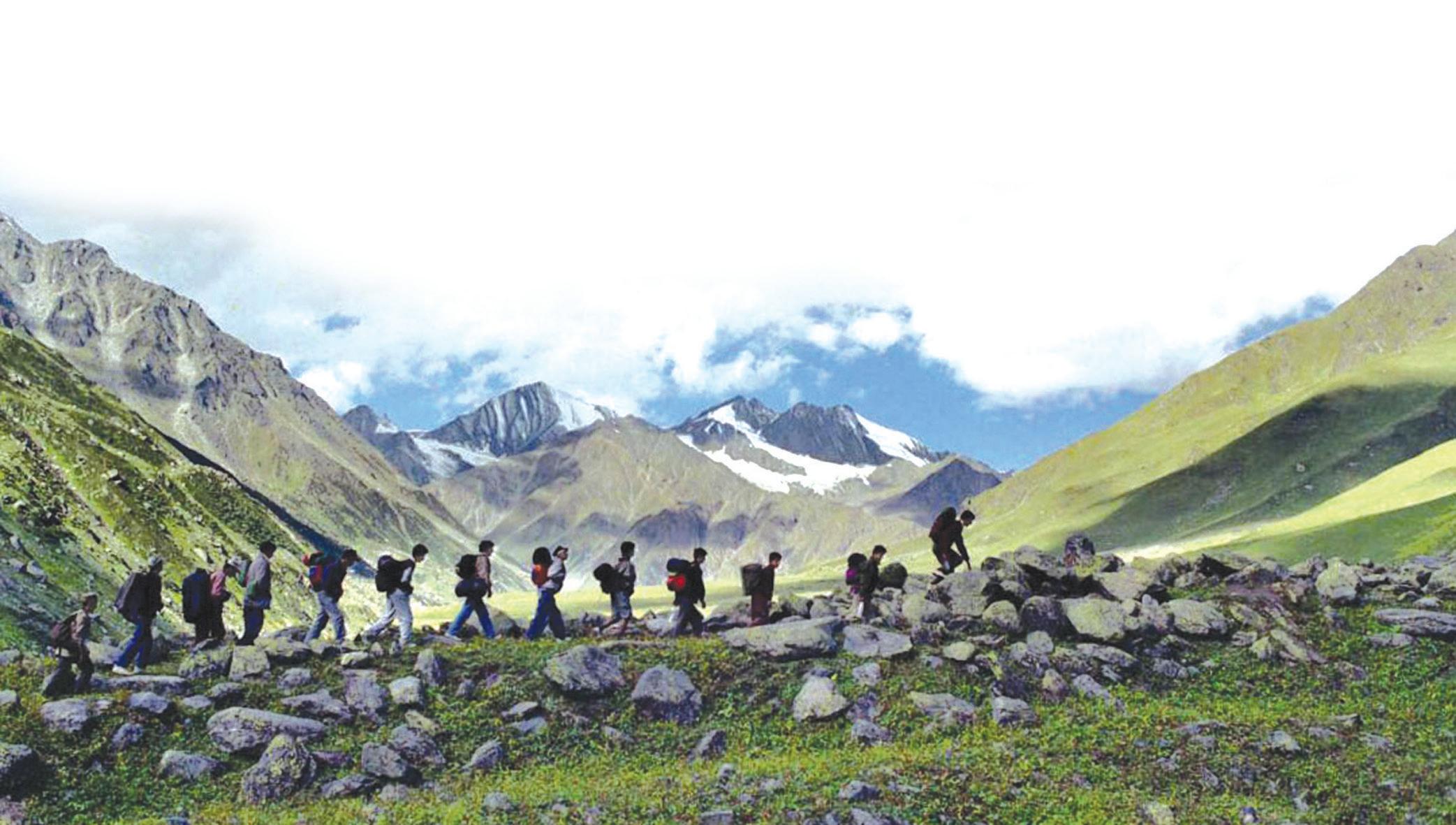
“This year too the response of trekkers and mountaineers from all over the world is good. A number of expeditions are already under way,” notes Rajeev Sharma, a senior mountaineering instructor at the institute.
The institute, set up in 1961, is also conducting special activities for corporate executives, students and families in adventure sportsmountaineering, backpacking, skiing, soft adventure, trekking, rafting, kayaking and paragliding.
The idyllic, pastoral setting of the Himalayan range in Himachal Pradesh has been drawing an increasing number of backpackers. With a population of just over six million, the state attracted 11,437,155 tourists, including 400,583 foreigners, last year.
Kullu-Manali has emerged as a favourite tourist destination, followed by Shimla and Dharamsala.
MAY (2) 2010 <> 59 NATIONAL EDITION HOLIDAY www.indianlink.com.au
Trekking in Simla Photo:
IANS
FANTASTIC FAMILY HOME
The property is presented in excellent condition featuring 4 bedrooms all with built ins, ducted air conditioning through out, automatic shutters, modern bathroom, modern timber kitchen, large tiled dining, separate lounge room, lock up garage converted into potential granny flat, good size yard, covered area with jakoozi great for entertaining all located close to all amenities.

Laing & Simmons Wentworthville 9688 4000
Contact Alan Fowler
Laing & Simmons Wentworthville 9688 4000 Contact Alan Fowler 0413 057 699 or Leanne Ollerenshaw 0414 790







kitchen with dishwasher, 2 modern bathrooms, 3 toilets, large separate lounge & dining area, good size yard and single remote lock up garage.
Open For Inspection: Next Tuesday 6-6:30pm
Auction: Saturday 19 June 2010 On site at 11am



Laing & Simmons Wentworthville 9688 4000
Contact Leanne Ollerenshaw
Uniquely Designed
This unique split level designed townhouse is definately worth the look, features include 3 double sized bedrooms, main with ensuite & balcony, ducted a/c throughout , large lounge & dining area, modern kitchen, large paved courtyard & double remote LUG, 3 toilets in total, walk to Pendle Hill Station, shops & amenities

Laing & Simmons Wentworthville 9688 4000




Contact Leanne Ollerenshaw

60 <> MAY (2) 2010 INDIAN LINK WENTWORTHVILLE AUCTION 1,012SQM BLOCK 27 Hill Street Rare Opportunity to purchase this large block less than 500m walk to station. This spacious 3 bedroom home is well maintained throughout with huge potential for possible redevelopment (STCA) or investment. Not To Be Missed! Open For Inspection: Saturday 11:30-12pm Auction: Saturday 5 June 2010 on site at 12pm Laing & Simmons Wentworthville 9688 4000 Contact Alan Fowler 0413 057 699 or Leanne Ollerenshaw 0414 790 887 MERRYLANDS AUCTION ULTRA MODERN CONTEMPARY STYLE LIVING 40 Hilltop Road This Property has a real WOW factor! Set in popular Hilltop Location this home features large open plan living, 3 spacious bedrooms with built ins, main with ensuite, separate study or 4th bedroom, ultra modern main bathroom, huge living and dining area, enormous ultra modern kitchen with gas cook top and dishwasher, double remote lock up garage with internal access, covered pergola area, large salt water in ground pool with water feature and still more room for kids to play all set on 866sqm block, set close to local shops, schools and bus at door. ** Agents interest** Open For Inspection: Saturday 12:30-1:00pm Auction: Saturday 29 May 2010 on site at 1:00pm Laing & Simmons Wentworthville 9688 4000 Contact Alan Fowler 0413 057 699 SOUTH WENTWORTHVILLE AUCTION WENTWORTHVILLE AUCTION WENTWORTHVILLE AUCTION GIRRAWEEN AUCTION CONSTITUION HILL AUCTION 695SQM BLOCK 64 Frances Street Extra large family home in a popular street featuring 5 bedrooms, 2 living areas, 2 bathrooms, modern kitchen, garage and close to transport. Ideal for an investment or re development, duplex site (subject to council approval). Open For Inspection: Saturday 11:30-12pm Auction: Saturday 22 May 2010 on site at 12pm Laing & Simmons Wentworthville 9688 4000 Contact Alan Fowler 0413 057 699 or Leanne Ollerenshaw 0414 790 887 GREAT LOCATION 69 Essington St This property has everything you need! Only a short walk to trains, schools and shops the property features 4 large bedrooms all with built ins, separate study, 2 modern bathrooms, large lounge and dining area with air conditioning, polished floor boards throughout, gas connections, modern kitchen, in ground solar heated salt water pool, lock up garage and great size yard for the kids. Open For Inspection: Saturday 11:00-11:30am Auction: Saturday 29 May 2010 on site at 11:30am Laing & Simmons Wentworthville 9688 4000 Contact Leanne Ollerenshaw 0414 790 887 or Alan Fowler 0413 057 699 LAND VALUE 1 Bransgrove Street Ideally located with in easy walking distance to station, shops & Woolworths shopping centre this house is in need of renovation with 2 bedrooms, open plan living & set on 619sqm block, ideal for new home or investment. Rare Opportunity. Not to be missed! Open For Inspection: Saturday 1:30-2pm Auction: Saturday 22 May 2010 on site at 2pm
LIVING AT IT’S BEST
home
separate
in the middle. This is ideal for a two family combination. First home consists of 3 bedrooms, study, 2 bathrooms, lounge, separate dining, air conditioning & modern kitchen with gas cook top – 2nd home has large lounge and dining, huge modern timber kitchen, air conditioning & modern bathroom. The property sits in a very popular location in Girraween close to selective schools, shops & amenities. Open For Inspection: Saturday 2:30-3:00pm Auction: Saturday 5 June 2010 on site at 3:00pm Laing & Simmons Wentworthville 9688 4000 Contact Leanne Ollerenshaw 0414 790 887 or Alan Fowler 0413 057 699 3 FAMILY LIVING 11 Michelle Drive Rare opportunity to purchase this unique property with opportunity for the extended family or 3 incomes, accommodation being 4 bedrooms house, 2 bedroom granny flat and a bedsitter all with modern conveniences and set in a quiet residential street. Ideal for the large family or investor. A MUST TO INSPECT. Open For Inspection: Saturday 1:30-2pm Auction: Saturday 29 May 2010 on site at 2pm Laing & Simmons Wentworthville 9688 4000 Contact Alan Fowler 0413 057 699 or Leanne Ollerenshaw 0414 790 887 WESTMEAD $394,950 WENTWORTHVILLE $334,950 SOUTH WENTWORTHVILLE $650,000 PEMULWUY $659,000 WENTWORTHVILLE $549,950 WENTWORTHVILLE $449,950 WESTMEAD $399,950 PEMULWUY AUCTION PENDLE HILL $399,950 GREYSTANES $539,950 LIFESTYLE Situated in the final stage of this prestigious complex is this ultra modern 2 bedroom unit with spacious living areas gorgeous kitchen with gas cooking down lights throughout, air conditioning, vogue décor, video security lock up garage. Enjoy the features of this complex including swimming pool, tennis courts, gymnasium, BBQ area and more, inspection highly recommended. Laing & Simmons Wentworthville 9688 4000 Contact Alan Fowler RARE FIND Currently leased until December 2010 this well maintained villa is ideally located within walking distance to shops, station and transport. Includes 2 spacious bedrooms, air conditioned lounge & dining, modern kitchen with gas cooking, lock up garage and set in a small complex of 8. Wont Last! Laing & Simmons Wentworthville 9688 4000 Contact Alan Fowler HUGE POTENTIAL! Currently split into 4 flats with own meters, returning $800PW, set on over 1,000sqm block with potential for re development. Laing & Simmons Wentworthville 9688 4000 Contact Leanne Ollerenshaw MOVE STRAIGHT IN 4 Parish Street This enormous 4 bedroom home features, walk in robe & ensuite to main, modern kitchen with stainless steel appliances, modern bathroom, combined lounge & dining, formal lounge, separate family room, study, ducted a/c, alarm, 2x LUG & close to schools, shops & transport. OPEN FOR INSPECTION: Saturday 10:30-11am Laing & Simmons Wentworthville 9688 4000 Contact Jim Malamas BLINK AND YOU’LL MISS THIS ONE! This bright, airy & spacious brick veneer home features 4 large bedrooms, large lounge, separate dining, reverse cycle air conditioning, modern kitchen and bathroom, 2nd toilet and shower, well maintained yard, entertaining area & lock up garage + Carport. Laing & Simmons Wentworthville 9688 4000 Contact Leanne Ollerenshaw QUIET STREET This well presented 3 bedroom duplex features large lounge with air conditioning, separate dining, neat kitchen, new bathroom, large paved courtyard, enclosed patio area, internal laundry with 2nd toilet & lock up garage all set in a quiet street close to trains, shops & schools. Laing&Simmons Wentworthville 9688 4000 Contact Leanne Ollerenshaw AS NEW 6/154 Bridge Rd Only 3 years old this top floor unit is located in a popular block within walking distance to shops & station features 2 large bedrooms, main with ensuite, open spacious living areas, latest bathroom & kitchen, large north facing balcony, video security and garage. Ideal for the first home buyer or investor. OPEN FOR INSPECTION: Saturday 11:00-11:30am Laing & Simmons Wentworthville ABSOLUTELY GORGOUS 107 Naying Drive Located in a modern new estate, enjoy great family living, features include 4 large bedrooms, large ultra modern
DUAL
1 Tungarra Road This
is two
homes under one roof, adjoined
Friend for life
Sometimes you could make a great friend for the shortest possible time, but it’s worth every meeting
BY SYDNEY SRINIVAS
Since years in Sydney, it has been my habit to walk for about an hour every day. The routine begins on Homebush Road and ends in Newton, and serves a dual purpose. It helps me plan activities for the day and it helps me meet people. I see the same familiar faces every day. Some stop for a chat about music, literature or cricket. Some just smile and carry on walking while others pretend not to see me, but I don’t really care, these are daily occurances. I used to see an old woman with a walker; she was always immaculately dressed. We would look at each other, but no word or smile was ever exchanged.
Once I had to stop and talk to her. She stood in the middle of the footpath, looking lost. It was clear she needed help as her handbag had fallen out of her walker and she could not bend to pick it up.

“Would you like me to pick up your handbag?” I asked her, politely.
“Yes please, I’ll be grateful.”
I picked it up, and placed it on the handle of the walker, where it wouldn’t fall over again.
“I was scared that some naughty kids might pick it up and run away. Thank goodness you came to help. Alone, I don’t know what I would have done,” she said anxiously.
I smiled and was about to walk away when she said, “I’m sure you are Indian. You certainly look it and that’s why I allowed you to help. I know Indians are very cultured, no one need be scared of them.”
I thanked her and left, feeling a warm sense of satisfaction for helping someone that day. On reaching home I told my wife Lalita about what had happened. She merely said, “So you picked up some old lady’s handbag and returned it to her. Why are you boasting?”
I was curious about the old lady and hoped to meet her again. After a few days, I saw here again and this time she stopped, clearly wanting to chat.
“How are you?” she asked.
“I’m fine, and you?”
I may never see her on the street again, I reasoned, but Thursday is when her entire family would visit and it would be an intimate occasion
That started her off and she went on and on. She was on her way to her daughter’s house which was nearby. She had three sons and a daughter. Her husband owned a vegetable shop, but had died ten years ago. They were divorced five years before his death. Her name was Teresa, she was 80 and Italian. Naturally, I reported all this to my wife. She was not the least interested.
“You’re mad! Why bother about an old Italian lady? Can’t you just go for a walk and be done with it? Noone behaves like you and does such things!”
Well, that’s her usual reaction all my endeavors! Sure, no one else does such things. That’s why I do them!
I figured out that Teresa visited her daughter every Saturday around 10am, so I adjusted my walking schedule accordingly. We met on a bench and talked. Teresa told me about her children. George, the oldest (and rudest), owned two Benz cars and a successful restaurant in Leichardt. “If he needs to serve up any special item, he comes to me for the recipe. But his wife is also like him. She does not talk to me,” she confided.
“John made it to Uni and now works in Brisbane.
Now and then, he and his family visit me. But my youngest, Charlie, a handyman, is the most helpful of all. He is always busy, and yet finds time to drop in. He is a great help in maintaining my house. His wife is very kind and lovely,” she mused.
“Isabella, my daughter lives close by and although her daughter Anita goes to Uni, she practically lives with me. She helps me a lot, even to the extent of leaving my meals on the kitchen table for me, or Isabella brings me food. This is my life, you see…” Teresa concluded.
The next time we met, she talked about her grandchildren. “I have ten in all. Can you imagine what fun I have when they all visit me? I always cook something special for them, but of course, Anita helps.”
For my part as it were, I told Teresa all about my family and she showed an interest in my wife and daughter. “Has Lolita (Lalita was easier as Lolita in her Italian accent) recovered from her headache? How is your daughter Radhika? She should get married once she completes her studies. If you do not insist, these children tend to remain unmarried,” she advised. Soon, I not just expected to see Teresa, but missed her when she did not turn up. I would go through bouts of restlessness and Lalita would comment, “Didn’t meet Teresa today, hmmm?” One Saturday as soon as we met Teresa said,“I made biscotti a couple of days ago and they were perfect. You must taste them. I’ve saved some for you. Will you collect them from my house?”

possible,” she said mysteriously.
A few days later, on my way to the Flemington market, I drove along North Road. Thinking this would be a good time to collect my biscotti, I stopped in front of No. 19. I rang the doorbell and after a pause, a well-built man opened the door. I guessed this must be Teresa’s son.
“What do you want?” he asked abruptly.
“I wanted to speak to Teresa,” I said
“She’s sleeping,” was the curt reply, and before I could say another word, the door slammed in my face. I felt like I’d been slapped!
I felt stupid. What am I to these people? Why did I bother calling on her? I was also terribly angry at her son, but at the same time, I pitied his mother. Suddenly I recollected that it was a Tuesday, the specific day on which Teresa has asked me to avoid visiting her.
The following Saturday, a middle-aged woman and her young daughter were sitting on the bench at which Teresa and I usually met for our chats.
(Lalita) merely said, “So you picked up some old lady’s handbag and returned it to her. Why are you boasting?”
“Sure,” I said, ever ready to accept such treats.
“That would be great,” she replied. “I live on North Street, at No 19. But avoid coming over on a Tuesday, if
“Hello,” she said as I approached them, “I’m Isabella, and this is Anita.”
“So you are Teresa’s daughter?”
“Yes, Mum sent me. She had a fall three days ago and cannot walk,” she said sadly.
I was momentarily speechless.
“We’re sorry for what happened when you visited Mum,” Isabella continued. “My brother can be quite bad mannered sometimes. When she heard what happened, Mum felt very bad. She thinks of you as her own son, and asked us to apologize to you.”
“Please don’t worry. Such things do happen,” I said.
“Here are your biscotti,” said Isabella, handing me a plastic box. “And please do try and visit Mum again. She may not be able to walk again.”
“I will,” I promised
“Next Thursday will be a good day, as it’s her birthday. Maybe you could drop in then?”
Walking away, I gave the invitation serious thought. I may never see her on the street again, I reasoned, but Thursday is when her entire family would visit and it would be an intimate occasion. I didn’t want to intrude. I’ll go on Monday, I decided.
Only stopping to buy a bouquet of flowers, I arrived at Teresa’s house on Monday. Isabella answered the door, Anita was right behind her. Neither of them spoke to me.
“Well, how are you? And how’s Teresa?” I asked, feeling awkward. “You’re late. Mum did’nt get up two days before her birthday. Her funeral is the day after tomorrow.”
MAY (2) 2010 <> 61 NATIONAL EDITION FICTION www.indianlink.com.au
Jazz, journeys and jugalbandis
Zakir Hussain, tabla virtuoso and musician par excellence, was in Melbourne this month for the Jazz Festival
 BY PREETI JABBAL
BY PREETI JABBAL
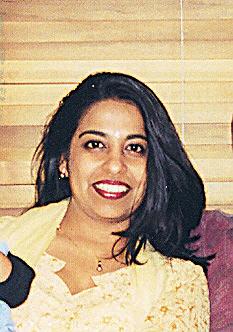
He is an artist who turns every concert into a celebration. The blur of his fingers on the tabla rivals the beat of a hummingbird’s wings and his rhythmic dexterity is beyond compare. He has won numerous accolades and awards like the Padma Shri, Padma Bhushan, Sangeet Natak Akedmi, IndoAmerican Award and Kalidas Sammaan. He received a Grammy last year in the Best Contemporary World Music category for his global drum project. As a performer, Utsad Zakir Hussain is famous for his improvisations, collaborations with artists from across the globe and a style of playing that is as inspired, as it is inspirational.
Just before he arrived in Melbourne for the Melbourne Jazz Festival, he spoke with me on phone. Here are some excerpts of our conversation.
Preeti Jabbal: You have been known to take more than 200 flights in a year. What is your favourite destination and performance venue?
Pt Zakir Husain: Home! My favourite destination is here with my wife and my daughters in LA. With performance venues, there are many that come to mind. The Herbst in San Francisco is very good, The Royal Festival Hall in London and Theatre de la Ville in Paris. In India, I enjoy performing in Prithvi Theatre because it is such an intimate environment, and I like the Shanmukhnanda Hall in Mumbai. With open venues I liked playing at the Villa Pamphili in Rome and at the jazz festival in Vienne, in the south of France.
Do you have an articulated musical philosophy?
I follow what my father said to me: be a good student, don’t be a master and you will get along fine. There is no such thing as perfection. It is futile to call yourself a master because then you are ready to hang your boots and retire. Life and music are about learning and being a student forever.
What does success mean to you?
Success to me is a creative effort that I can stand by at any point in time.
How did your collaboration with Eric Harland and Charles Lloyd to perform Sangam come about?
Charles Lloyd is the greatest living musician in the world; as an equivalent of Pandit Ravi Shankar he is to jazz what Panditji is to Indian classical music. He has been involved and interested in Indian philosophy and music all his life. Indian classical music has an element of improvisation and so does
All that’s jazz
I can’t offer enough praise to Sangam the outstanding jazz concert held at Melbourne Town Hall recently, featuring Zakir Hussain, Eric Harland and Charles Lloyd. The confluence of three musical styles created a world of shared music not only between the musicians, but between the performers and listeners. The group improvisations and dynamics of the trio swept away the set traditional structures of jazz giving the concert a unique global rhythm.
It was a befitting end to a week of jazz festivities that saw performances by renowned musicians like Lionel Loueke, Paul Grabowsky, James Shipp, Dave Samuel, Sanders Astrand, Jo Lawry, Ahmad Jamal, Miles Davis and Yvette Johansson to name a few. Jazz enthusiasts also got an opportunity to discuss and explore the technique, composition, improvisation and inspiration of exerts through Master Classes held with John Abercombie, Mulatu Astatke, Joey Baron, Mark Feldman, Peter Brootzmann and Han Bennink, Theo Bleckmann and John Hollenbeck.
After a week of innovative and traditional jazz from the world’s best, the audience was ready for a nice finishing touch. They were not disappointed as the 90-minute concert between Zakir Hussain, Eric Harland and Charles Lloyd got underway. The richness of Zakir Hussain’s velvety voice (yes, he sang as well), the whispery smoothness of Eric Harland’s drums and the melody of Charles Lloyd’s saxophone resonated in the town hall making people forget the sterility and openness of the large venue. Together the three accomplished musicians managed to create the intimacy of a jazz club.
The trio shared the spotlight as they traded improvised sections with each other underscoring their musical equity. Watching Zakir Hussain highlighting the subtle nuances of the tabla, I kept thinking of the cliché now associated with him, Wah! Ustaad Wah! By the end of the performance, as the varying styles surfaced alongside each other, there was a sense that each had been occurring simultaneously, as if the set were a sonic mural. A standing ovation ended a concert that I would recommend with no reservations and firm conviction. If you are a jazz and music enthusiast and you could not attend this musical triumph I suggest you invest in the album Sangam, it’s worth its weight in gold.
62 <> MAY (2) 2010 INDIAN LINK
STARGAZING
Preeti Jabbal
jazz, and in that sense they share a common point. Since the 1950s, jazz musicians have been really interested in Indian music. Some years ago I had the chance to play in the San Francisco jazz festival with Charles Lloyd. We played a duet together in an event called Sacred Space, and that’s how we met. Charles then introduced me to Eric Harland who is the next best thing in jazz drumming. Our interaction was very special. We were in the same area of creativity at the same time. It was a ‘triveni’, a sangam of three artists. That is how we got together. Our hearts have met at such a deep level that, you will be surprised to know, we do not rehearse before our concerts together. We meet, talk about music and many other things and the conversation continues when we play.
You have played tabla with many musicians like Van Morrison, Billy Cobham, George Harrison, Yo Yo Ma etc. I am sure each of them was brilliant; however is there anyone you would like to play with over and over again?
All of them - I would like to play with all of them again. It takes such a long time to notice the creative element of another musician. When I played with some of them I was young and brash, it took me a long time to understand the psyche of musicians like Ustad Ali Akbar Khan and get over my personal glory. It took 20 years and it is only now that I have an understanding of their art and genius. Now is the time for me to work with them again. I think I will do more justice to the thought process of creating music with these artists if I play with them again. Another collaboration that I really enjoyed and would like to do again is Melody Of Rhythm with composer and double bass master Edgar Meyers and Banjo virtuoso Bela Fleck.
You have an in-depth knowledge of ragas and talas; have you ever been inclined to sing?
No, I do not want to sing professionally. When I play I sing inside myself, but I am a much better tabla player than a singer. I have had several opportunities and occasionally I add vocals if required. For example in Sangam I have the possibility of doing something vocal, but I am a tabla artist and I should not shortchange my audience by doing much of anything else.
You have also acted in movies before, any more movies on the cards?
No, I have never pursued that career. My first love has been, is and will be tabla. The few roles I did came to me, I did not seek them. Every now and then I do something, however acting is not something I am keen on doing. I have composed music for films in the past (Zakir has composed soundtracks for the films In Custody and The Mystic Masseur directed by Ismail Merchant, Bertolucci’s Little Buddha, for which Zakir composed, performed and acted as Indian music advisor; Vanaprastham (The Last Dance), chosen to be screened at the Cannes Film Festival in May 1999; Saaz, and Everybody Says I’m Fine) and I recently did music for a movie called For Real which is slated for release in August this year.
In 1996 you composed the opening music for the Summer Olympics in Atlanta. Are you doing something for the Commonwealth Games 2010 that will be held in India?
They (Commonwealth Games Officials) have asked me to write a piece of music that will be played by young musicians and folk
musicians. We are currently in discussion over this. I have also composed music for the San Francisco ballet company. They asked me to give the music for a remake of Schehrazade This was something different for me and I have recently finished it. It will premiere in October this year.
You have been in the music industry forever; any interests other than music? How do you unwind?
know, we do not rehearse before our concerts together. We meet, talk about music and many other things and the conversation continues when we play”
I enjoy travelling with my family. My wife and I go hiking quite often. We were in Aspen recently and we really enjoyed being thousands of feet high. I also like to boat around the Mediterranean with my family. We enjoy places like Capri. Other than that, my life is all about music, I learn, create, compose, play and enjoy music.
What are you optimistic about?
I am optimistic that Indian classical music is on a very strong foothold. Indian classical music is one of the premier classical music and there is hardly any country in the world that hasn’t heard it. The audience for Indian classical music is growing by leaps and bounds and there are many talented musicians who will keep the tradition alive.
You have taught Indian classical music in Stanford and Princeton Universities. What were the similarities and differences of teaching there, in comparison to Ali Akbar College in India where you started your teaching career?
My class in Stanford was the biggest class in the University. There is a lot of interest in classical music and I have noticed many Universities in Europe and India have established classical music as part of their curriculum. The Ali Akbar College where I used to teach, is totally devoted to teaching Indian music. People spend ten years in pursuit of music and then become experts in their chosen field. With Stanford and Princeton it is one semester or quarter semester where we learn a prescribed curriculum. You can’t teach or learn the full technique in one semester, so it is more an appreciation of classical music than anything else.
You are one of the few people in the world who are familiar with all styles of playing the tabla. Do you have someone in mind who will continue your lineage?
I am a student of my father trying to pass on what I learnt from him. He had many students who are great players. My brothers Taufiq and Fazal Qureshi, Aditya Kalyanpur and Anuradha Pal (one of the few female professional tabla players) are all playing music in their unique ways. They all have their own interpretation and they have their own followers. I don’t really have any ‘lineage’ to bestow on anyone. There are many great young players who play the tabla brilliantly. I cannot earmark any one of my students who will carry my name - they are all very talented.
We beat the best with no less — TAI offers best Airfares and Packages to suite all budgets.
We Specialise in: Competitive airfares to India, Indian Sub-continent, Fiji, Middle East, Asia, Europe, South America, North America & Africa. TAI— offers Special Round the World Fares and packages to suite both individual and group travel. TAI is focused on Tailor made and prepackaged tours. Are you looking for air tickets from India our partnered offices within India can organize any travel or tours within India and prepaid tickets. Travel Air International now offers language support,
Languages: English, Hindi, Tamil, Punjabi, Arabic
Head Office
Westmead Office
Phone: +61 2 9633-2045
Fax: +61 2 9635-3829
Email: sales@travelairinternational.com
Address: Daher Centre, Level 1, Suite 24, 163 –171 Hawkesbury Rd, Westmead NSW 2145
TOURS TO INDIA
while you are visiting family or friends why not getaway and do a private tour. half day tours starting from $35 Per Person
Full Day Tours starting from $90 Per Person
Call
Think
Travel Air International—Branch


Liverpool Office
Phone: +61 2 9734-9333
Fax: +61 2 9734-9322
Email: sales.liv@travelairinternational.com
Address: 50 Railway Street, Liverpool NSW 2170
www.travelairinternational.com
MAY (2) 2010 <> 63 NATIONAL EDITION www.indianlink.com.au
“Our hearts have met at such a deep level that, you will be surprised to
Travel
of
tours.
9633-2045 and find out today
us today take a pick from our range
city
Call
Laugh out loud
Man, driving home, on phone to wife: Hi honey. I’ve got two tickets to the movie you want to see.
Toilet Break
Sir John Harrington first invented the toilet (hence ‘the john’ for toilet), but the man who took it to the masses was a plumber called CrapperThomas Crapper.
The world’s most expensive toilet is in Hong Kong, at the jewellery shop of the late tycoon Lam Sai-wing. The toilet bowls are made of 24-carat gold (as are the wash basins, bath, mirror frames, wall tiles, floors and doors). You can use the toilet if you go to his shop, but only if you spend over a certain amount.
One-third of all users flush the toilet while they are still sitting on it.
There are 333 squares of toilet paper on a roll.
The film Psycho was the first movie to show a toilet flushing – the scene caused many complaints about “indecency”

King George II of Great Britain died falling off a toilet on the 25th of October 1760
The first toilet cubicle in a row is the least used (and therefore the cleanest).
Most toilets flush in the key of E flat.
Terms in use for the toilet: powder room, lavatory, outhouse, ladies’, convenience, washroom, men’s room, bathroom, dunny, bog, khazi, gents, garderobe, necessary, women’s room, restroom, potty, privy, the smallest room, cloakroom, latrine, place of easement, water closet (WC), john, can, little girls’ room, little boys’ room, throne room, facilities, loo.
World Toilet Day takes place on 19 November each year
72.4% of people place their toilet paper on the roll forward (with the loose end over the roll, towards the user).
A Kimberly-Clark marketing survey on bathroom habits finds that when it comes to toilet paper, women are “wadders” and men are “folders.” ML
The LIES parents tell us
… when we ask them where we came from.
Found you in a cabbage. Bought you at Kmart. You were adopted. Found you at our door one morning
Dumbledore left you at our door in a basket – you have to
go to Hogwarts when you turn 12.

Bid for you on e-Bay. You were a gift from Bhagwanji (god).
Yeah, right…. ML and DL
Wife: Oh goody! I’ll start getting ready.
Man: Yes, do – the tickets are for tomorrow night.
Piano tuner: Hi, I’ve come to tune your piano.
Lady: But we didn’t send for a piano tuner…
Piano tuner: No, but your neighbours did.
Dad: How were the exam questions, Priyanka?
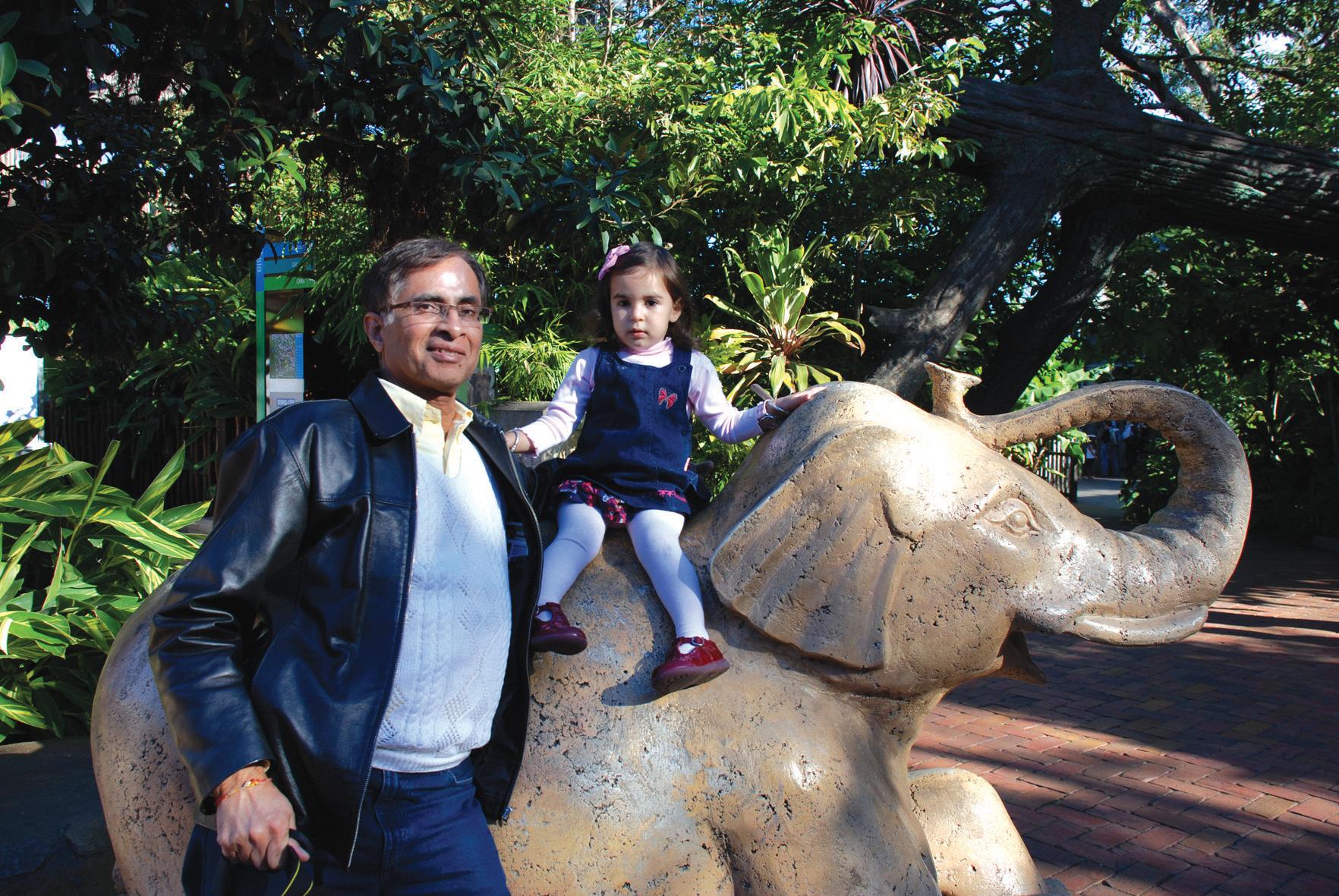
Priyanka: The questions were all fine… it’s the answers I had trouble with.
Kajol: What’s the best thing to put in a pie?
Shahrukh: Your teeth.
Anupam to barber: That’s a lot to pay for a simple haircut.
Barber: It’s a lot of hard work, to find the hair to cut.
Policeman to Sunjay: You broke into the same shop three times in one night.
Sunjay: I stole a dress for my wife, and I had to go back twice to change it.
Science teacher: What do you know about nitrates?
Akshay: They’re a lot more expensive than day rates? DL
I learnt a new word
Benevolence Desire to do good to others; charitableness DL Matriculate To enroll at university ML
Foto Corner
Pearl of wisdom Don’t let yo ur mum brush your hair when she’s mad at your dad.
64 <> MAY (2) 2010 INDIAN LINK
Kristelle Diya Poulos took her grandpa Raj Saneja out to Taronga Zoo. Grandpa loved the elephants - he thought the sculptures were the real thing!
KIDS www.indianlink.com.au

MAY (2) 2010 <> 65 NATIONAL EDITION OPENING SPECIALS INDIA FROM $1095 * INCLUDING TAXES *Conditions apply subject to availibility at the time of booking. Singapore 4 nights from $275* per person 4 nights accommodation at the 3 Star Value Hotel Thomson Return seat in coach airport transfers Sale: 30 Jun 10 Travel: 27 Sep 10 - 31 Mar 11 MOST COMPETIVE PRICES, BETTER THAN THE REST MAKE THE MOST OF YOUR STOPOVERS ON THE WAY TO INDIA Thailand - Phuket 5 nights from $155* per person 5 nights accommodation at the 3 Star Serene Resort BONUS:Buffet Breakfast daily BONUS: Late checkout until 1pm BONUS:1 x 1 hour Thai massage Return seat in coach airport transfers Sale: 31 Jun 10 Travel: 20 Apr 10 - 31 Oct 10 Thailand - Bangkok 4 nights from $149* per person 3 nights accommodation at the 3.5 Star Royal Princess Larn Luang BONUS:Stay 3 for the price of 2 BONUS:Breakfast daily Return seat in coach airport transfers Sale:30 July 10 Travel: 01 Oct 10-31 Mar 11
T20 Tamasha
The Indian team’s dismal performance in the cricket Twenty20 World Cup has given rise to many emotions, and there’s no denying that there’s a strong sense of disappointment and annoyance that once again, the team has failed to deliver on the international arena. It’s a matter of national shame, in light of the country being cricket-mad, host to the megabucks, mega-production IPL, and despite having some of the best players of the sport. A few cricket deewanas share their thoughts on what went wrong….again!
Farcical fiesta
India’s T20 World Cup campaign was not all misery (although it was farcical). We finally established that the IPL was, at most, mediocre. While playing in the IPL, every batsman in the country seemed to hit the ball as hard and long as Viv Richards. In the West Indies, however, every batsman in the country played like Akash Chopra. We also discovered that however much “talent” we have in our batting depths, we would rather run in the opposite direction than play a short ball. Instead of picking players that have proven ability against the short ball, after last year’s debacle, or at least attempting to correct these flaws, we went ahead as if nothing could possibly derail us again. Irfan Pathan’s exclusion remains an absolute mystery, because Yusuf Pathan and Ravindra Jadeja are hardly likely to make the batsmen pay any attention (which could be a good thing in retrospect). Perhaps the best person to blame for the whole mess, however, is Sehwag. He should be banned from the IPL for the pure fact that he keeps getting himself injured. Sehwag is the key to upsetting any bowler in the world, and it’s much more reassuring as an Indian fan to see other bowlers wetting themselves while running in to bowl, rather than our own
Ritam Mitra

Performance deterioration
The Indian players showed definite signs of performance deterioration at the T20 World Cup, but can you blame them? The high intensity at which the game was played through quite a long tournament was bound to affect their fitness when they needed it most. In the T20 what caused their losing was the batsman inability to make runs top of the order and the late night running of the game. Their fitness levels were low and they could not perform at the top level.
The Indian team lacked the high energy, single-minded motivation to win; they lacked a strong commitment to teamwork, mental toughness and when under pressure, they just couldn’t rise to the big occasion. Perhaps they did too much during the IPL. They looked placid, over-relaxed and composed; they had a low drive and were very submissive.
It’s DejaVu all over again!
Indian cricket administrators have tried to convince the world that the Indian Premier League (IPL) was the best thing to happen to Indian cricket, but with yet another humiliating performance of the national team at the T20 World Cup, the conduct of this cash-rich mega circus is making Indian cricket the laughing stock of world cricket. The selectors and the administrators are still clueless and full of excuses. does not require an Einstein to figure out why the weary, unmotivated, injury-ridden Indian players, after 45 days of non-stop cricket, were not physically and mentally in top condition to face the best cricketers in the world. A true Indian cricket fan gives a damn to what happens to various franchises in the IPL, but does care about his team winning in test matches and World Cups. Instead of preparing the troops for war, the Indian cricket its team in entertaining the masses at the 45-day romp across all corners of India. What are they trying to prove? How many failures will it take to make Indian cricket realise that a gruelling tournament like the IPL - so close to the World Cup - is not ideal preparation for cricketers to be in top physical and mental form. Let’s hope that with this seismic jolt to Indian cricket, there in strategy for the 2011 World Cup, which is less than 10 months away and in their own backyard! Do whatever it takes to prepare the team for national duty instead of filling coffers with tournaments designed only for pomp and show.
Yogendra Bhatnagar



Stop reacting, start acting
Another world cricket tournament and yet another failure from the much hyped “Men in Blue”... the World T20 champs from 3 years ago! As usual the vultures are out and asking for a major revamp to Team India, with both commentators and ex-players (some of who have been know for committing much greater sins on and off the field) blaming the players for their poor show. For starters, we did not go into the tournament with our best players, for reasons that are partly due to injuries, retirement, politics or favouritism. At the start of the World T20, Dhoni categorically denied that having the IPL so close to the international tournament was dangerous for Team India and they almost proved it by winning the first 2 games. But later, after their spectacular exit, he blamed the constant travelling and late night parties during IPL for their loss. This did not go down too well with either BCCI or the commentators, and there are already talks of replacing the captain. For once I hope the team selectors and authorities stop reacting and start acting, as the problem does not lie with the skills of our players but rather in the way they are being applied; and this can not be rectified by random chopping and changing.
Prashant Dixit
Rediscover patriotism
In India, team selection for the World Cup seemed to assume that any player who did well in the IPL could pull the same punch at the T20 World Cup. But they couldn’t have been more wrong, as the bowling pitches indicated. Our bowlers were used to the flat pitches during the IPL, so a bouncy pitch in the West Indies completely threw them out of gear. This, coupled with the absence of some of the best players like Tendulkar, Dravid, Sehwag and Laxman, who best know how to deal with chin music, spelt doom for the Indian team.
Motivation was at an all time low, and it seemed that the players were happy to perform in glitzy and glamorous arenas, which would showcase themselves. There seemed to be no national interest, no desire to put up a fight for their country, no sense of national pride. And thanks to the IPL and those exciting after-game parties, they were fatigued and had perhaps just one practice match at a time when they needed to show their might on the international arena. It’s one thing to play in a team with top-notch players like Mitchell Johnson, Shaun Tait and Shane Watson, but it’s a completely different ball game when they’re in the same team and you’re playing against them. The Indian team needs to rediscover their patriotism not just for the nation, but also for the game of cricket.
Amar Dixit
Sanjiv Dubey
I wish the BCCI would take a leaf out of this failure in the T20 World Cup and work towards player support functions (like physiotherapists, psychologists, trainers, etc.), specially when they need to perform in high-intensity tournaments like the IPL just before the World Cup. This will help players maintain their performance, enthusiasm and intrinsic motivation to participate and win. They should keep this in mind when planning future IPLs. Young players should learn to focus on factors which bring success, and eliminate distractions of overnight stardom through IPL, as success in sport requires continuous improvement. This is, of course, easier said than done!

66 <> MAY (2) 2010 INDIAN LINK SPORT
Anand cements place among all-time greats
V. KRISHNASWAMY on Anand’s World Chess Championship win
Chess players are by nature a sensitive lot. The slightest of things upset them - even the colour of the chair they sit on! So, to be forced to travel by road for 40 hours, on the eve of the World Championship match, would without doubt have been a trying time for one defending his world title.
But not for Viswanathan Anand.
With volcanic ash from Iceland forcing a suspension of flights all around Europe and the World Chess Championships organisers refusing to change the dates, Anand travelled by road to reach Sofia, Bulgaria, the venue of the world championship, to meet Veselin Topalov.
Anand lost the first game to Topalov, but quickly found his feet, bounced back and won the next two games. He held the lead past the midway stage and held his nerve when Topalov equalized in game eight. Then came the cruncher in game 12 where Topalov held the advantage of white pieces, but Anand came out with flying colours.
He won in 56 moves.
Showing a level of maturity that has come with age and experience, Anand chose a practical opening - the Queen’s Gambit Declined Lasker Variation widely considered a safe opening for black - and then proceeded to dismantle the normally aggressive Topalov to win 6.5-5.5 and retain the undisputed world title for the third time.


Anand’s father R. Vishwanathan said in Chennai that it was his son’s determination that helped him retain the world title in Sofia, Bulgaria.
“He was quite determined to win this time and his determination played a key role.
Now with the world title in virtually all formats - knockout, tournament and matchplay - Anand has legitimate reasons to stake a claim to being one of the all-time greats in his sport
It is a great win. He had prepared hard for the last two-three months. The preparations were different this time, because he was playing against Veselin Topalov,” he said.
“It was all not easy for him to reach Sofia. All flights were cancelled and the road journey to Bulgaria was not easy. But Anand is known for his determination. He was not bothered with all these things,” he added.
Anand’s wife Aruna, who is also his manager, termed the victory as emphatic.
“It was an emphatic win. The preparations were at a high level. It was a tense match. He didn’t have a good start but then played extremely well. To win the title was really nice,” she said.
All India Chess Federation (AICF) president N. Srinivasan said: “The champion showed his class. We are proud of his resilience and victory.”
Before the latest win, he won in 2007 and 2008. And even before that in 2000 he won the title for the first time in a knockout format.
Widely considered as the greatest Indian sportsman, Anand, born Dec 11, 1969, has been among the game’s elite for more almost two decades. Now with the world title in virtually all formats - knockout, tournament and matchplay - he has legitimate reasons to stake a claim to being one of the all-time greats in his sport.
Not till a few months before defending his title against Kramnik in 2008 when he fell to No.5, Anand was always in the
top-3 of the world for almost 15 years.
In the 2007 World Chess Championship in Mexico City, Anand won the eight-player, double round robin tournament with a total of nine points out of 14, with a total of 4 wins and 10 draws. Anand was the only undefeated player in the tournament.
In 2008, he successfully defended the title against the previous world champion, Vladimir Kramnik, beating the Russian in the famous Battle of Bonn 6.5-4.5 with one game to spare in the 12-game final.
Now the win 6.5-5.5 over Topalov in 2010 adds lustre to his six chess Oscars, the last of which came in 2008. Anand has won the Chess Oscar - an award given by polling votes from the global chess fraternity, including players and best writers across the world - a record six times, with the wins coming in 1997, 1998, 2003, 2004, 2007 and 2008. His six Oscars make him the best ever, with Kasparov having won it only four times and Bobby Fischer three.
Anand, who learnt the game from his mother Susila Viswanathan, learnt the nuances while following the game on chess in Manila, the Philippines, where his father R.Viswanathan, a senior railway officer, was posted for some years in the early 1980s.
Anand’s early success in the sport came in 1983, when at the age of 14, he stunned the field with a nine out of nine perfect score winning the National SubJunior Chess Championship.
A year later he became the youngest Indian to win the International Master’s Title at the age of 15 in 1984.
By 16, he was the National Champion and he won it twice more.
Playing his moves at great speed, he earned the nickname of “Lightning Kid” and also “Tiger from Madras”. In 1987, he returned to Manila, to become the first Indian to win the World Junior Chess Championship.
In 1988, at 18, he earned three Grandmaster norms in a span of less than 12 months and in December, he became India’s first Grandmaster.
His first big moment came at the Reggio Emilia tournament in 1991 where he finished ahead of Garry Kasparov and Anatoly Karpov, signalling his arrival at the world stage.
In 1991, Anand lost in a tie-breaker to Anatoly Karpov in the quarter finals of the FIDE Knockout World Chess Championship.
As the world of chess split, Anand also played in the Kasparov promoted Professional Chess Association and reached the final, where he lost to Kasparov in New York City’s World Trade Centre. After eight draws, Anand broke through with a win in the ninth game.
But then the more experienced Kasparov hit back and won four of the next five games and went on to win the match 10.5-7.5.
In 2000, Anand’s win at the FIDE World Championships in New Delhi and Teheran did not impress the chess fraternity, which still considered the classical Matchplay as the real world title.
But on the tournament circuit, Anand continued his domination in various forms, winning Advanced Chess tournaments in Leon, Spain, and the Chess Classic of Mainz, where he won the title 11 times.

His five successes at Wijk Aan Zee have been a record and he has also won in Dortmund and Linares, the latter three times.
In 2007 he won the Linares-Morelia with the world’s top players in attendance, though Kasparov had retired by then. The tournament was played to crown the undisputed world champion and Anand was finally one.
Then with critics still claiming Anand had not won a title in Matchplay, he came up against Kramnik, who had dethroned Kasparov.
Anand decimated Kramnik and went three-up in first six games, before Kramnik began his fight. The Russian challenger won the tenth game, but that only narrowed the deficit to two points before the Indian drew the 11th game and won 6.5-4.5 to retain his world title.
Anand is the only player to have won the world title in three formats - the 128-player FIDE Championship in 2000, the closed tournament format in LinaresMorelia in 2007 and now the Matchplay against Kramnik.
In October 2003, FIDE organised a rapid time control tournament in Cap d’Agde and called it the World Rapid Chess Championship. Each player had 25 minutes at the start of the game, with an additional 10 seconds after each move. Anand won this event ahead of ten of the other top twelve players in the world with Kasparov being the only missing player.
Apart from six Oscars, his other awards include the Arjuna award for Outstanding Indian Sportsman in Chess in 1985; the Padma Shri, National Citizens Award and Soviet Land Nehru Award in 1987; the inaugural Rajiv Gandhi Khel Ratna Award, India’s highest sporting honour in the year 1991-1992. His book, My Best Games of Chess also won the British Chess Federation ‘Book of the Year’ Award in 1998.
MAY (2) 2010 <> 67 NATIONAL EDITION
SPORT www.indianlink.com.au
BUZZThe
Raajneeti stands firm
Director Prakash Jha is one hassled man of late, as problems with Raajneeti seem to escalate. First a city-based social worker filed a petition in court against the film, and now actor and self-styled star Kamaal R. Khan has sent a legal notice to Jha claiming copyright over the film’s title.

Social worker Naseem Khan filed a petition asking for the film’s release to be stopped because one of the central characters apparently resembles Congress president Sonia Gandhi. Now, Kamaal R. Khan, or KRK as he likes to be called, has sent Jha a legal notice. When contacted, Jha admitted that Kamaal, known to generate publicity for himself through various controversies, has sent a legal notice claiming copyright.
“But my lawyers are looking into it. There’s absolutely nothing in this claim. We shouldn’t give any importance to people who jump into the picture at the time of release for whatever reasons. Look at the way Rakesh Roshan is being harassed over Kites by some person claiming to be entitled to crores of rupees,” Jha maintained. “Earlier, we had someone making claims over Ram Gopal Varma’s Rakta Charitra days before release. This is not done!”
Tackling Naseem Khan’s claims that Raajneeti casts aspersions on one of the most prominent politicians of the country, Jha said: “Let all these self-styled supporters of Soniaji come forward to show their loyalty. Am I an irresponsible citizen and filmmaker who would do something so foolish as to portray Soniaji in a bad light?”
Sherlyn joins the fitness bandwagon
After actors Shilpa Shetty and Bipasha Basu, item girl Sherlyn Chopra is all set to feature in a fitness DVD.

A content provider has approached Sherlyn to feature in the project. The workout regime is being designed by experts in a manner which will not only strengthen the body, but also the mind. It will be a unique blend of weight training, functional training and yoga.
“Sherlyn is preparing for her new venture by participating in yoga sessions six days a week. It is the primary reason why Sherlyn loves getting out of bed early in the morning,” said a source.
Rumour is also rife around Bollywood that Sherlyn’s been invited to pose nude for Playboy magazine. Now that will certainly be a huge hit for the sexy seductress, but how will folks back home react?

From fitness DVD to Hugh Hefner’s bunny, that’s certainly a step in the right direction, Sheryln!
“Kudos to the gutsy Jha for standing up to these publicity hounds.
The holy trinity of music
Musician A.R. Rahman, lyricist Gulzar and sound designer Resul Pookutty are the trinity - the Brahma, Vishnu and Mahesh - of Indian cinema, said Maharashtra Governor K. Sankaranarayanan recently. The governor was speaking at the launch of the Malayalam autobiography of Oscar-winning sound presented the first copy of the book to
Raajneeti. How does anyone presume that Katrina’s character has any resemblance to Soniaji? Have I said this anywhere? Has Katrina said it anywhere? Let Soniaji watch Raajneeti and decide.”
About an out-of-court settlement with Naseem Khan, Jha said emphatically, “Over my dead body. I’d burn the prints of my film rather than give in to such blackmail. No outof-court settlement for me. I’ve seen enough legal obstacles in my life. This is nothing.
Congratulating all three for their contribution to the Indian film industry, Sankaranarayanan credited them for the success of Oscar-winning film
Millionaire
“Resul’s work as a sound designer, production mixer, editor and postproduction re-recording mixer, has brought international acclaim to Indian cinema,” the governor said.
Lyricist and filmmaker Gulzar and musical maestro Rahman also congratulated Pookutty
“Will be off soon to Scotland...very excited
68 <> MAY (2) 2010 INDIAN LINK
ENTERTAINMENT
ABHILASHA SENGUPTA brings us up-to-date on what’s hot and happening in Bollywood
PRAKASH JHA
(Find the answer under
Contest) GUESS WHO ? Famous for being famous? India’s answer to the Hilton/Kardashian sisters.
Caption
you all for all the love, appreciation and support,” he added.
Well, let’s hope Pankaj and Shahid enjoy some bonding time in sunny Scotland.
Big B’s baritone on blog
After the success of his blog, Bollywood megastar Amitabh Bachchan launched his voice blog Bachchan Bol and is glad to know that this service too has become immensely popular among his fans.
“The managers of Bachchan Bol that was initiated in April inform me that subscribers are rapidly increasing in numbers. We now have 200,000 plus and they inform me that the state of Bihar has the lead in numbers followed by UP (Uttar Pradesh), Maharashtra and Punjab.
“The controllers of UP are upset that despite the fact that I was born there, the numbers of Bihar are greater and they are now getting down to pushing the market to be able to outdo the numbers from other states,” the 67-year-old megastar posted on his blog.
“Such a joy to learn of this sincere, friendly competition. But all said, it is most humbling to find that the service is doing well and that there is a sizeable clientèle building up,” he added.
The Big B’s certainly a techno-savvy bloke!
Abhishek needs a lucky break
Abhishek Bachchan’s last two solo hero films have flopped and he has not been seen on screen for a while. But, then again, he is doing director Mani Ratnam’s Raavan and the combination has never failed so far. Which is why, all attention is now on Raavan
“The combination of Mani Ratnam and Abhishek is unbeatable. People are really looking forward to seeing them once again. With such a star cast and Mani Ratnam as director, the film is bound to work,” said trade analyst Taran Adarsh.
Made at a budget of about Rs.45 crore, Raavan, also starring Aishwarya Rai and Vikram, is scheduled for a mid-June release.
Ratnam has played an important role in shaping Abhishek’s career - the director’s Yuva established him as an actor and their second venture together, Guru, won him critical and commercial success.
The Little B has hardly made an impact in Bollywood since the past two year. Both his solo hero movies Drona and Delhi 6 bombed, but industry insiders feel Raavan might turn the tide. “Mani Ratnam and Abhishek Bachchan will create bigger magic with Raavan than Yuva and Guru. Mani is an expert on dark themes and Abhishek pulls off such roles very well.
Raavan will do spectacular work,” film critic Omar Qureshi said. After all, it was the rough, uncouth and ruthless goon Lallan Singh in Yuva in 2004, which truly brought out Abhi’s worth as an actor. Despite playing a negative role, he not only wowed critics but also impressed the audience.
After that there was no looking back for Abhishek. He scorched the box office with Dhoom, Bunty Aur Babli, Sarkar, Dus and Bluffmaster, with a cameo in the hit film Salaam Namaste

“Before Yuva, Abhishek didn’t have an actor kind of image. After Yuva, people were like, ‘Oh my God! This guy can act!’ But Mani sir was convinced that Abhishek could really do it,” said a source on condition of anonymity.
Ratnam not only gave Abhishek pathbreaking roles but also presented him in dark roles.
And now, Raavan will once again see Abhishek as a villain, with lots of emphasis on his looks and body language. The film has lots of action scenes and stunts.
From diving from a 90-ft cliff into water to standing under a waterfall for two hours and braving snakes and leeches in Kerala’s forests, Abhishek did it all for Raavan
“This is the most physically and emotionally challenging film I have ever done in my life. And it’s not about going to tough locations or tough scenes,” revealed Abhishek. “The film drains you but you feel so good at the end of the day because you feel that you have done something. Getting a movie like Raavan is so rare. You don’t get such roles today.”
With much hype surrounding the film, expectations are high and people are hoping that the Abhishek-Ratnam combo will strike bull’s eye at the box office. And considering what Bollywood’s churning out these days, so are we!
Award for Vidya
Bollywood actress Vidya Balan, will be honoured with the ‘Smita Patil Memorial’ Award for her “outstanding” contribution to the film industry.

Priyadarshini Academy chairman Nanik Rupani said, “Vidya Balan is an excellent actress. She is modern yet contemporary and has done decent and powerful roles. Her performance in Paa was outstanding.”
Priyadarshini Academy is an NGO which is engaged in socio-cultural and educational activities and has been holding the biennial award function since its inception in 1984.
In 2008, Preity Zinta was felicitated with the award. Other celebrities like Yash Chopra, Karisma Kapoor, Urmila Matondkar, Aishwarya Rai, Madhuri Dixit and Kareena Kapoor have also been bestowed with this award.
Congrats Vidya, well-deserved indeed!
Tim Burton’s fascinated by India
Internationally acclaimed Indian filmmaker Shekhar Kapur says he has invited Hollywood director Tim Burton, who specialises in dark and quirky themes, to scout for locations in India for a film.
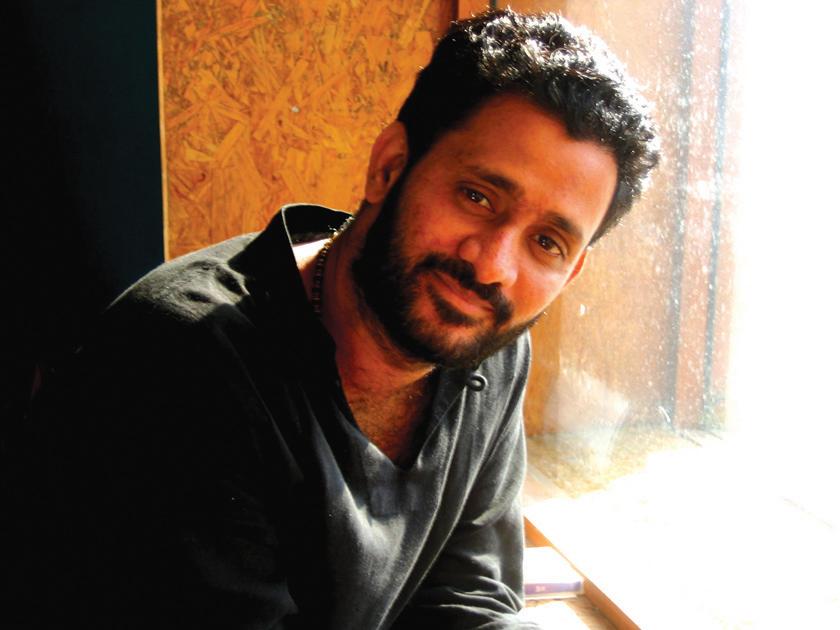
“Tim Burton is a compassionate and gentle person and so eager to learn about other people and cultures. He is also completely fascinated by India. So I have invited him to come and see if there is something he would like to shoot in India,” Kapur, 64, posted on his blog www.shekharkapur.com/blog.
Burton, 51, has wielded megaphone for movies like Batman, Batman Returns, Planet of the Apes, Charlie and the Chocolate Factory, Sweeney Todd: The Demon Barber of Fleet Street and Alice in Wonderland
He is known for bringing magic realism out of the books onto the big screen.
“India is a country that accepts mythology and magic realism as an essential part of its culture, as does Tim Burton in his filmmaking. It would be fascinating to see Tim Burton’s visual take on some of our tradition folk tales,” said Kapur. Kapur is serving as a jury of the 63rd Cannes International Film Festival headed by acclaimed filmmaker Burton.
“It’s very exciting to be on the Jury of the Cannes film festival. Especially when the Jury is headed by the man I affectionately (but also seriously) call ‘the Salvador Dali of Cinema’,” wrote Kapur.
He also attended a gala dinner inspired from Burton’s works.
“For the first dinner with the jury, the chef had designed the dinner as an ‘inspiration’ from Tim Burton’s movies! Everything looked like it was from the Mad Hatter’s dining table (from Alice in Wonderland),” he posted.
“And while it was terrific looking and delicious, I kept waiting for the rice! After all what’s a meal without rice and dal, or roti and dal?”
Don’t know about you, Shekhar, but if Tim does make a movie in India, what are the odds that Johnny Depp’s going to be in it? Lucky India!
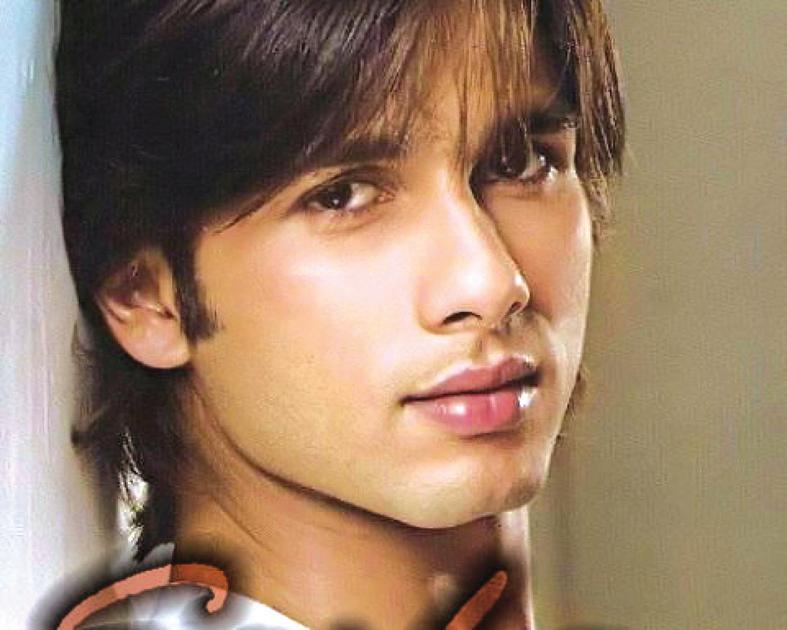
Khandahar at Cannes
Acclaimed filmmaker Mrinal Sen’s awardwinning film Khandahar was screened once again at the Cannes International Film Festival. First screened in Cannes 26 years ago, the film was shown again at the 63rd edition of the Festival.
The film starring Shabana Azmi, Naseeruddin Shah and Pankaj Kapoor, was viewed in the Cannes Classic 2010 programme. In 1984, it was screened in the ‘Un Certain Regard’ section.
Khandahar is about a city-based photographer who falls in love with a heartbroken woman living in a ruined village.
The original print of the film had suffered from a number of material issues including bad splices, tearing, dirt, scratches, flickers, stabilization, grains, noises, splice bumps and image warps. The film’s audio was impaired with various anomalies following years of deterioration, said a statement. As part of the National Film Archives of India’s initiative for digital restoration and content processing of over 1,000 classic films, Reliance MediaWorks undertook the restoration
Celina Jaitley and Viveik Oberoi? Send

Last issue Caption Contest winning entry
What’s SRK thinking as he hands Juhi the award?

“I need to stop being seen with Juhi or people are going to think I’m as old as her.”
Aakriti Gupta, Casula NSW
Aakriti wins one free ticket to new Hindi film Kites
Another good one
“Yes, let’s give her an award too – poor thing, she feels so left out these days ….”
Nisha Bharadwaj, Dalkeith WA
MAY (2) 2010 <> 69 NATIONAL EDITION
www.indianlink.com.au
RESUL POOKUTTY
VIDAY BALAN
SHAHID KAPOOR
GUESS WHO :ANSWER The Sen sisters,
ABHISHEK BACHCHAN
CAPTION CONTEST
Raima and Riya
in your responses to info@indianlink.com.au and win a surprise prize
Cine Talk
Smartly made, but flawed in parts
Film: BadmaashCompany
Cast: Shahid Kapoor, Anushka Sharma, Meiyang Chang, Vir Das
Writer/Director: Parmeet Sethi
There’s a longish sequence in an American eatery in the second-half of this deeply flawed and yet refreshingly cool, urbane, casual and highly cinematic work where Shahid Kapoor’s Karan, by now on the road to seemingly irredeemable moral degeneration is told by his partner, played by newcomer Vir Das, that he wants out.
The way that sequence progresses, and the manner in which the two actors play out a conventional friends-fallingapart moment, just makes you forgive all the excesses of inflated self-worth that the script suffers from in the last 90 minutes of this endearing though exasperating experience.
Badmaash Company is a film that is too smart for its own good. The main characters, four friends bonded by the

collective will to grow rich overnight, go through a series of caper experiences.
Not all of it is either convincing or even interesting. After a point, we know exactly where this quartet is hurling to. And the slide out of moral degeneration is never touching enough to make us shed a tear for these misguided overreachers.
The doom comes none too soon, and then the narrative proceeds without a proper graph. By the time Karan (Shahid Kapoor)’s spunky girl Bulbul (Anushka Sharma) leaves him, the script begins to look like one of those subverted morality tales from the house of the Bhatts where the heroes talk with clenched fists and heroines weep in their pillows as their companions come home in a drunken stupor.
We’ve been here before. But wait. There is a sense of intuitive cockiness about the narrative which just sees the film’s improbable mixture of the trendy and the trite to the final stretch of predictable moral redemption.
There is a sense of the predictable and yet the unpredictable in the storytelling. Debutante director Parmeet Sethi’s screenplay is one of those things
that you want to believe merely because it sounds so smart on paper. But not all of this makes complete or even incomplete sense. The climax about colour-bleeding shirts being sold to America as the Next Best Thing is much too far-fetched to work even as a part of a con caper.
Nonetheless, Badmaash Company has a lot going for itself. The firsthalf when Karan meets Bulbul, Zing and Chang to create an instantly materialistic energy, gets you interested in these out-of-control lives. You don’t quite empathize with their overweening goals. But at least they seem to know their minds, even if on occasion the plot doesn’t seem to know what it’s doing.
There’s something pitch-friendly about the four actors and the way they tackle the plot material, sometimes cool, sometimes over-reaching itself. If the film holds together, it’s because of the bonafide enthusiasm and unconditional surrender to the proceedings of the actors.
Shahid Kapoor pitches in another perfectly poised and subtle performance even though his character’s graph gets blurred towards the end. You can’t stop
caring for Karan’s character because Shahid doesn’t let go of his centre even when the narrative gets shaky.
Anushka Sharma in a stunning makeover conveys her character’s spirit and spunk through her well-toned body language and that twinkle in the eye. Tragically a lot of her speech and morality, and this goes for a lot of the film’s careless periodicity, is not 1980s (the film’s setting) at all.
Vir Das as the film buff with a roving eye negotiates his character with gentle care. Here’s one actor who knows what he’s doing even when his character doesn’t. And Meiyang Chang as the chinky-eyed alcohol guzzling Gangtokguy seems made for his character.
Badmaash Company is an extremely smart and smart-looking film. But its sassy all-knowing tone cannot hide a certain bankruptcy of genuinely inventive ideas. This is a fatally-flawed film about seriously flawed characters.
The packaging is glamorous but not over-done. The dialogues convey a ring of truth without bending backwards to be cool. Badmaash Company has enough going for itself to make it an experience worth our while.
ENTERTAINMENT
A thriller without fizz
Film: Chase
Cast: Anuuj Saxena, Udita Goswami, Tareena Patel, Samir Kochhar, Gulshan Grover; Director: Jagmohan Mundhra
Let the chase begin. The opening chase, which lasts approximately 10 minutes, is among the best slickness-on-skids situation styled for a Hindi film. And full marks to the people behind it. But soon
also happens to be the film’s producer, slips into a coma. Er....and so does the film.
Never quite sure of whether it wants to be a slick thriller or an espionage adventure saga, the narrative just collapses in a heap of ineptly conceived situations about corrupt officials and honest investigators.
The outer-limit of ludicrousness is the nurse, played by the pretty Udita Goswami, in the shortest of skirts, trying to bring alive the comatose hero by slithering and sliding all over his inert body.
Wish someone would do a seductive dance over the narration.
Chase never quite overcomes the cheesy impulse, moving from one absurd episode to another, not quite the pacy thriller that one would think the introductory chase would lead us into.
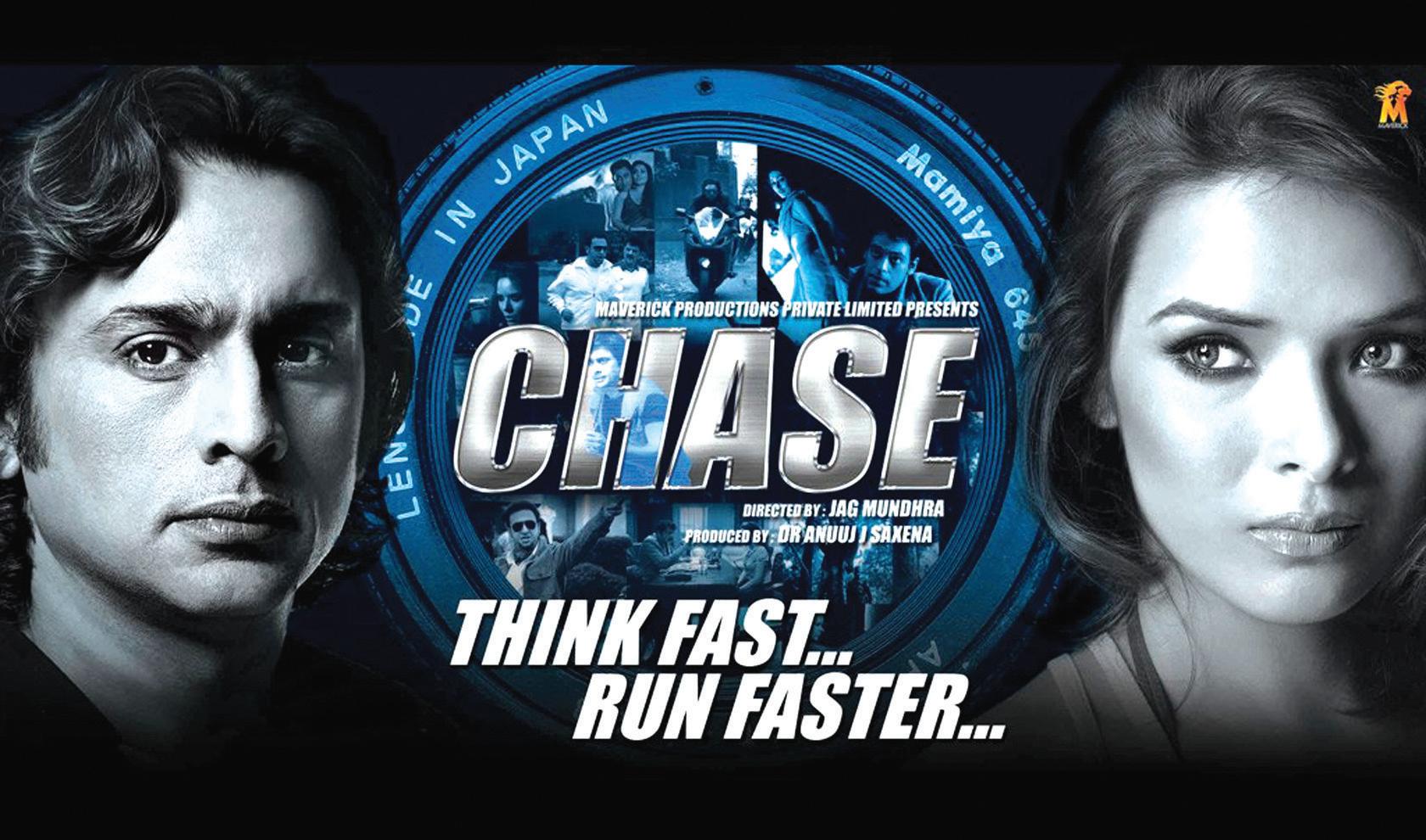
some of the later stunts with some style. However the overall impression is that of a tired fugitive giving his shadow the chase.
The performances are uniformly amateurish. The cast includes the legendary Shammi Kapoor’s son Aditya Raj Kapoor playing the kind of shady tycoon that went out of style with the action-dramas of Rajiv Rai.
Here’s a film that has plenty of skidding wheels and is constantly on the movie.
But it still fails to move us. Except out of our seats for hastily moving towards the nearest exit for some fresh air.
Speaking of the great outdoors, there’s a romantic song, totally out of place, shot picturesquely in Jammu and Kashmir.
Wish the rest of the over-edited film also had some breathing place.
Outlandish, exasperating
Film: HaiMarjawaan!
Cast: Shabana Azmi, Goldy Notay, Sendhil Ramamurthy, Jimi Mistry Director: Gurinder Chadha
In Gurinder Chadha’s Hai Marjawaan! (It’s A Wonderful Afterlife), ghouls rise from the dead and mess around with ladles of curries and gravies in what could easily be termed the most messy climax of desi-gone-ballistic cinema.
By the time the masala curries, chutneys, gravies and other acidic edibles begin to fall across a singing-dancing gathering of NRIs at a big fat Punjabi wedding, the plot is too far gone to be called eccentric or even bizarre.
Hai Marjawaan is one of those films that should not have happened. It is way too strained in concept and far too outlandish in execution. It doesn’t hold the audiences’ interest beyond the first 10 minutes when we see the benignly murderous Mrs Sethi (Shabana Azmi) surrounded by ghosts of the people she killed because they wouldn’t let their kin be married to her overweight daughter.
The ghosts in this half-baked attempt to combine spook with satire, spend the film’s entire playing time counselling and cajoling the harassed Mrs Sethi.
Beyond a point, watching the murder victims with the murder weapons permanently in place begins to get tedious and nauseous. For how long can we watch a man with chicken curry bursting out of his intestines? Or a woman with rolling-pin sticking out of her head? The ghosts try to be funny...but they are just exasperating. Make no mistake. This film has great redemptive qualities. But the romantic lead, Sendhil Ramamurthy, is certainly not one of them. After the hype about making the ladies swoon, Sendhil turns out to be pretty much a ramp-walker on camera adding precious little to a badly-written part.
A warm journey from innocence to awareness
Film: Bumm Bumm Bole
Cast: Atul Kulkarni, Darsheel Safary, Ziyah Vastani, Rituparna Sengupta
Director: Priyadarsha
Iranian filmmaker Majid Majidi’s Children Of Heaven comes down to earth in an endearing spiral of the spell-binding and the sensitive.
Let’s not get unnecessarily and unjustly nostalgic about the original Iranian film. This remake, done up in shades of terrorism in the idyllic northeast (region unspecified) is so lyrically lush in its visuals and so gently evocative in treatment that the original material is forgotten 10 minutes into the narrative.
A great deal of the credit for the film’s immense, intense but toned down impact must go to the children - Darsheel Safary no longer the buck-toothed moppet from Taare Zameen Par, and little Ziyah Vastani who’s quite easily the most delightful new discovery of the year.
Ziyah, in fact, steals many scenes from under her brilliant co-star’s nose. If he minds it, he doesn’t show it.
Darsheel and little Ziyah create an intangible and secret world of hushed wonderment and discovery that takes the narrative far beyond the precincts of the original fable about an impoverished pair of siblings’ desperate but disarming attempt to share a pair of shoes.
Yup, Bumm Bumm Bole is quite a ‘shoe’ stopper. The fable is expanded to accommodate a world filled with pain, pleasure and other emotions that emerge in the journey from innocence to awareness.
Unlike Vishal Bharadwaj’s The Blue Umbrella or Children Of Heaven, this film doesn’t try to be wise at the children’s
expense.
Frequently you feel Priyadarshan allowed the children to instinctively empathise with, if not fully understand, the political complications underlining the social issues of poverty and socio-communal solidarity in times of stress and longing. Unlike other recent parables on children, innocence and violence set in idyllic spots like Santosh Sivan’s Tahaan and Piyush Jha’s Sikandar, Bumm Bumm Bole doesn’t forget to be an entertaining story. Priyadrashan, fresh from the triumph of his other socially relevant drama Kanchivaram, imbues the pale but passionate dusky light of the mountainous locales with oodles of warmth and emotion.
The kids don’t take over the show. They just slip into the proceedings like two scoops of ice cream into a ready steady cone.
Darsheel shows a definite and reassuring progress as an actor since his debut. His rapport with his screen sister jumps out of the screen and pervades our senses unconditionally. You just want to steal little Ziyah from the screen and take her home.
The two kids are amazingly good. The ever-dependable Atul Kulkarni puts in a supremely credible turn as the harried father who doesn’t forget to smile when the kids are around.
Like other fabulous or farcical creations by Priyadarshan, this one too is shot on picture-postcard locations with the cinematographer Selvi and the art director Sabu Cyril adding that extra bit of lyricism to every frame without showing off.
Bumm Bumm Bole is a gentle but persuasive piece of work, not just for children - though certainly about children who learn fast about the harsh realities of life.
The film follows their trail without getting bitter cynical or hysterical. The constantly even tone is a boon. The kids are a blessing. This film is a soft-spoken and delicate piece of cinema. Not to be missed.
Subhash K Jha, IANS
On the other hand, Goldy Notay as the fat girl with no marriage prospects fills up the screen with her affectionate warmth.
It’s Shabana Azmi who finally adds spark to this film. Infusing an intuitive candour to her eccentric larger-than-life character, Shabana lifts almost every sagging scene.
But where are the real warm-hearted characters from Chadha’s Bend It Like Beckham in this one?
Ironically, the most real character in this ode to the spirit of maternal over-protectiveness is a British girl names Linda, played with effective selfirony by Sally Hawkins.
Lately returned from India after an enlightening experience, Linda’s passion for Indian spiritualism in many ways defines the Westerner’s quest for nirvana that makes them look ridiculous to the outsider.
In many ways the same holds true of the film. It tries too hard to move away from the stereotypes of diaspora cinema. The elements from the dead that pursue the harrowed mom are so baroque in their other-worldliness you wonder how they ever thought they could link themselves to the fate of an unmarried Indian girl.
The weird Hindi-dubbed version of It’s A Wonderful Afterlife only compounds matters. Whoever advised the director to dub in Hindi is not her friend.
If you are a die-hard Shabana Azmi fan, you could watch this film for the sheer joy of seeing her take over the show without getting in the way of the scary humbug that sticks out of every nook and corner.
But if you are a fan of Gurinder Chadha’swork, then rent a DVD of her earlier Bend It Like Beckham instead
MAY (2) 2010 <> 71 NATIONAL EDITION
www.indianlink.com.au
Trouble maker
Dear Auntyji
My husband and I are having some problems which I’m sure we will sort out. My problem is that my 11-yearold son is now having behavioural problems at school - where he faces disciplinary action for hitting other kids. How do I deal with this? Why is my son becoming so angry? What can I do Auntyji, please help me.
Auntyji says
Aaah...whenever there’s a family in trouble, it’s usually the kids who manifest the issues. I’m sure your son is aware of the tension between you and your husband, he is simply asking for attention. Have you spoken with your son to see what the issues are, or do you simply leave that to his teachers? Talk to your son, spend time with him and find out what’s troubling him. Also, I would get him involved with some sports, as this always helps release all the testosterone floating around in juvenile bodies.
Whatever you do, don’t pretend this is not happening or don’t just send your son to see a doctor. You can deal with the situation effectively. Further, sort out the issues with your husband; they are probably serious if your son is displaying such problems. Remember, kids usually display all the symptoms of an unhappy family, only most of us or parents are too blind or in denial to do anything about it. Don’t fall into that trap.
In-law outlaw
Dear Auntyji
Hello, Auntyji how are you? You seem to be such a wise lady, I was hoping
Ask Auntyji
that you could help me out with a problem I have. My mother-in-law arrived from Pakistan 6 months ago to live with us. While she has been helpful with the kids, she is now beginning to take over the house. She tells us when to wake up and when to have breakfast and when to go to sleep and where we should go on the weekends and what we should wear.
I am beginning to dislike the old bat. We got along well at first, but now’s she’s just an interfering old cow. She told me that I don’t look after Fardeen because I don’t make him warm milk at night. She also says that because I don’t stay home, I’m a bad mother. Bilkul nak me dam kar diya hai unho ne. Fardeen says she is his mother and he loves her and doesn’t want to get in the middle of anything. However, I am getting fairly unhappy about it. I want to send her back to her daughters in Islamabad, but I don’t want to look like the sulky daughterin-law. Main kya karoon? Please kuch advise
dijiye na Auntyji
Matrimonials
SEEKING BRIDES
Australian permanent resident, Sachdeva/Arora Hindu boy, 5’6”tall, 32 years, born on 30/08/1977, never married, good at heart, caring and loving by nature. Seeking good looking girl for marriage, having good moral values, family oriented, caring, honest and educated girl. Nationality no bar. Email sachdevasunil30@gmail.com
Seeking homely Bengali girl from families in Australia or India for my son (nurse), 28 years, 5’6”, fair, handsome, caring, settled in Australia with ties to India, non-smoker, non-drinker. Contact with photo and details to PO Box 2045, Woden ACT 2606.
European gentleman, Australian citizen, supportive, generous, easy going and pleasant personality, seeks attractive normal-weight female friend for no pressure easy going casual friendship. Sydney area only. Please call 9736 2296 or email tomcasino1@yahoo.com.au
Seeking match for my brother, Senior Manager in Reliance Bangalore, India. 37 years/5’11”, issueless divorcee, clean shaven Sikh, extra ordinary personality, responsible, caring. Parents settled in Baroda, sister married to Army doctor, happy to migrate, caste no bar. Contact Manisha 0401 542 550
Auntyji says Hmmm. Looks like your saas is bored and has no life other than what she has with you guys. Have you tried speaking to her and telling her what’s on your mind. Maybe she’ll respect you for it. At least give her a chance to change. Remember, she bought up Fardeen to whom you are now married
This is the lady who raised him; show her some respect by telling her how you feel instead of simply discounting her and being an old bat yourself. So, you have two options. Rant and rave and nag your Fardeen like a churail until he sends mummyji home, or get mummyji interested in life outside the walls of your home. Get her to visit other Pakistani families and make other friends. Get her to go and stay with other relos or friends, if she has any. Otherwise, pack her bags and send her back. Life is too short to deal with these hassles. This is your family after all. Mummyji’s days as a primary caregiver are over. Fardeen is a big boy, he doesn’t need mummy. By the way, just remember, it’ll be your turn one day to be old and not wanted. How would you like to be treated then?
Seeking suitable match for Punjabi boy, 27 years, New Zealand citizen, height 5’11”. Working as an occupational therapist. Seeking bride under 26 years, slim, sincere and pleasant personality. Contact aunty skapoor65@hotmail.com or ring 0401692546.
SEEKING GROOMS
Seeking professionally qualified and well settled match for 35/165cm, fair, beautiful, engineer, Australian citizen girl working as project manager in IT in Melbourne. Please respond with complete details to seekalliance@hotmail.com or 0425405247
Well settled alliance invited for 26-yearold Punjabi Hindu Brahmin girl, fair complexion, height 5’4”. Family oriented, working in Sydney, parents settled in India, brother’s family in Sydney. Send profile on vandikaushal@gmail.com or call 0451 371 798.
Brahmin Iyer, 33/5’4”, I.T Manager with MNC, seeks suitable veg, non-smoking Brahmin groom, 34 to 36, willing to settle in Australia. Please e-mail biodata and recent photo to padrad888@hotmail.com or contact 0414 789 004.
Seeking clean shaven, professional alliance for our 27-year-old, 157cm, Sikh daughter. She is a finance professional with strong family values. We are settled in
Serial offender
Dear Auntyji
I fell in love with this girl about 6 months ago. She is sweet and beautiful and kind, but I’m bored with her. There is now another girl I’d really love to go out with, who is also showing an interest in me. I have had 6 girlfriends so far, but once I have them around for 6 months or so, I get bored with them. So, Aunty, what should I now do about Anjali, as she is a family friend and my parents will kill me if they knew I was out of love with Anjali, whom they are hoping I will marry. I mean, I really still like Anjali, but I am tempted by this other girl, who is smart with a body to kill for. Any advice?
Auntyji says
You zaleel, khud garz nadaan naujawan Admi hai ke shaitaan? You seem to have no maan or maryada or izzat. In fact, your karam is only marginally more evil than your dharam, you beast. You should be deeply ashamed with your behaviour. You change girlfriends as if they were CDs which you listen to and then put to the back of the collection never to be heard again. You need to develop your character. This means, you don’t have a girlfriend and then dump her because someone better comes along. But, I have no advise for a haraami like yourself. You know what you’re doing is wrong. You also know what you need to do to make it right. If I were you, I would become a brahmachari for a long long time. Stop wasting my time and my column space, bewakuf. Door ho ja meri nazron se.
Do you have a question for Auntyji?
Send it in to GPO Box 108 Sydney 2001 or email it to info@indianlink.com.au
Australia for many years. Please send your details and photo to matrimonial275@ gmail.com
Seeking a suitable match for Panjabi girl, 28 years (Aust citizen), 5’8”, fair, never married, working in Sydney. Seeking match with progressive and broadminded personality, preferably settled in Sydney, caste no bar. Parents currently live in Brunei. Send details and recent photo at mukeshrandev@hotmail.com or Tel: 00 673-233 4324 (Res).
Seeking professionally qualified/ well-settled match for 39/165, never married, fair, slim, beautiful Punjabi girl, family oriented and responsible. Engineer working in Sydney, Australian citizen. Early marriage. Can relocate. Parents well-settled in India. Caste no bar. Email with photo: sydgirl09@gmail.com
Seeking professional, educated boy for Sood Khatri girl, 81 born, 5’4” M.O.A., working as a manager in Australia. Send biodata with recent photo to soodbrothers@yahoo.com
Seeking suitable professionally qualified, Hindu, well settled match for an Indian-based Hindu girl, never married, 37 years, 165cms. Family are well settled in Sydney. Please contact Peter on 0400 981 912 or hariom1969@hotmail.com
Punjabi Arora parents invite never married well-settled/professional match for fair, slim, attractive, 37/165, IT professional with strong family values. Never married. Settled in Sydney. Australian citizen. Status family. Caste no bar. Early marriage. Email with photo: ausgirl101@ gmail.com
Sister and brother-in-law seek a suitable groom for a lovely 25-year-old Fiji born Hindu girl, independent, fair, lovely girl, Australian citizen professionally qualified, currently working in an Australian company. Family seeks a qualified match from suitable boys 25 to 29 years of age. Please email bio data and recent photographs to arieso@ rediffmail.com
Sister-in-law seeks educated and wellsettled boy for Sikh Punjabi girl. She is working as Auditor at KPMG, Australian citizen, Sydney based, 23 years old, 5’ 6” slim and beautiful. Please send details and photo to Ravinder Kaur ravinderkaursydney@ gmail.com
Family seeking suitable professional match for a very attractive and intelligent Punjabi girl with strong Indian cultural and family values. She is 35, 5”10”, Doctor, permanent resident of Australia, settled in Melbourne. Please contact with biodata and a recent photo at mail4rsk@yahoo.com or 0407 901 806 ONLY if the boy is under the age of 42 and has never been married. Caste/cultural background no bar.
72 <> MAY (2) 2010 INDIAN LINK
BACKCHAT www.indianlink.com.au



MAY (2) 2010 <> 73 NATIONAL EDITION

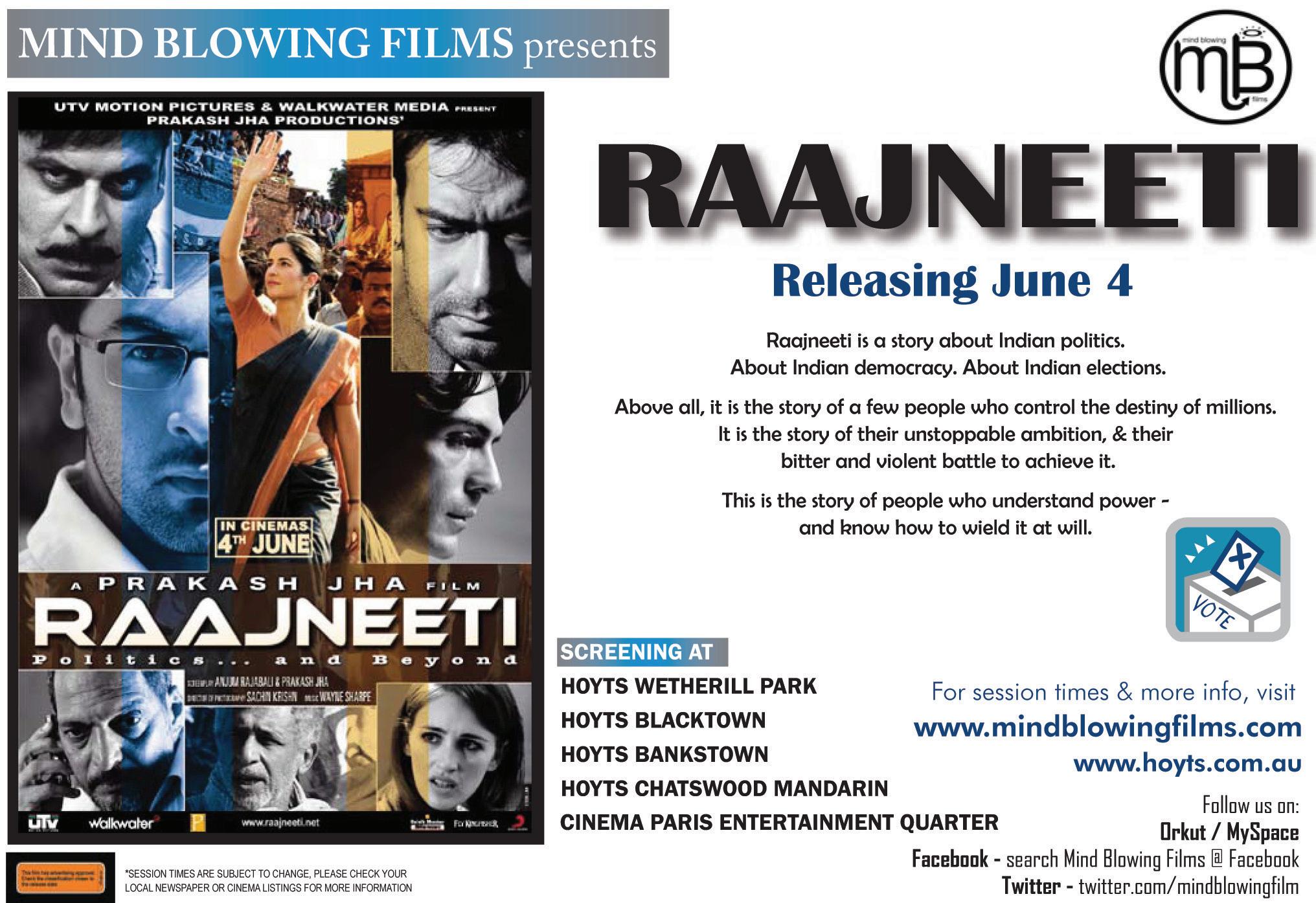
74 <> MAY (2) 2010 INDIAN LINK











































 Usha Arvind
Usha Arvind





























































































































 BY SAROJA SRINIVASAN
BY SAROJA SRINIVASAN






































 BY PREETI JABBAL
BY PREETI JABBAL





























